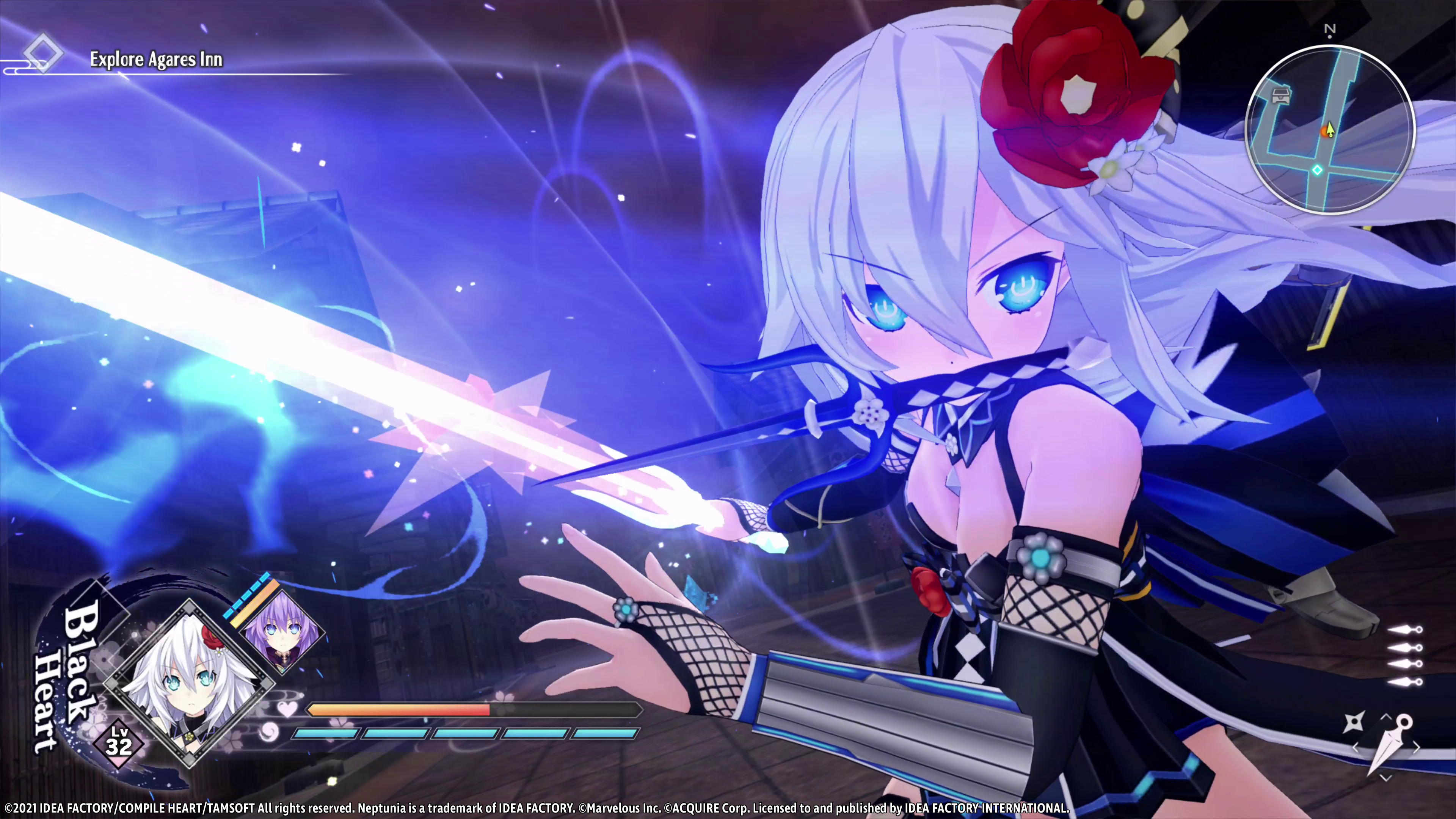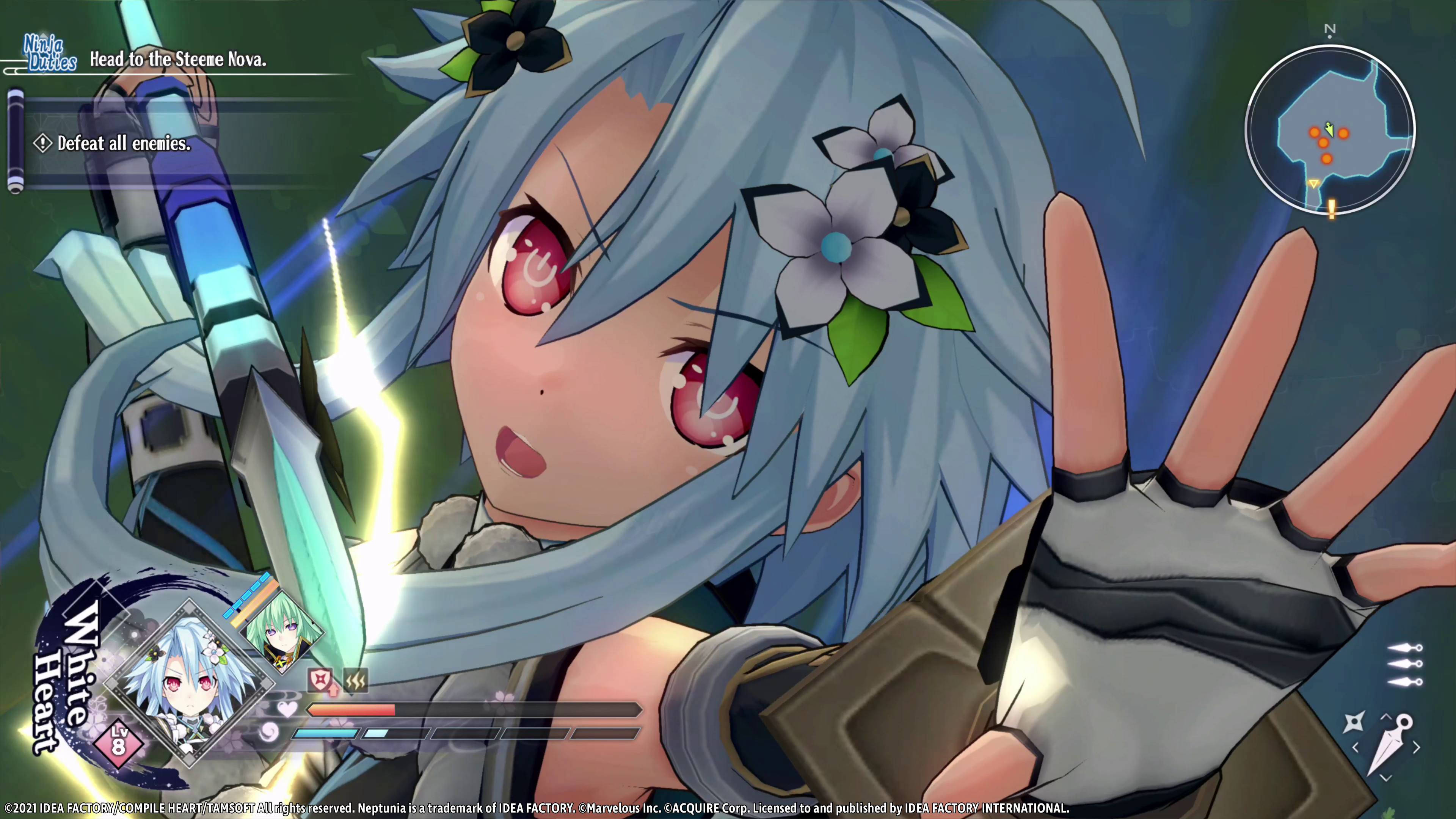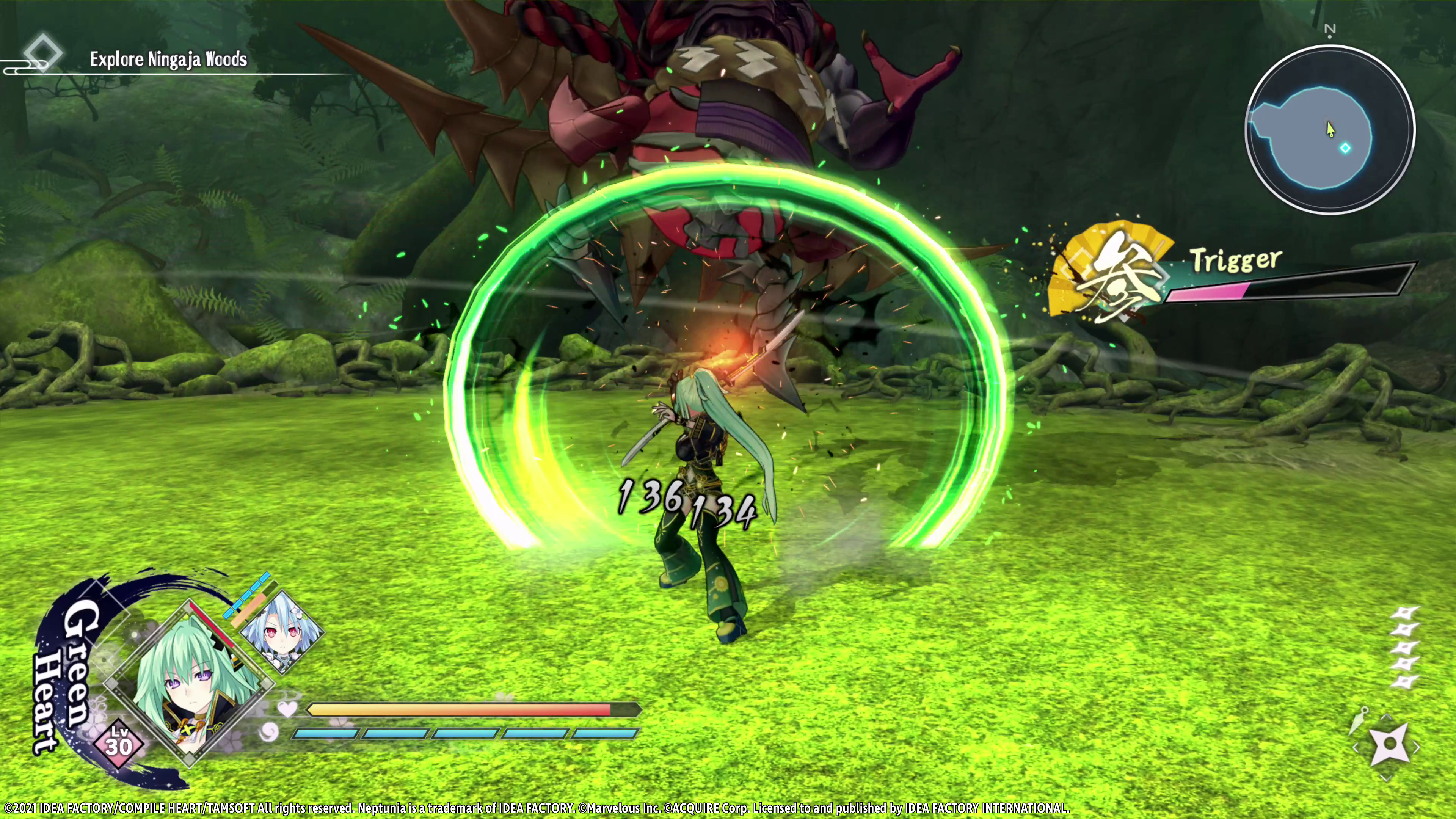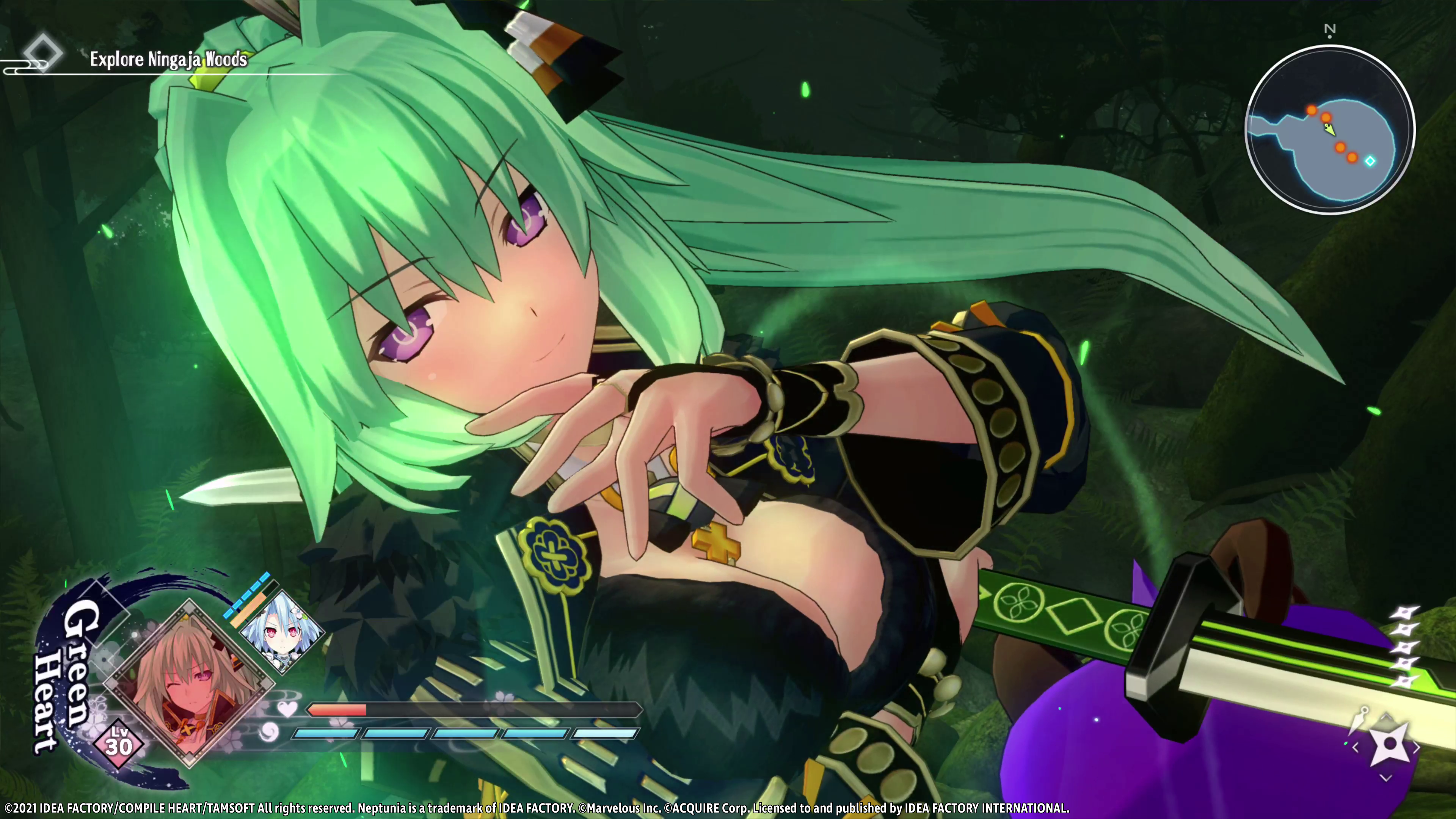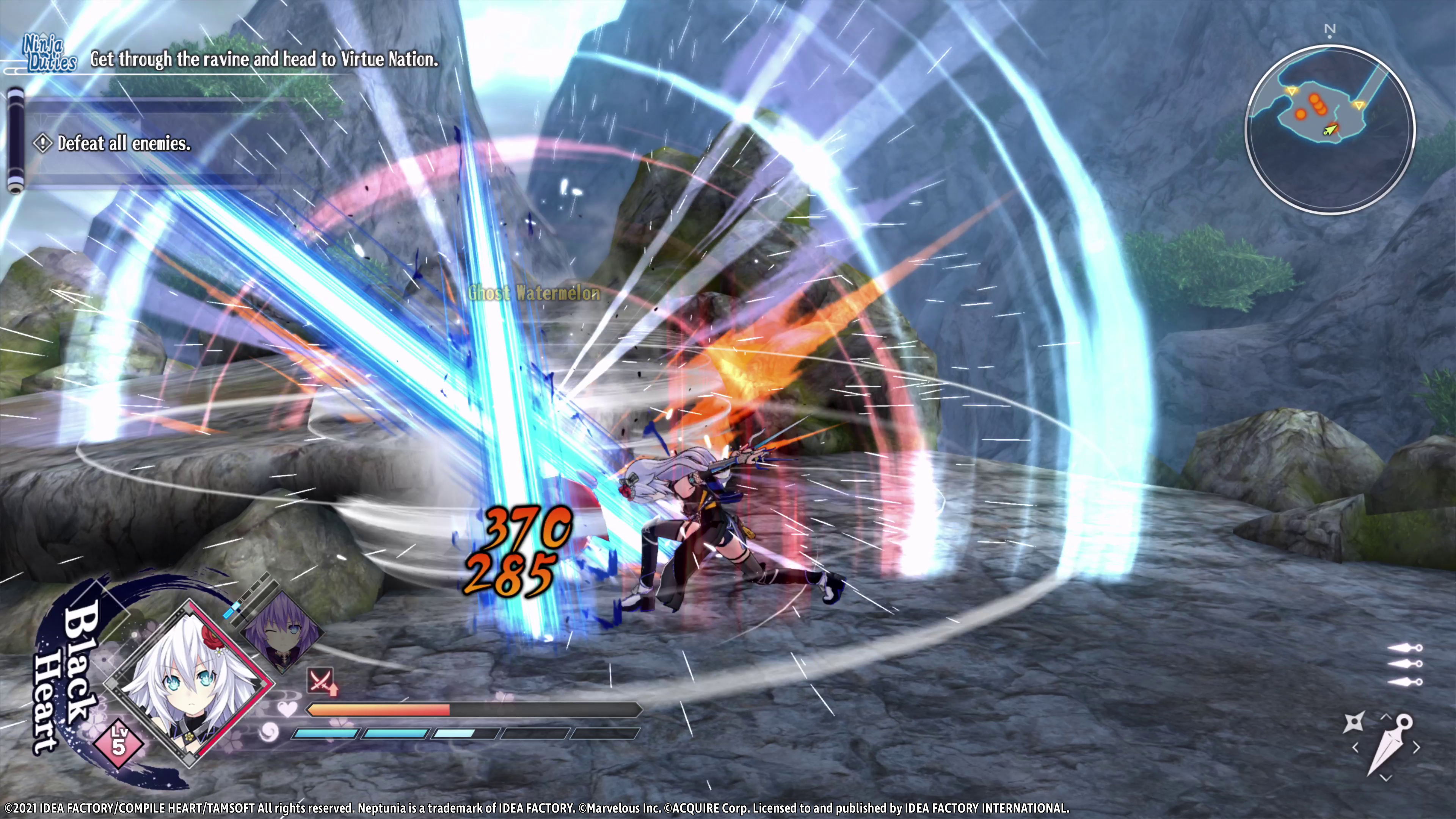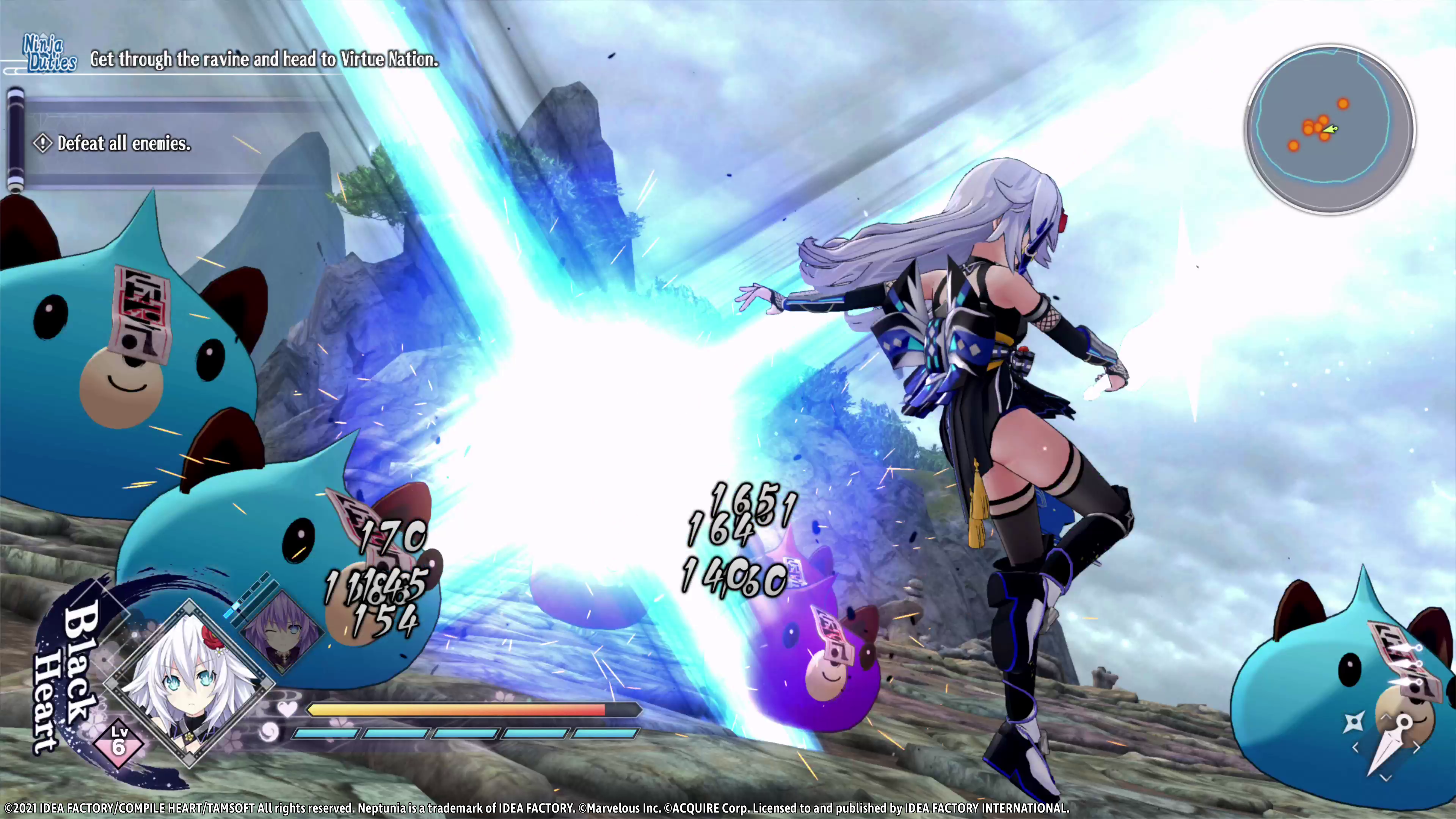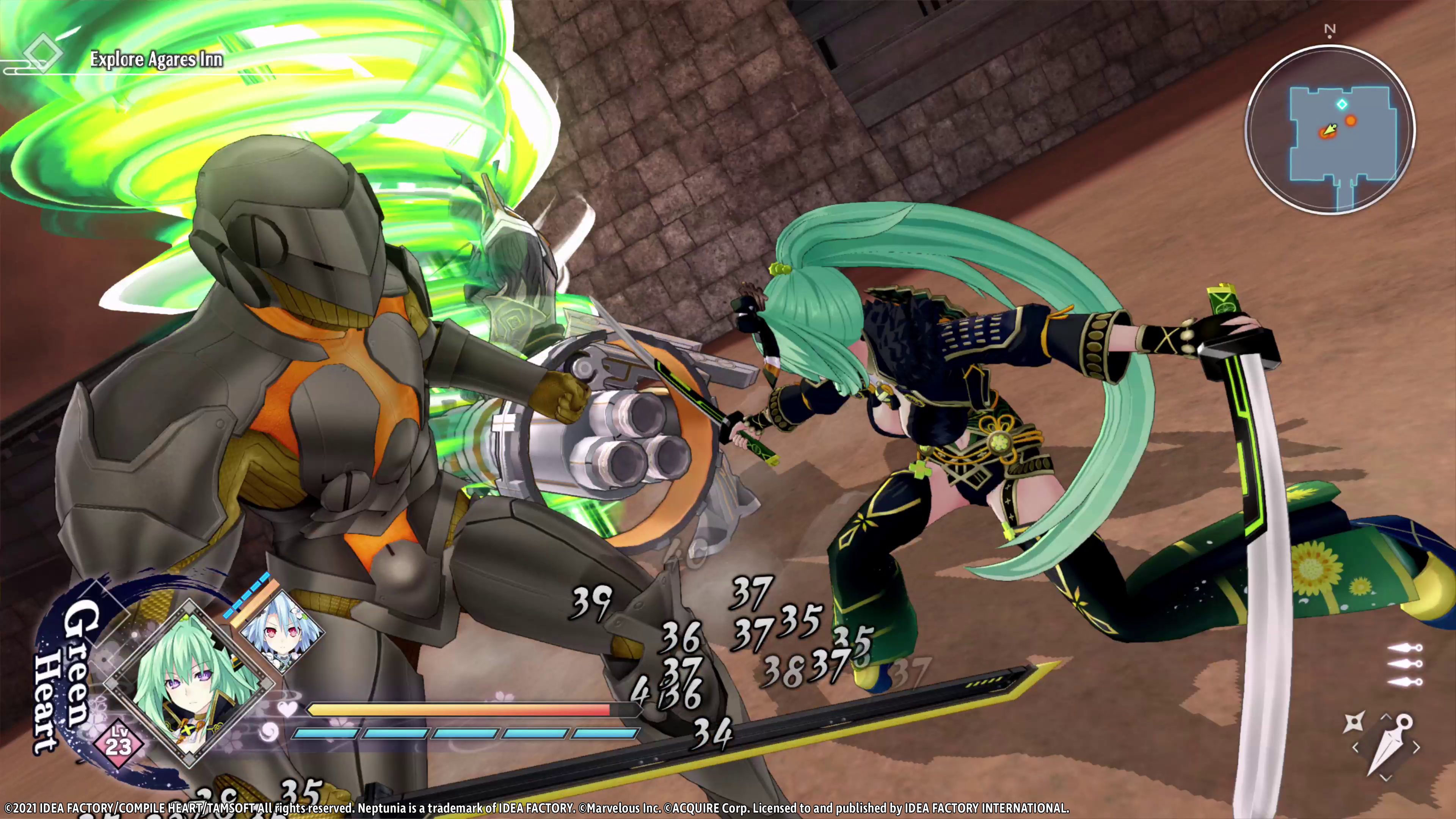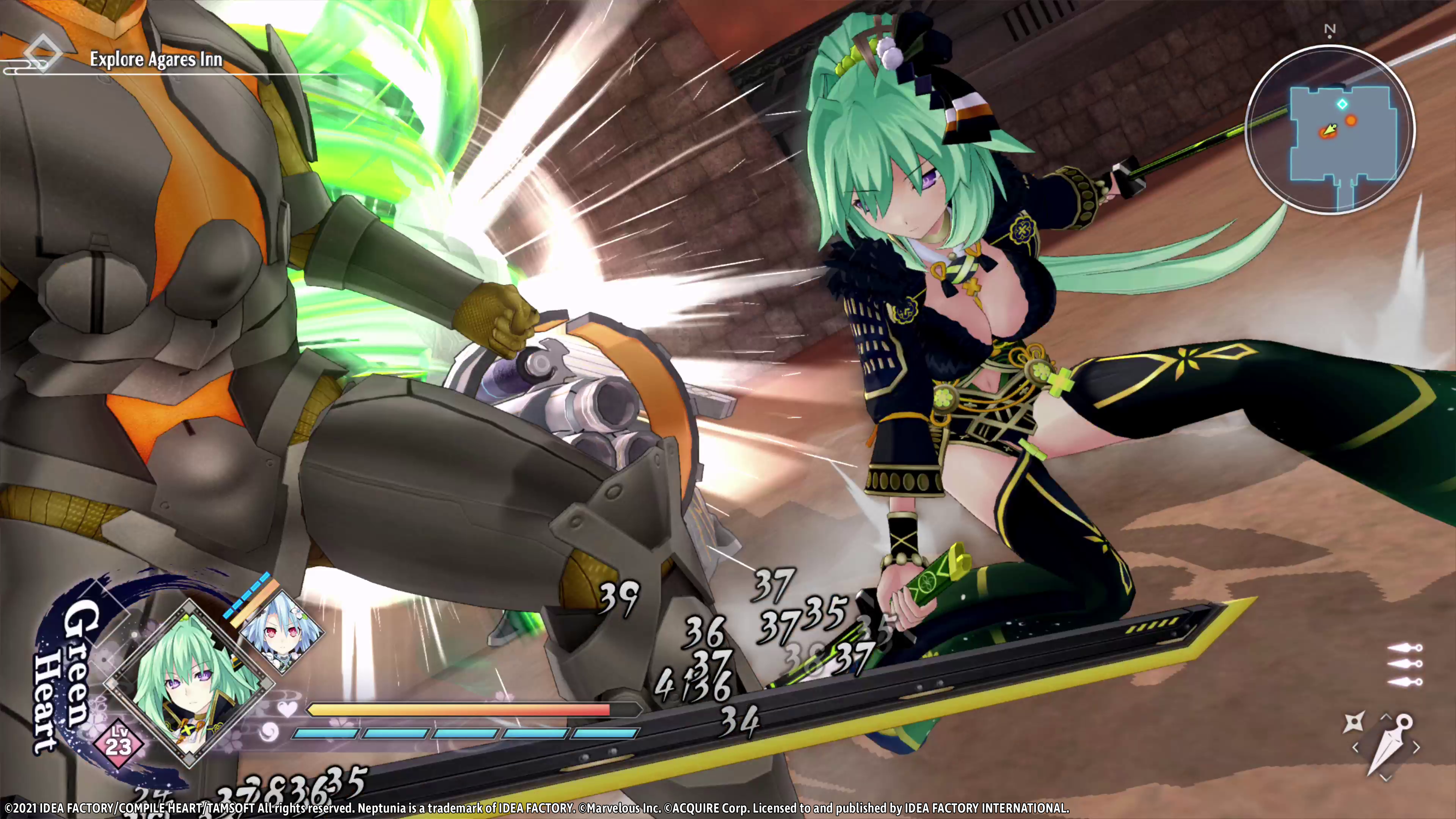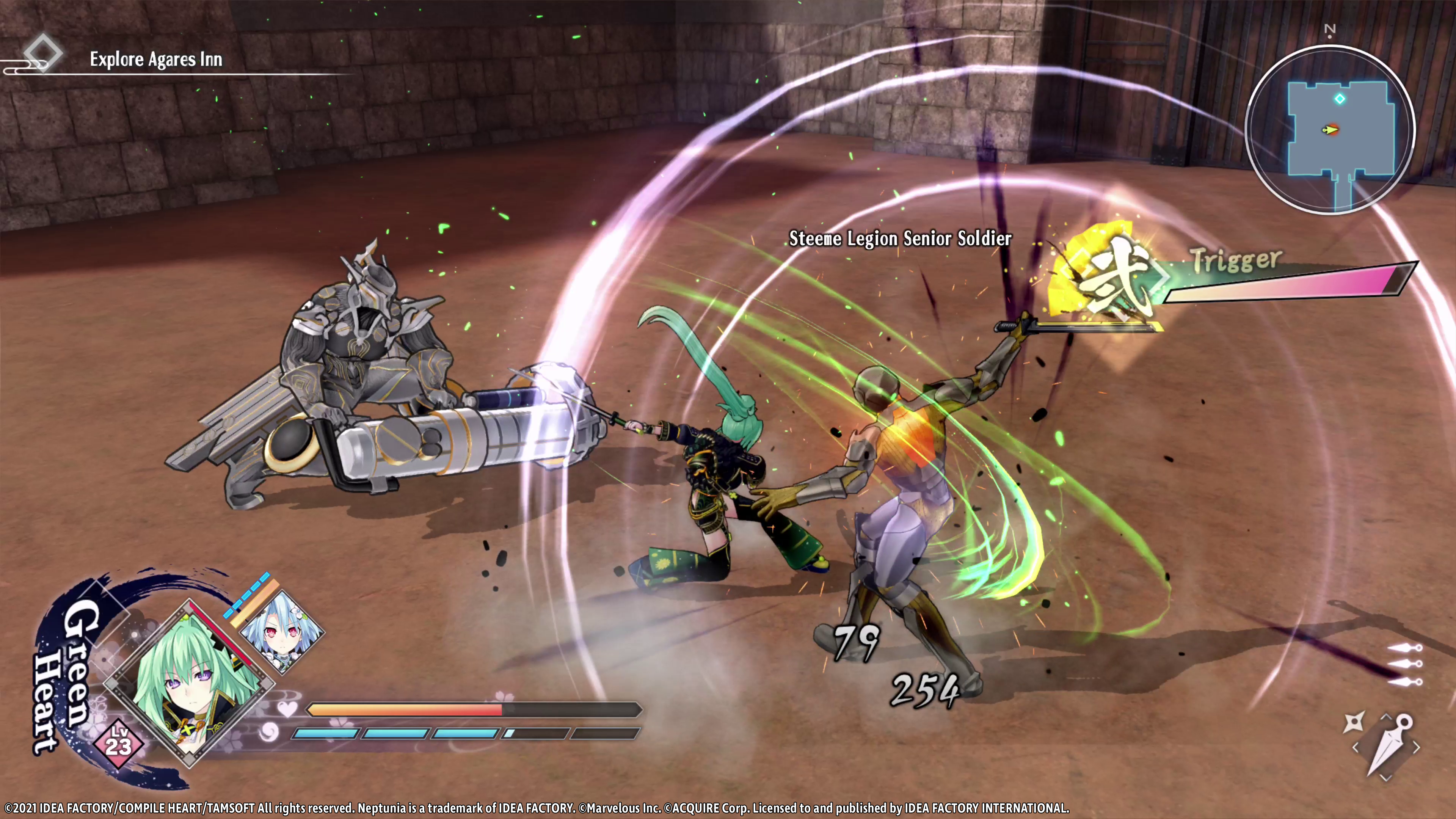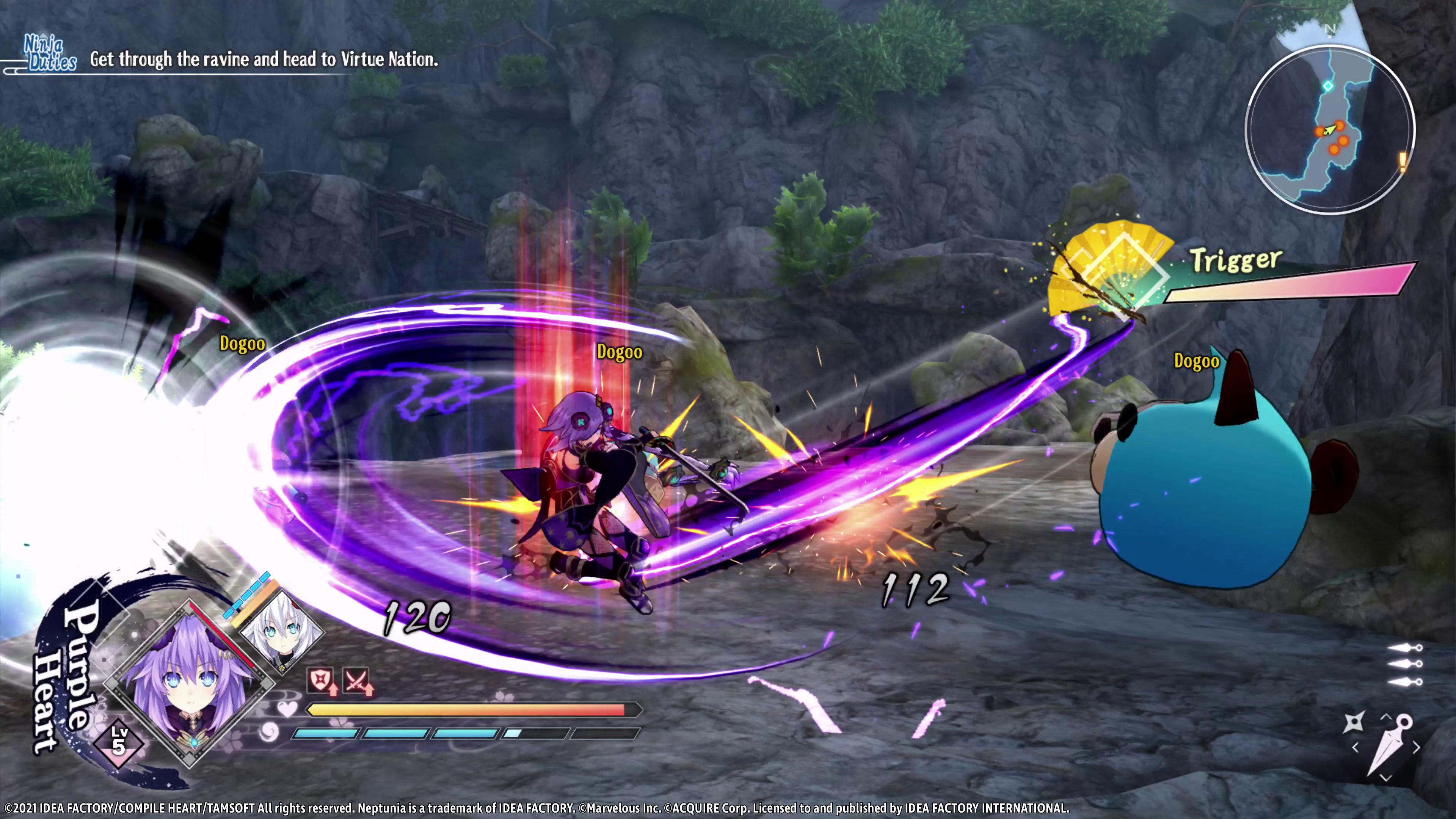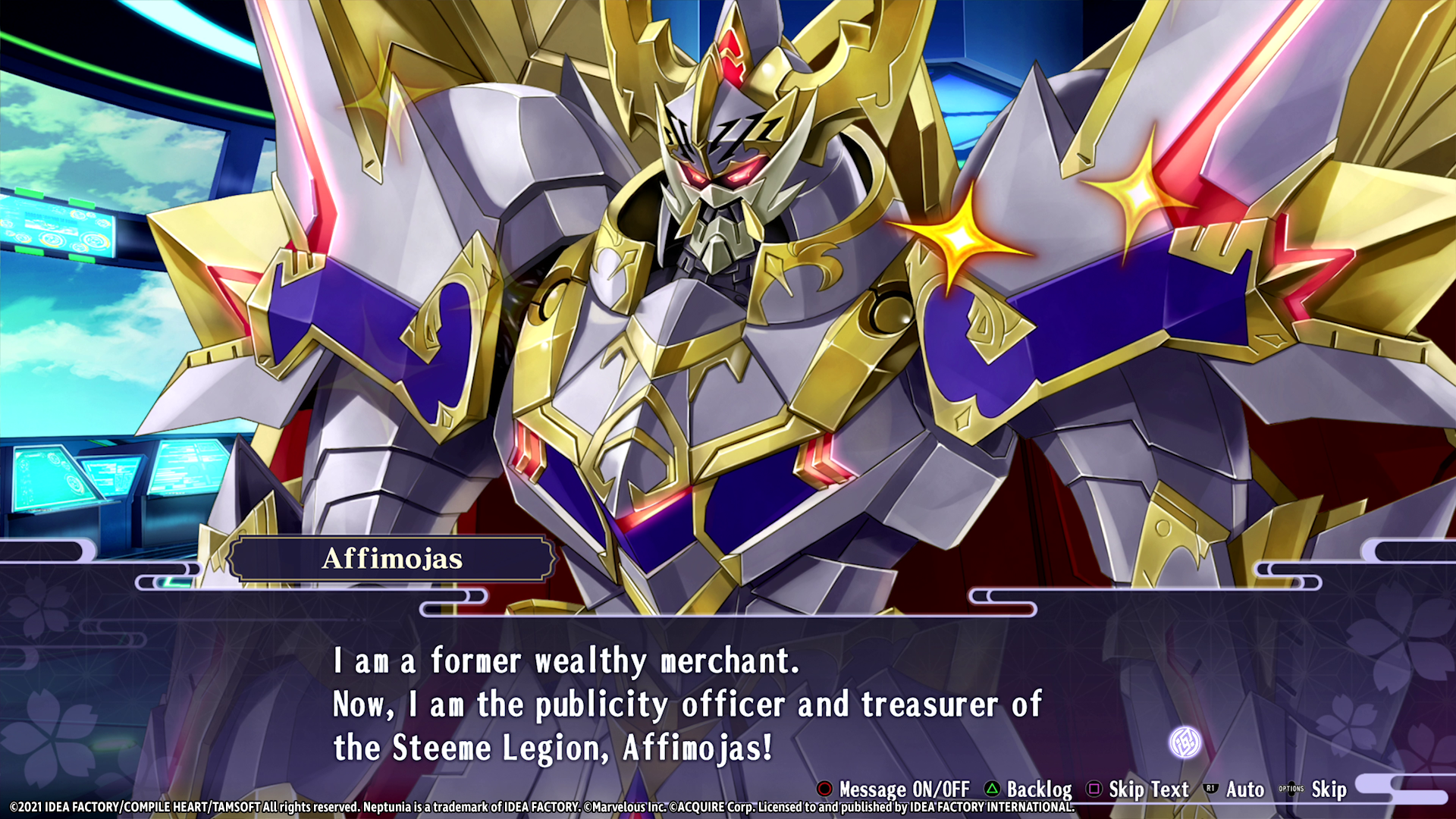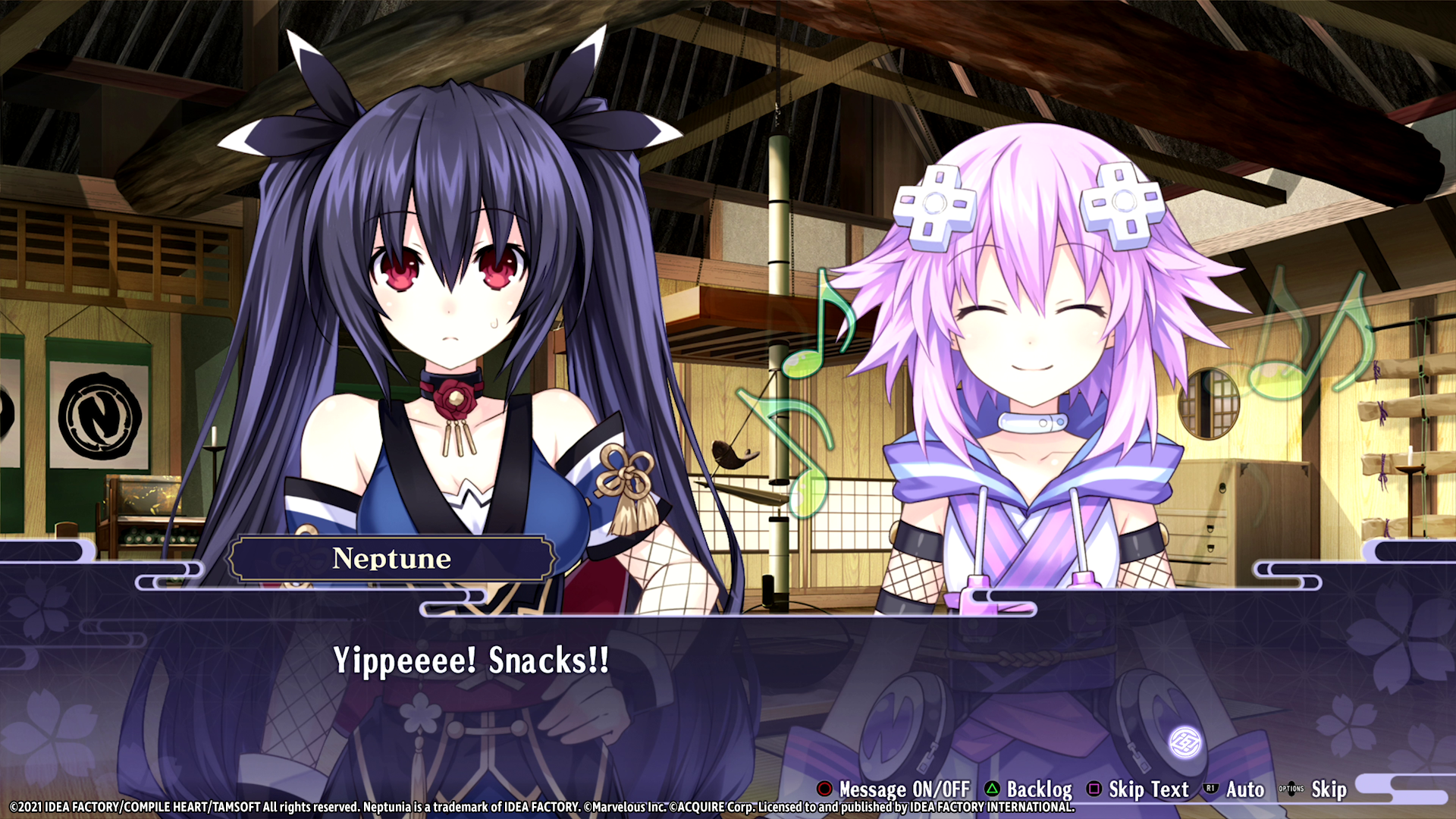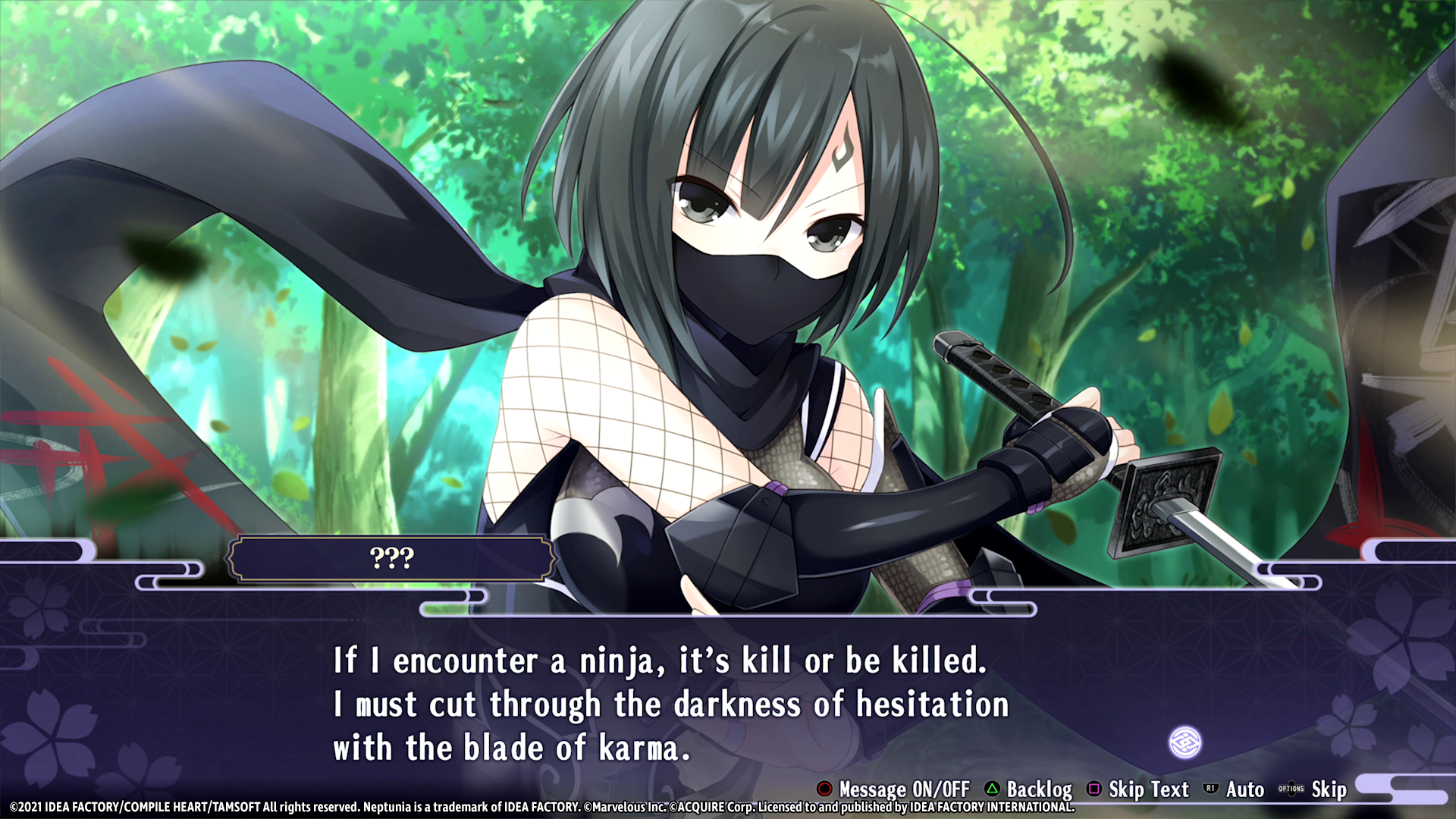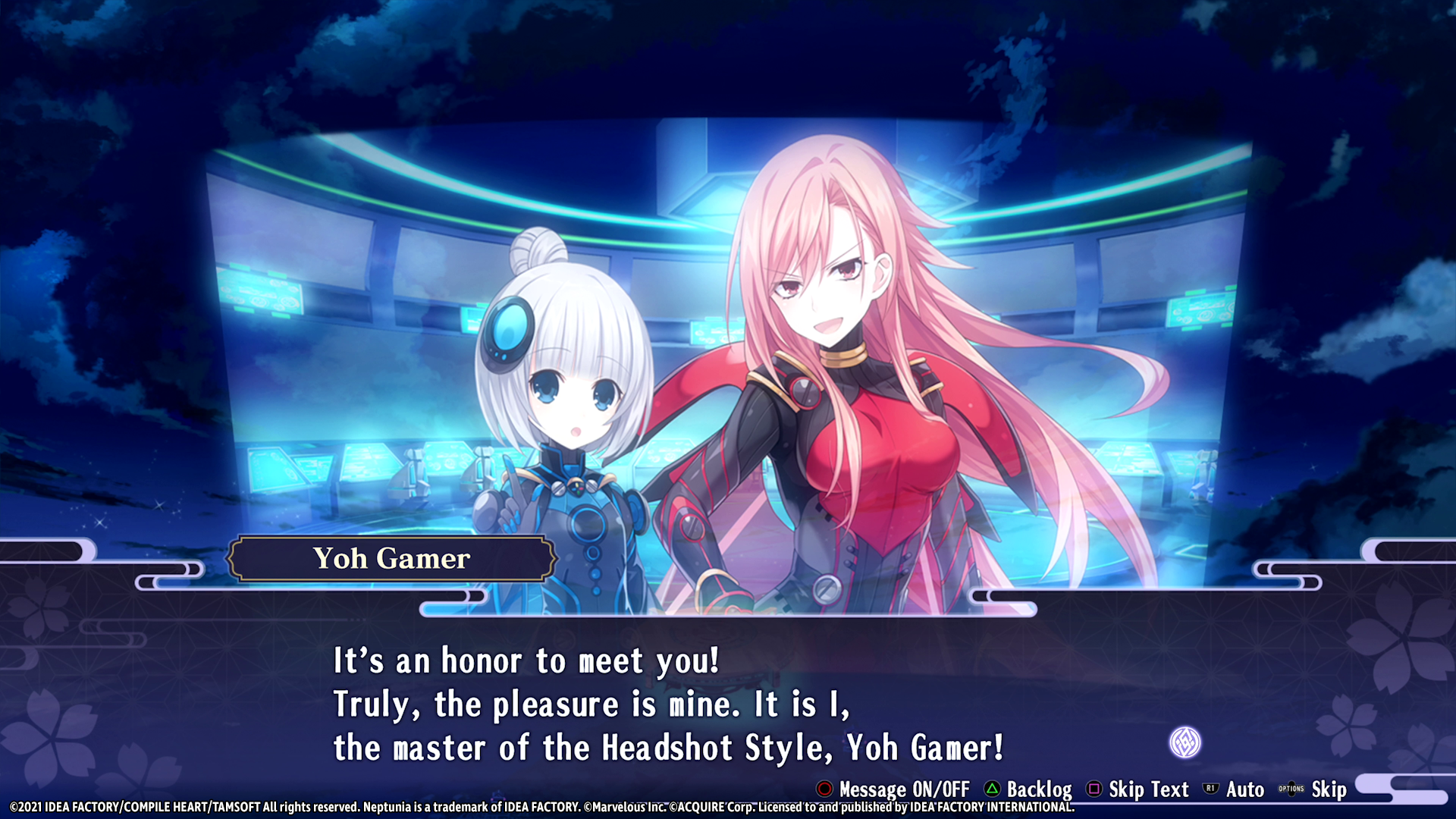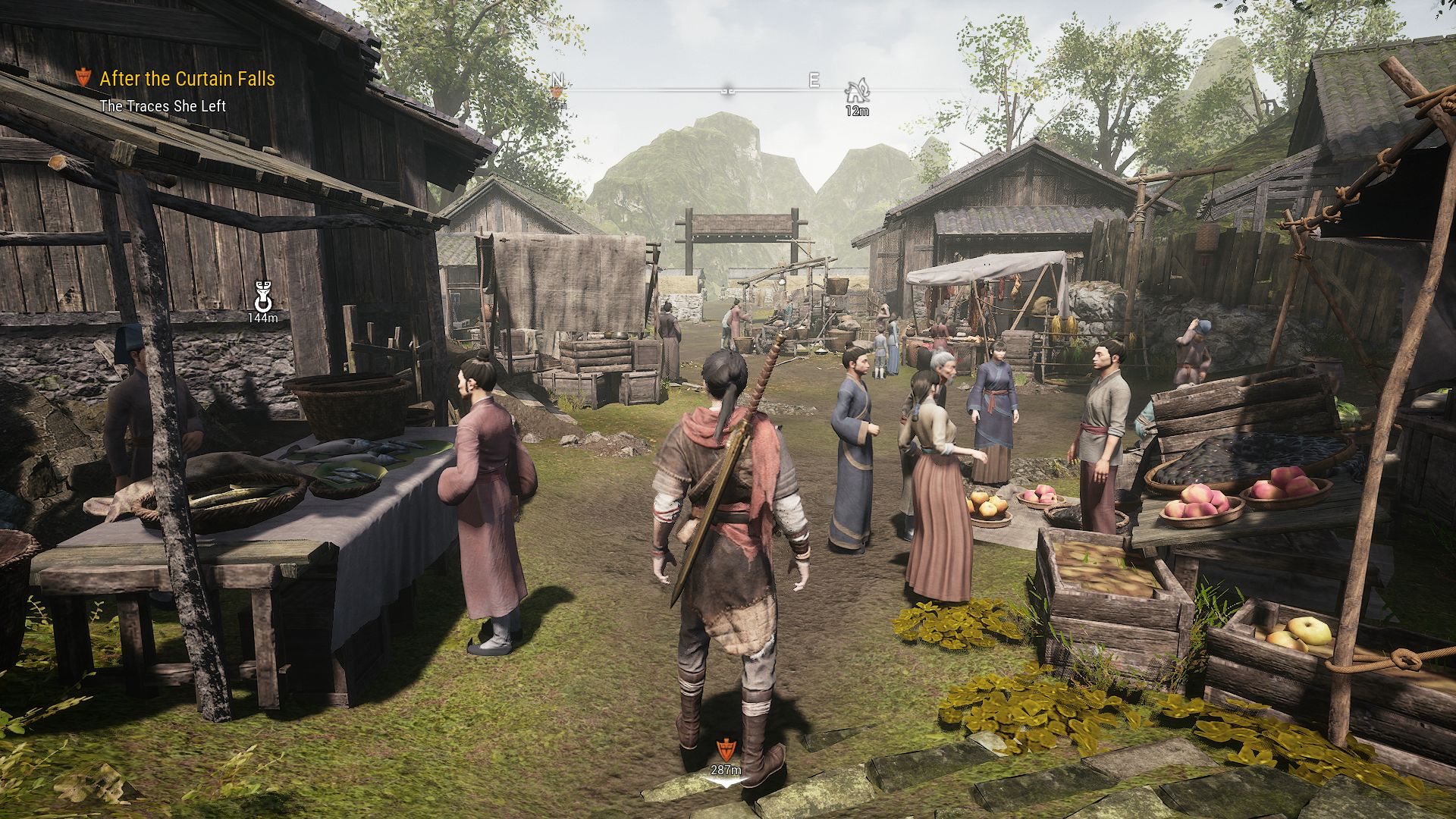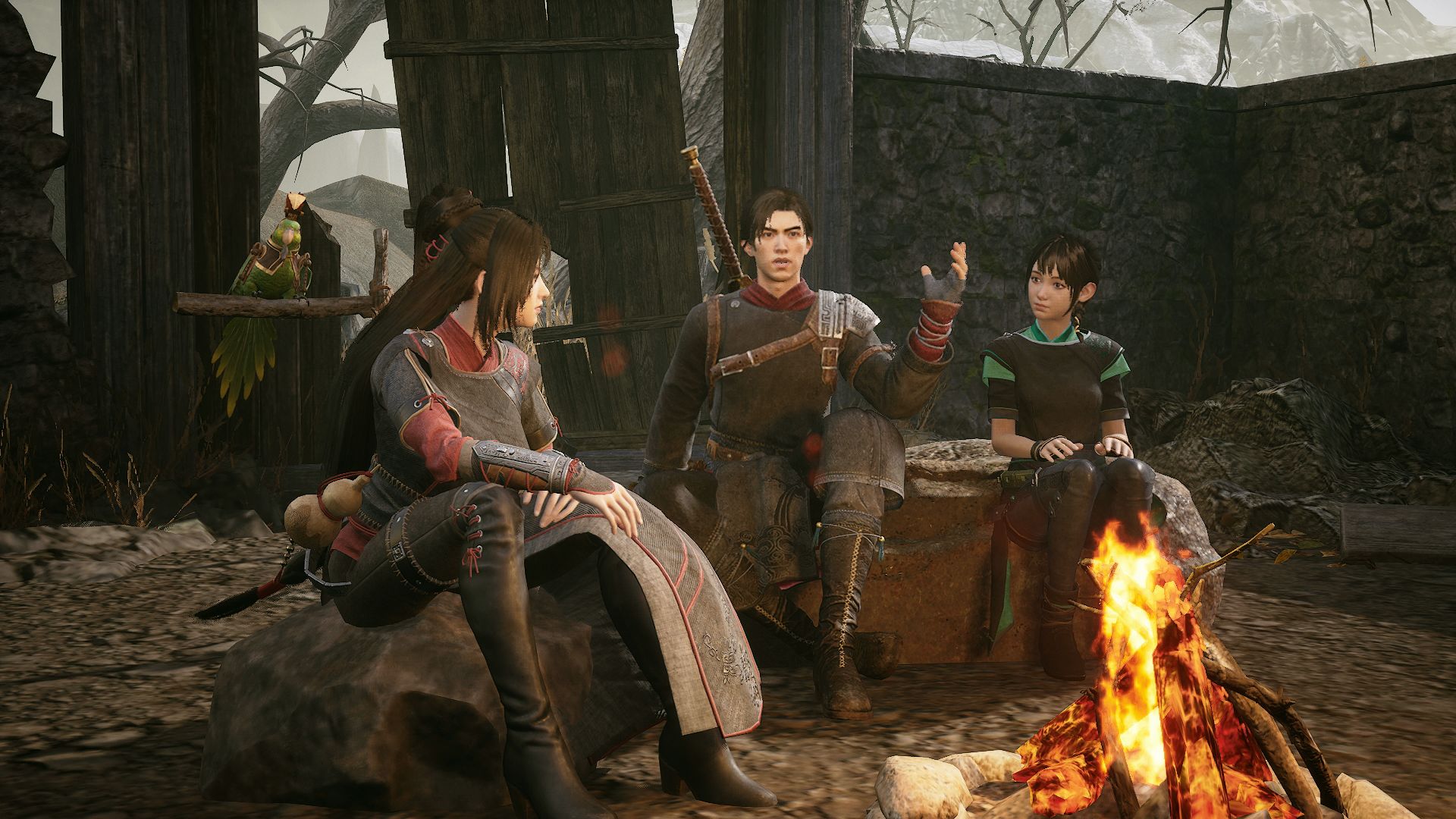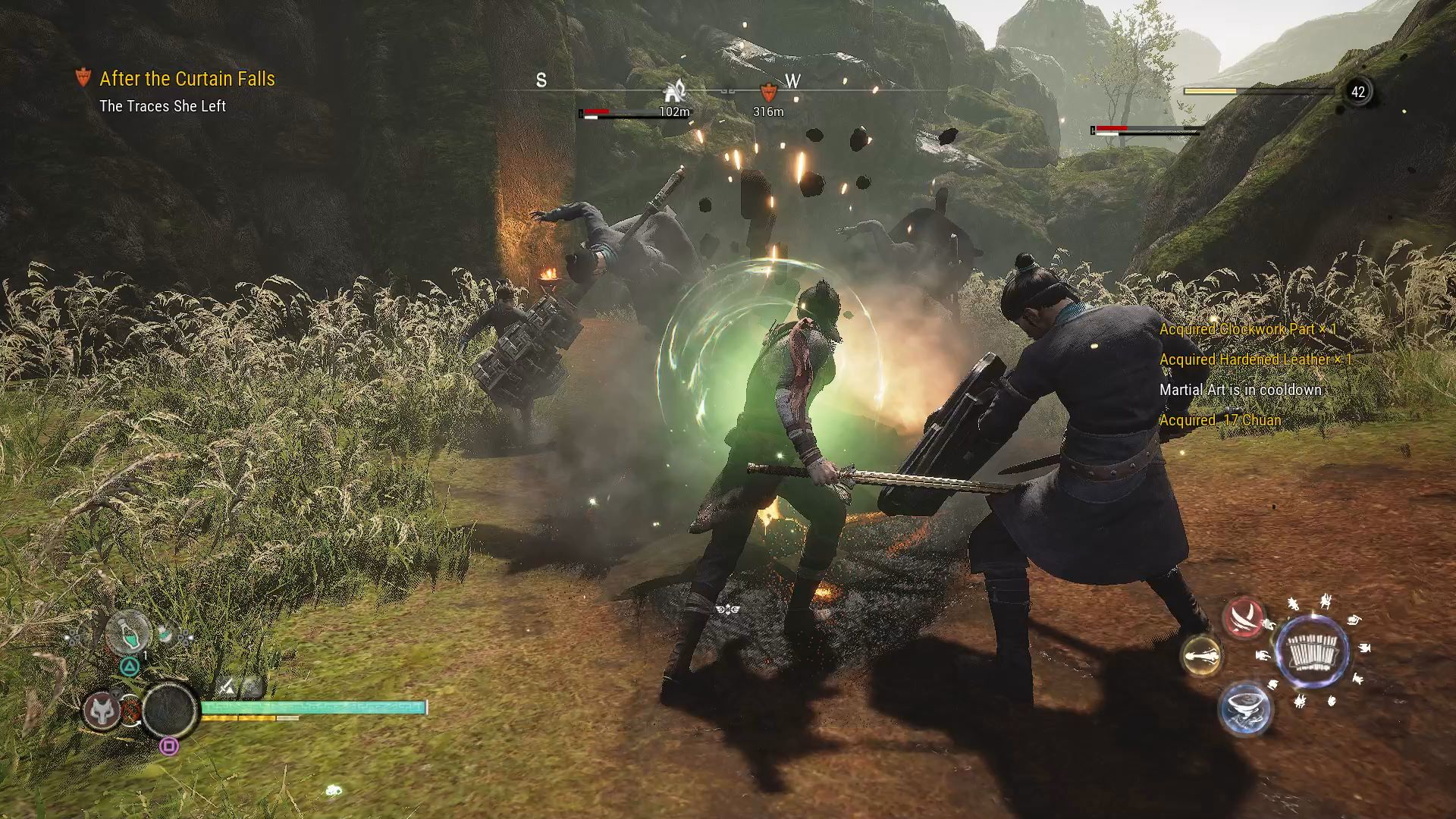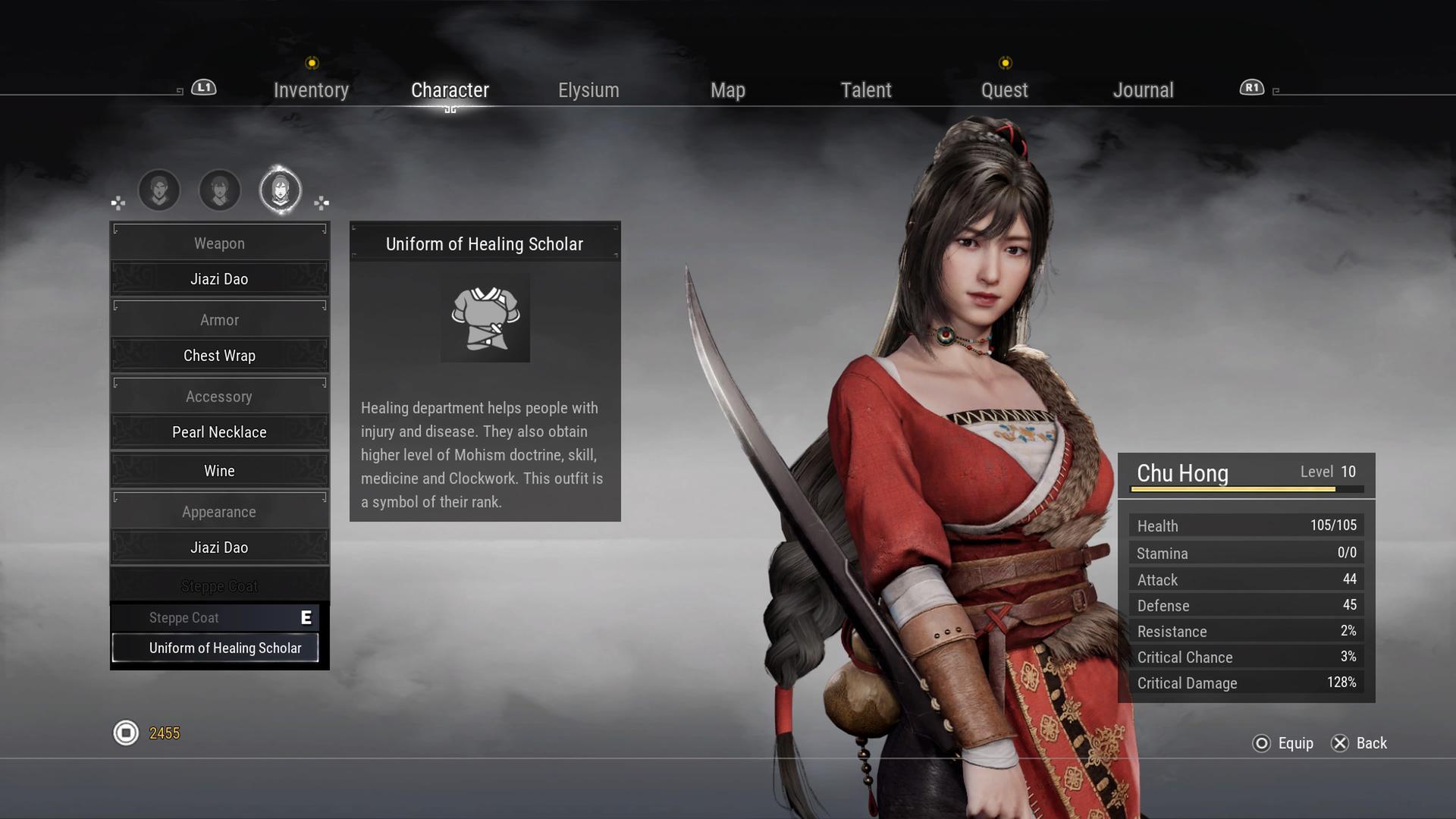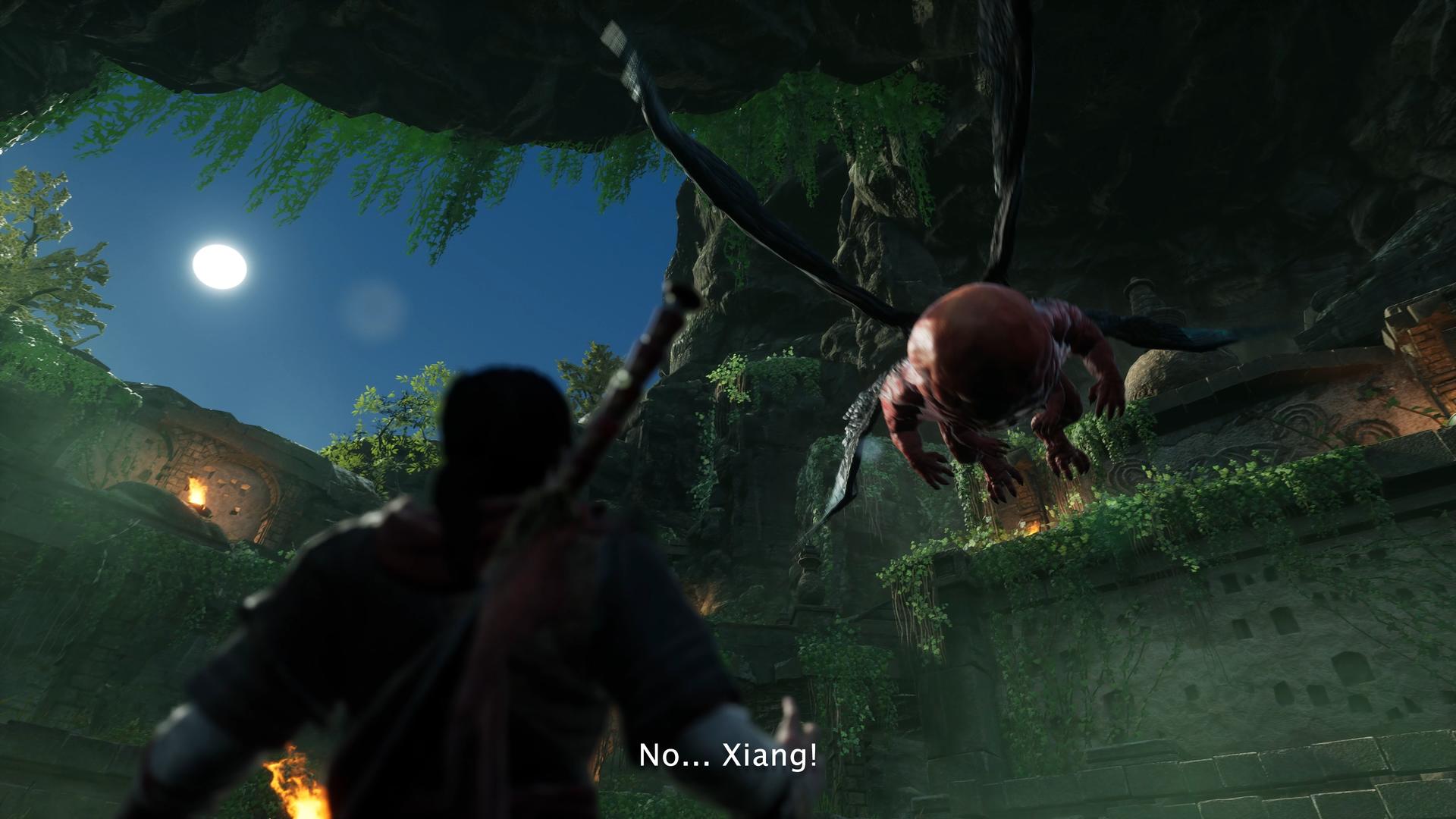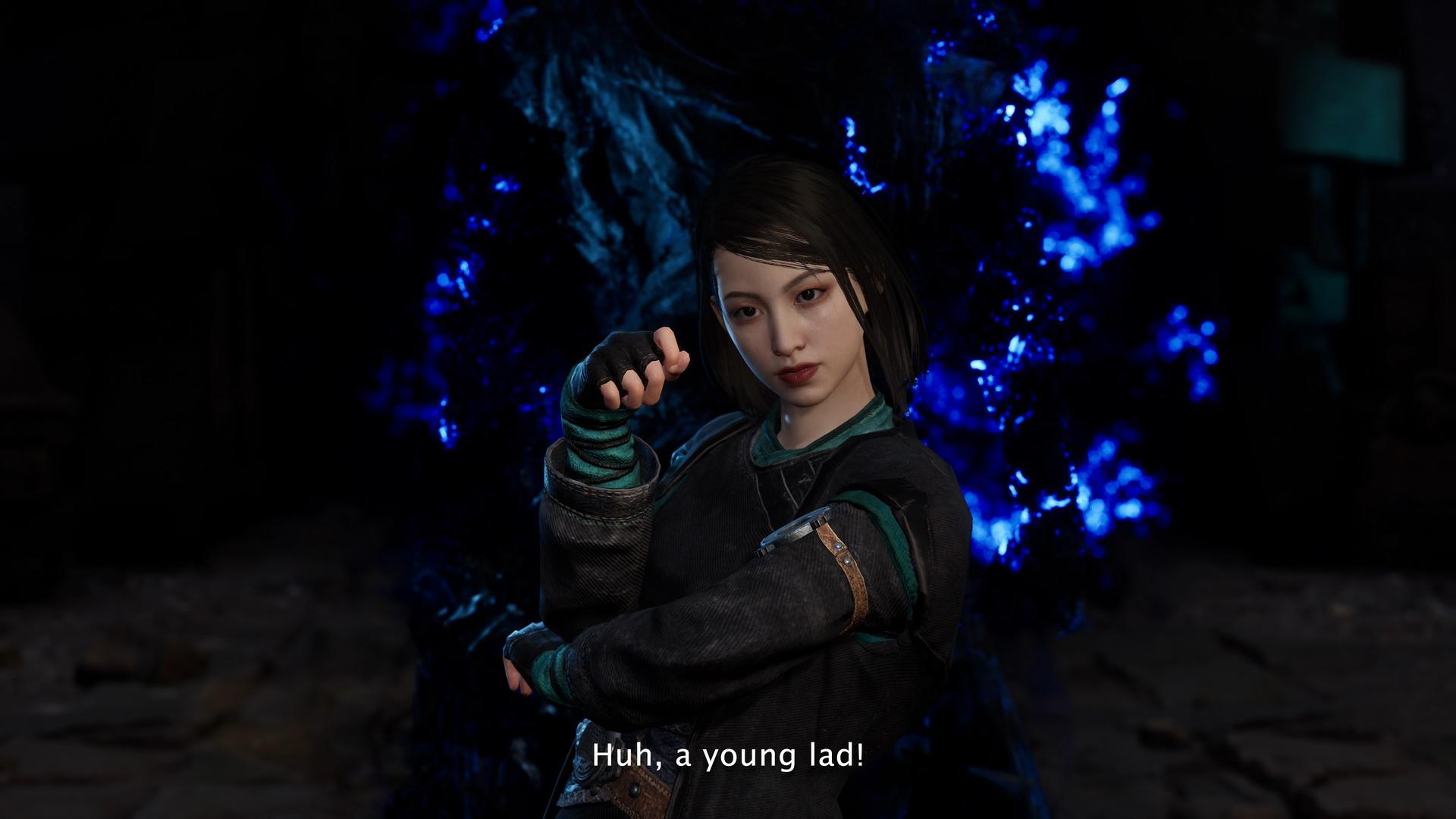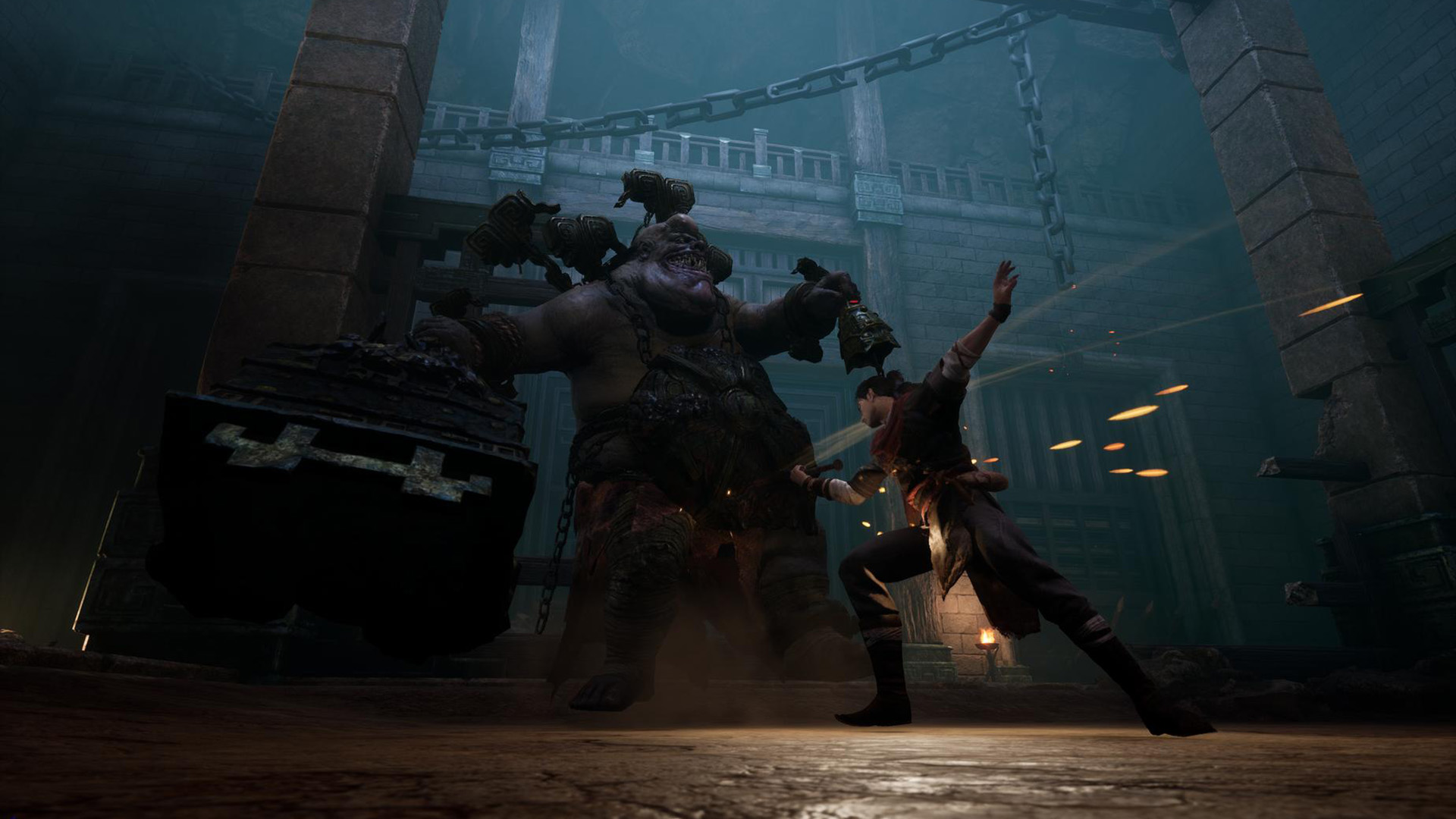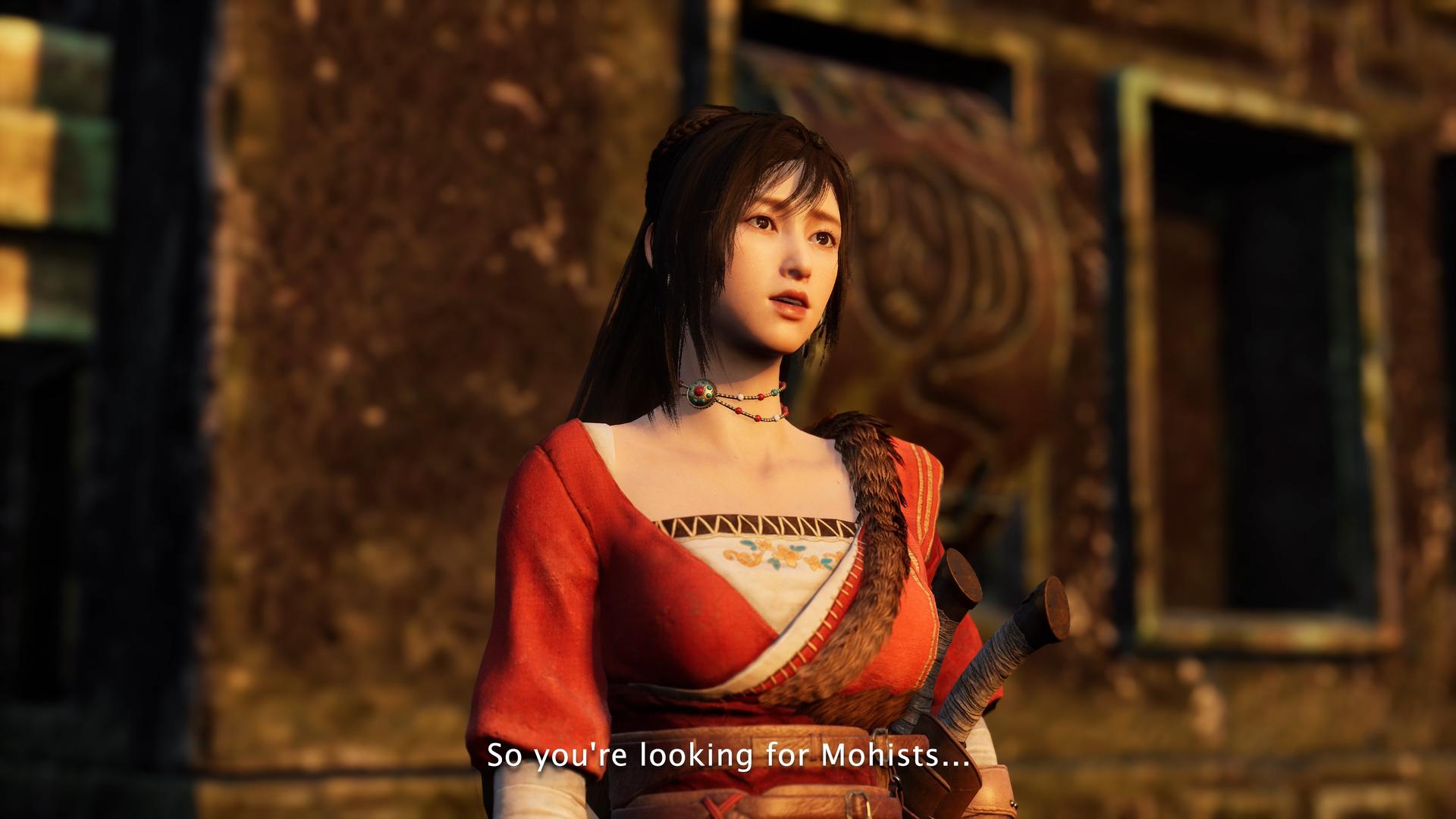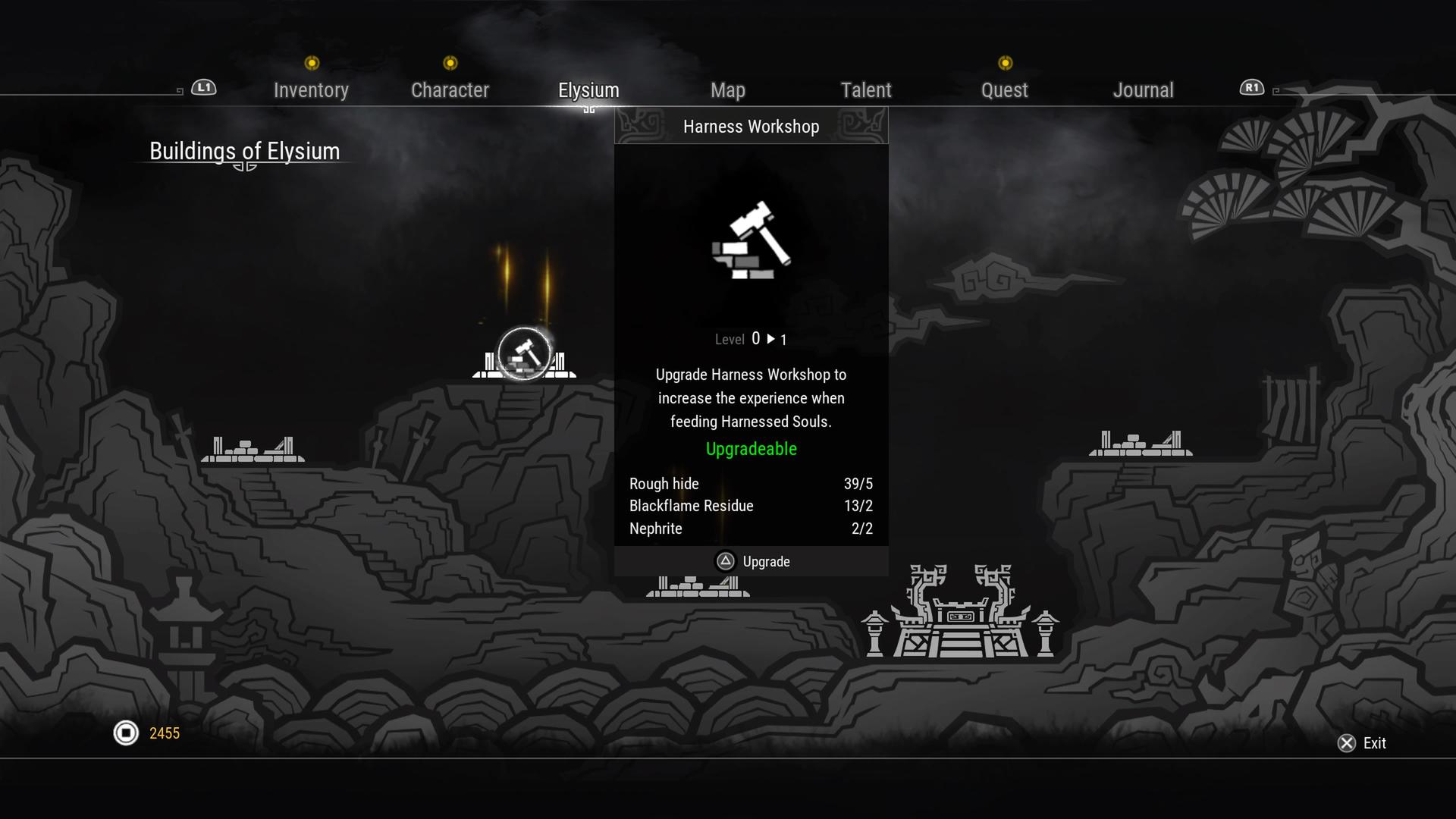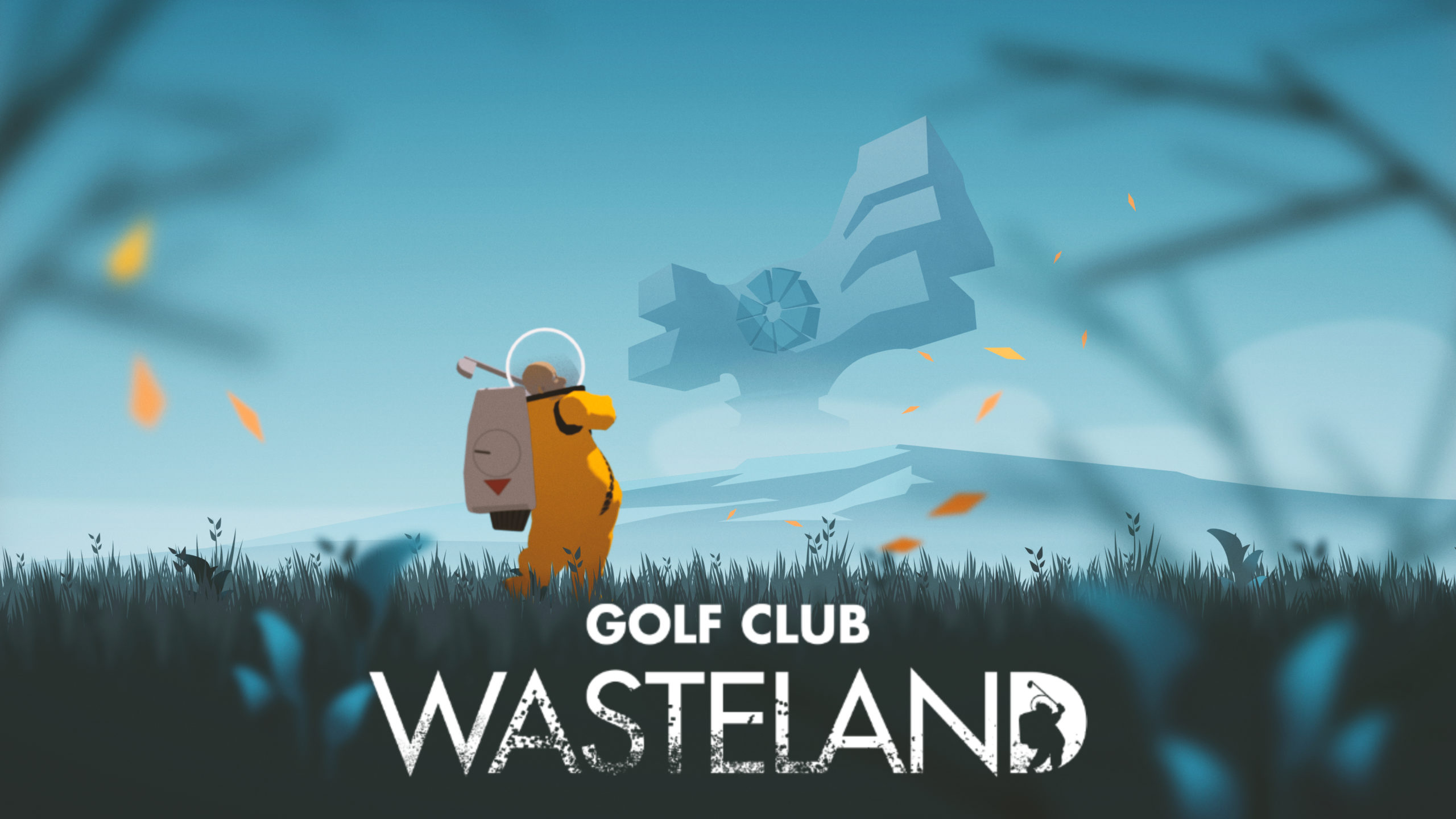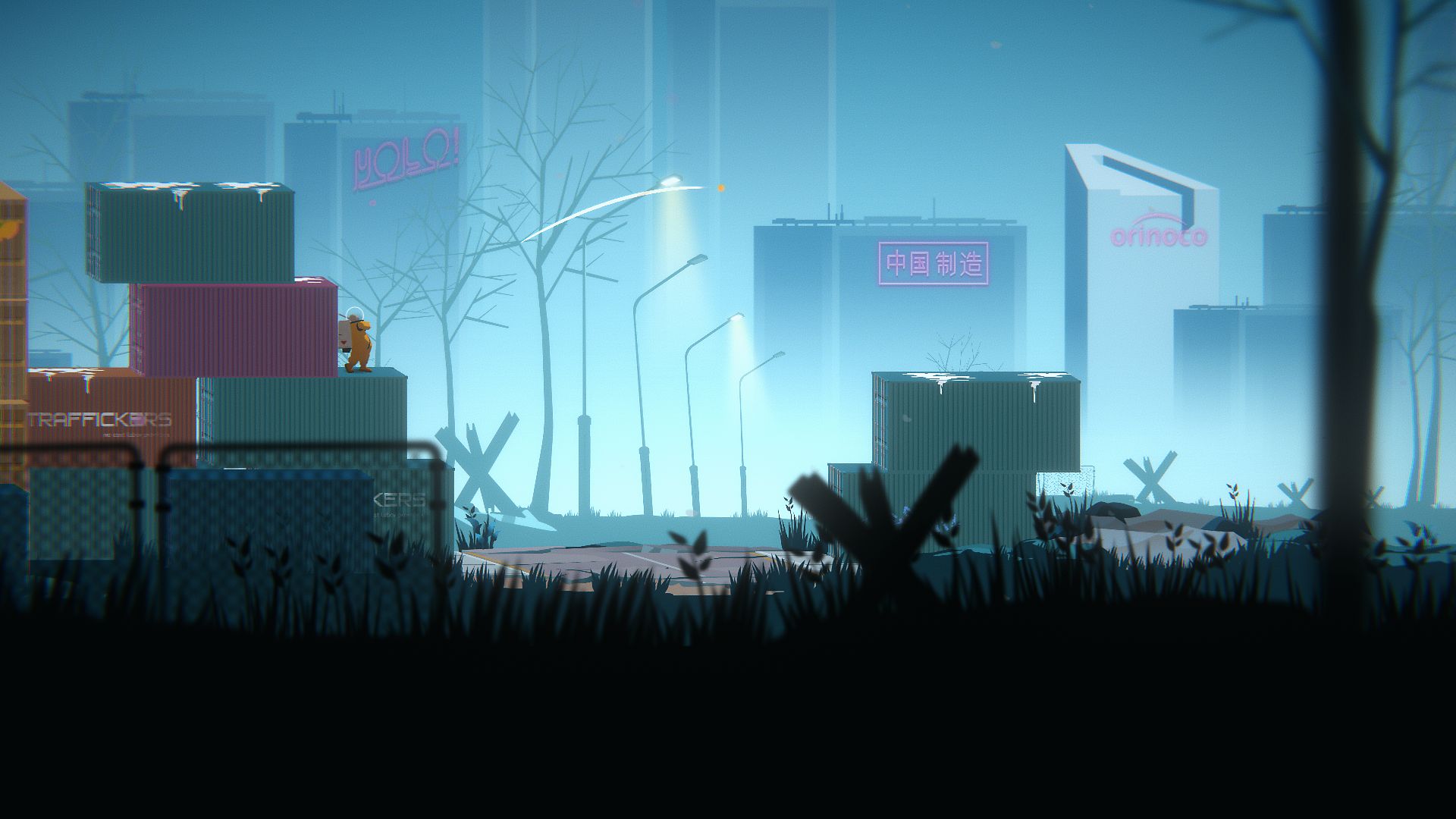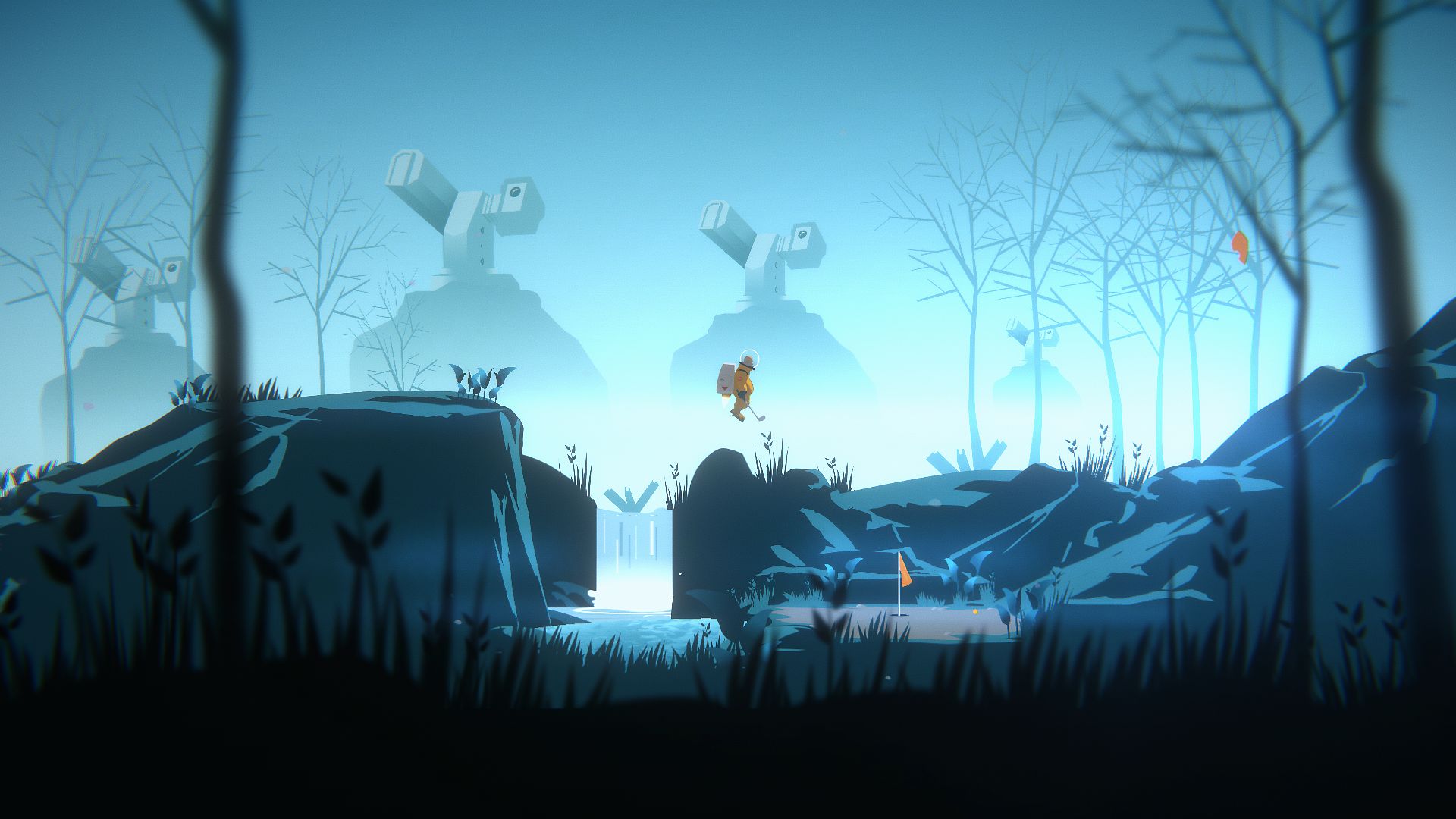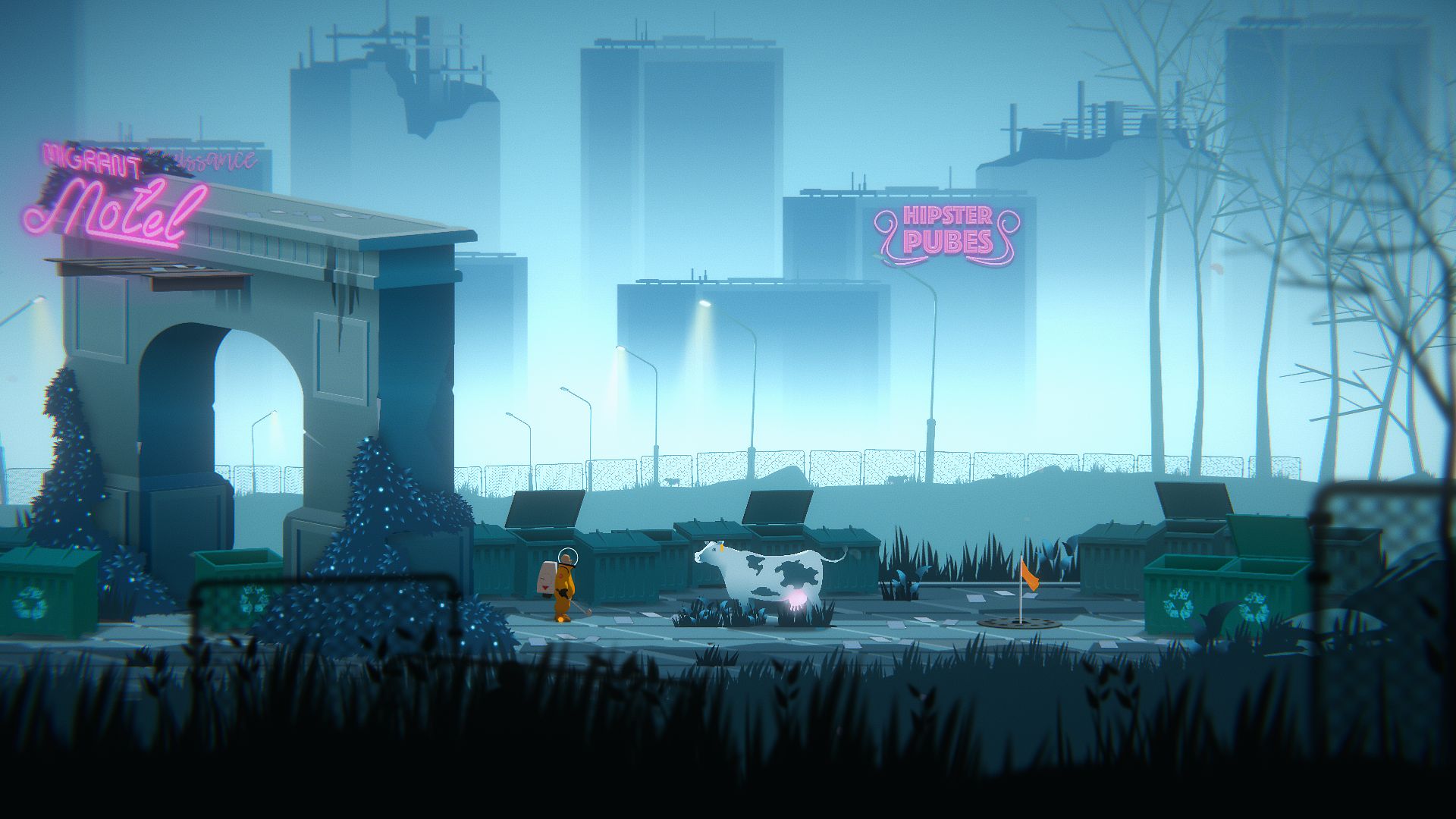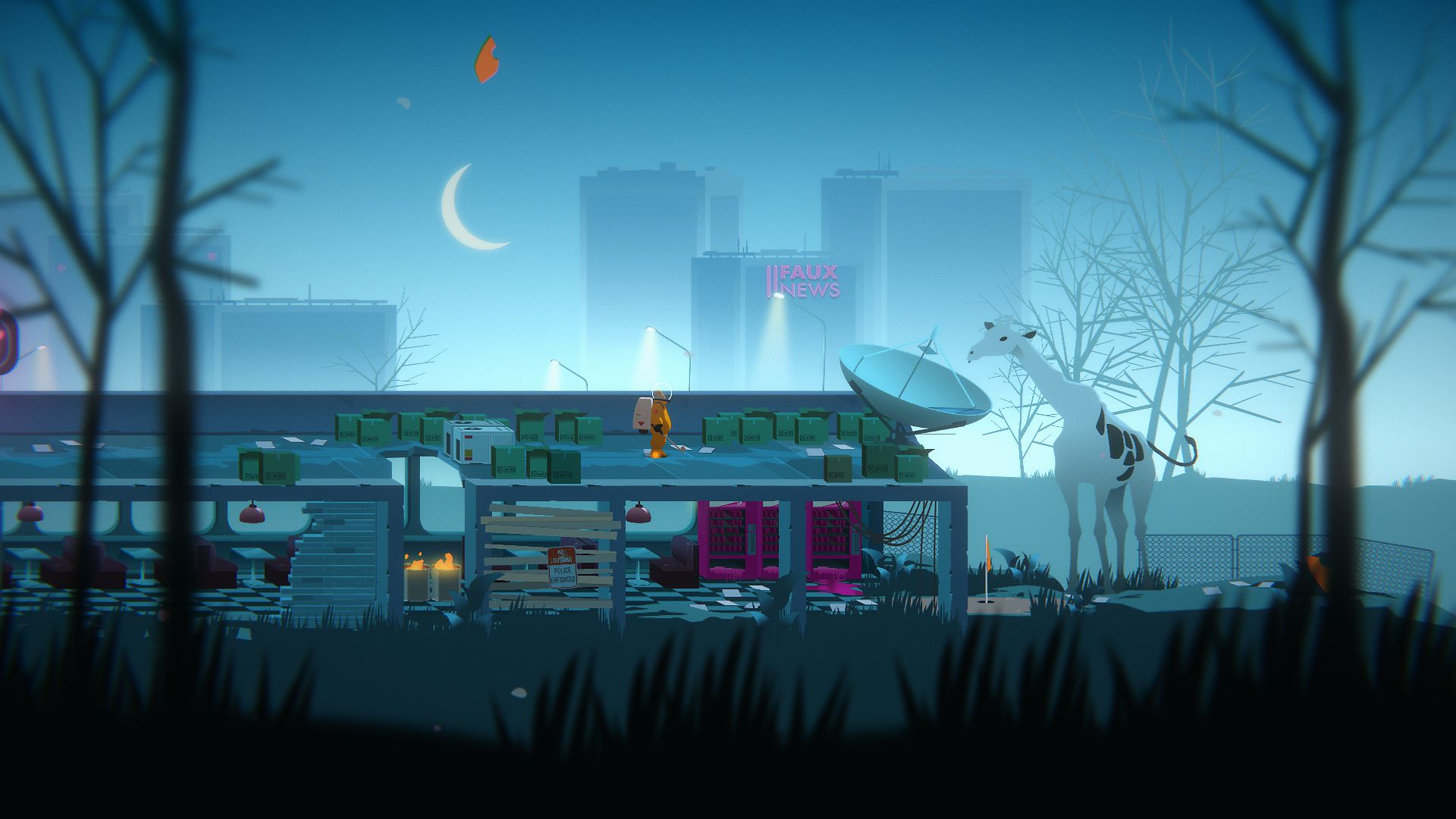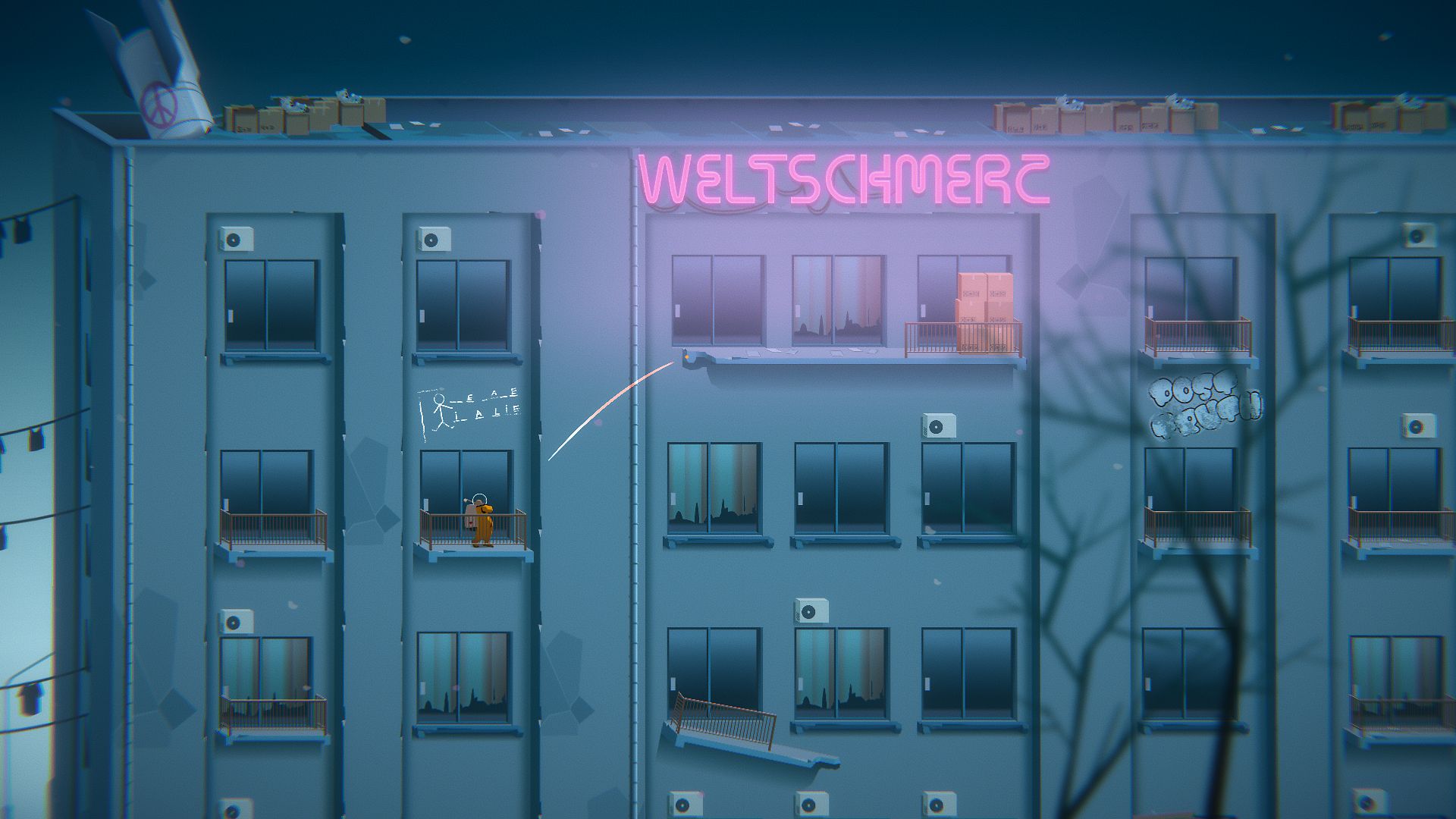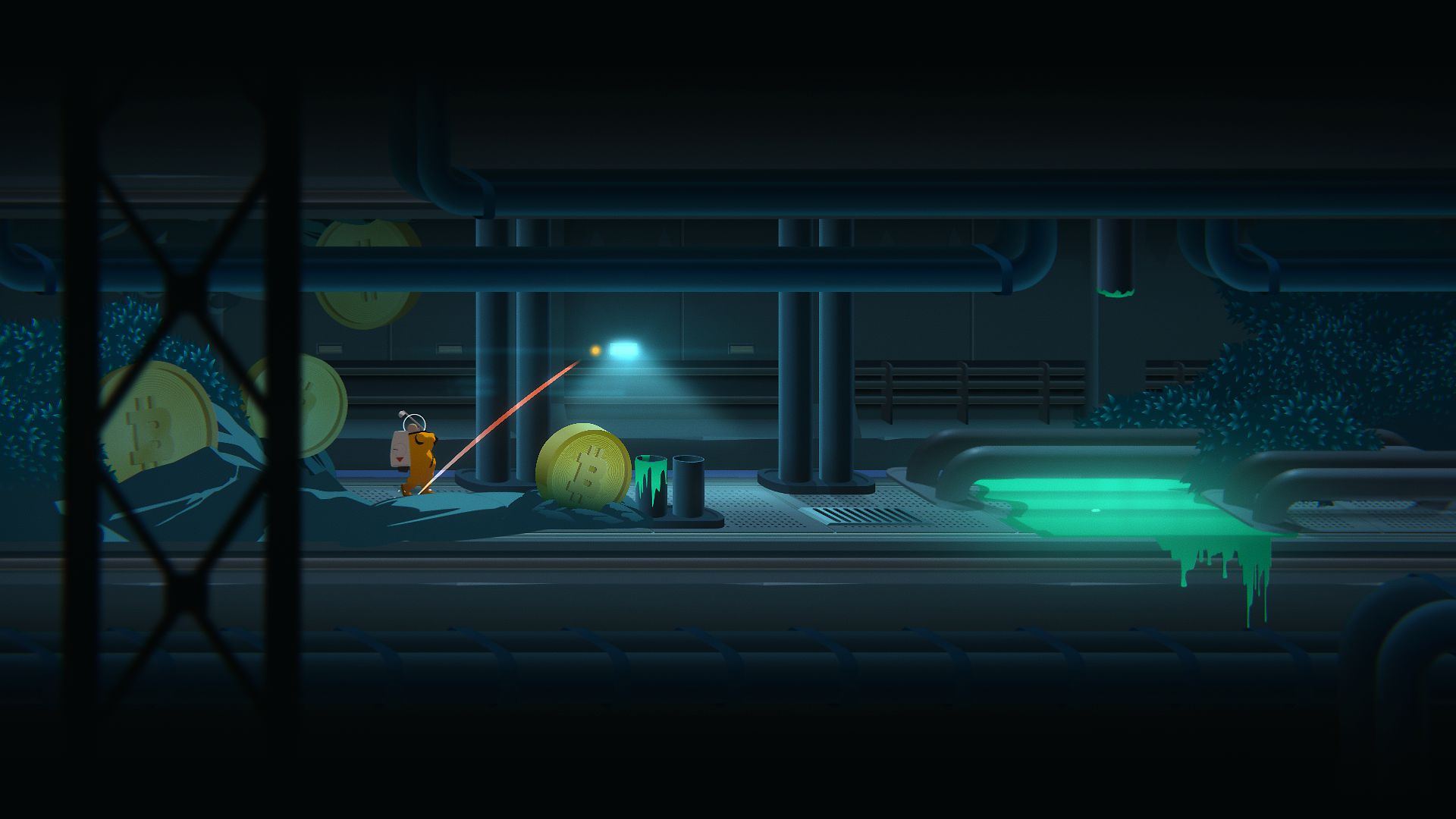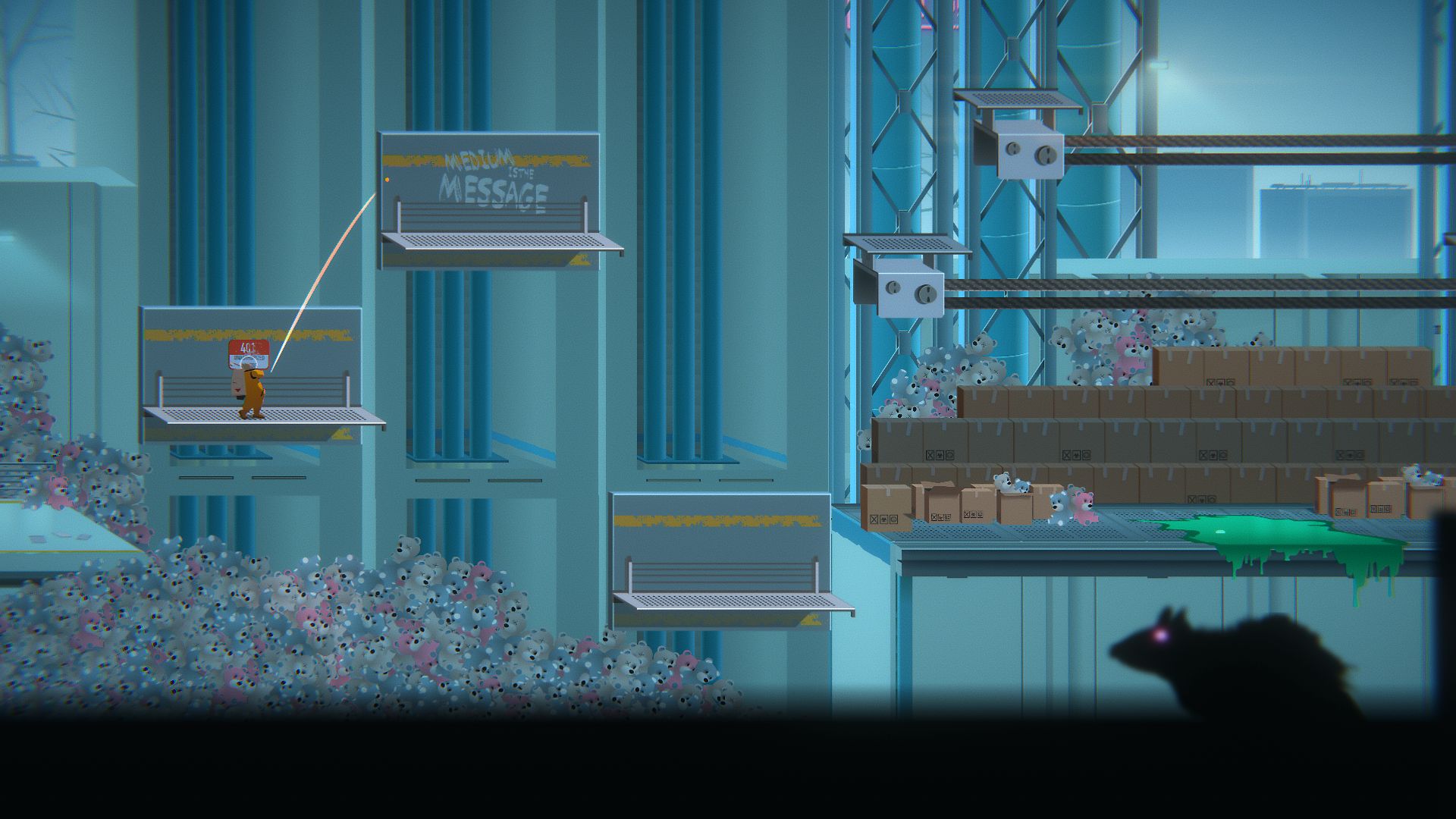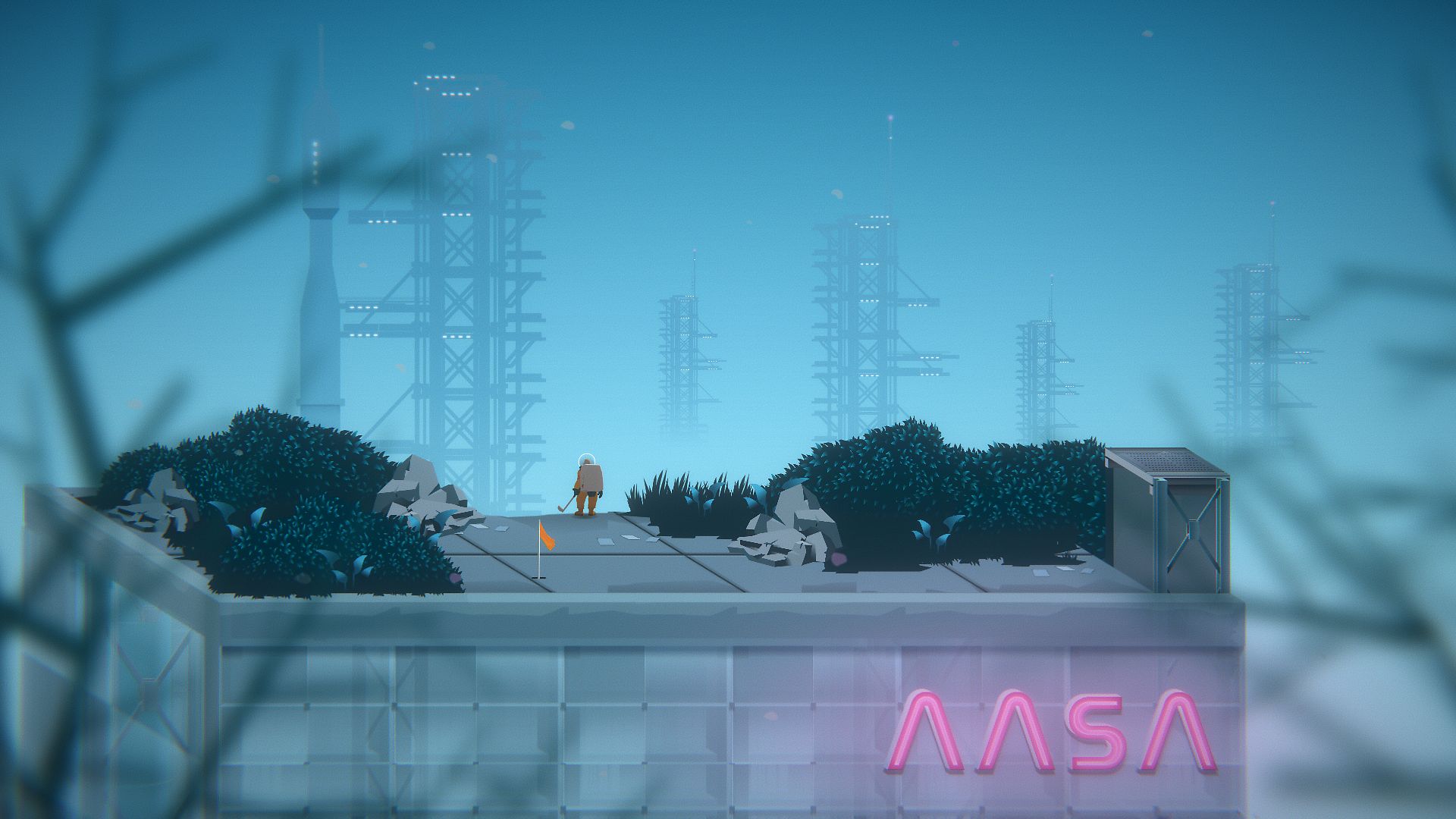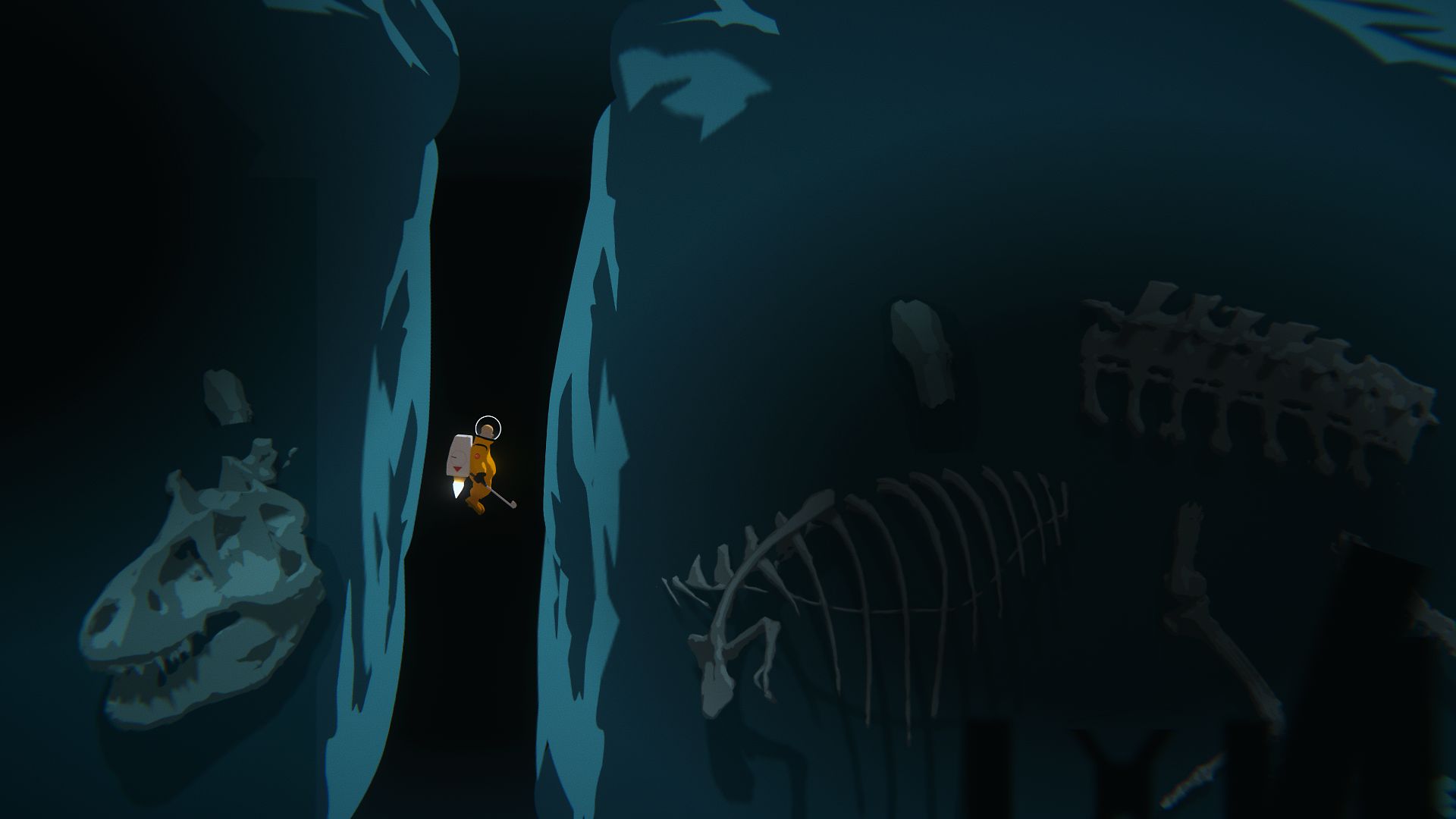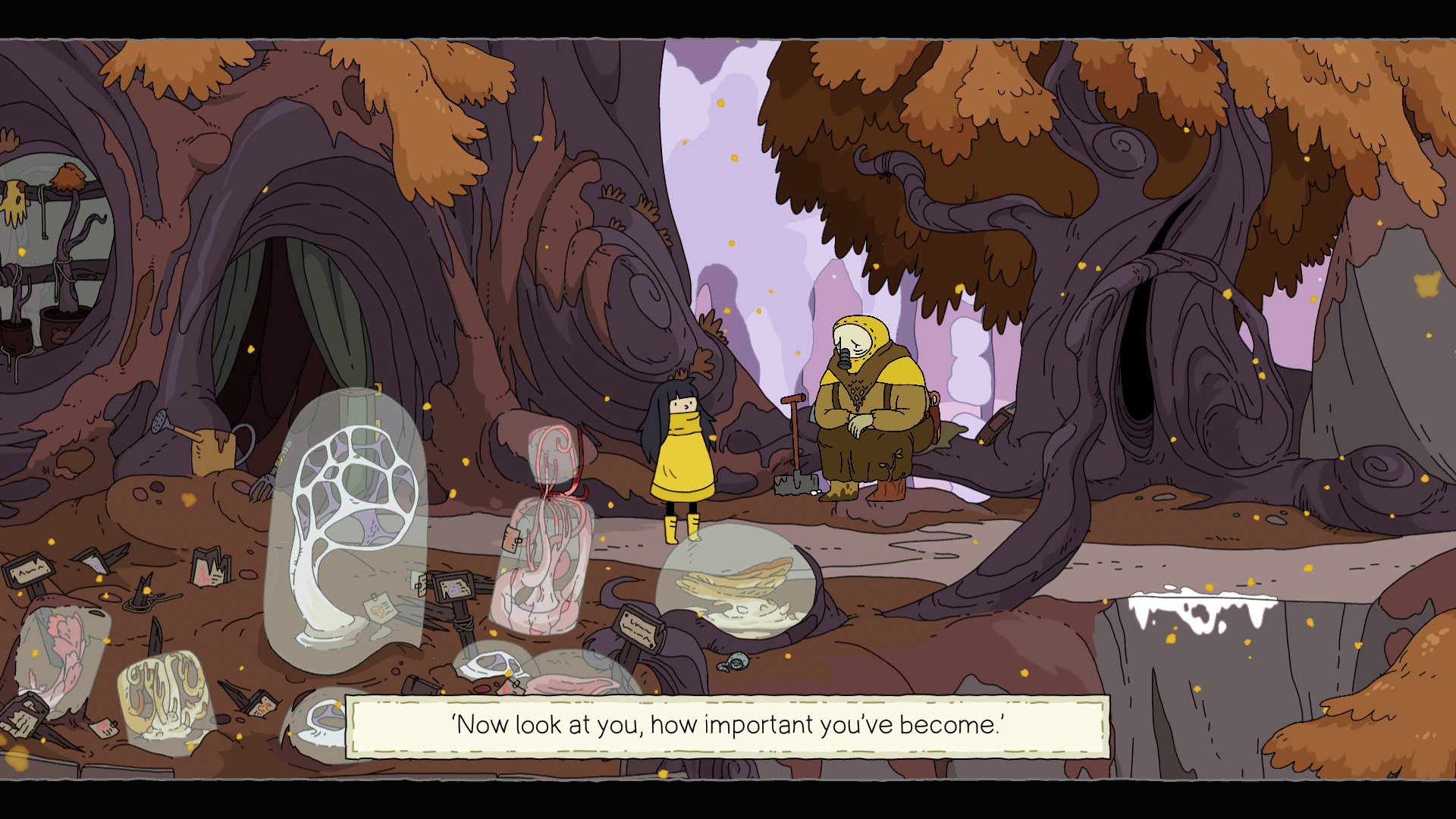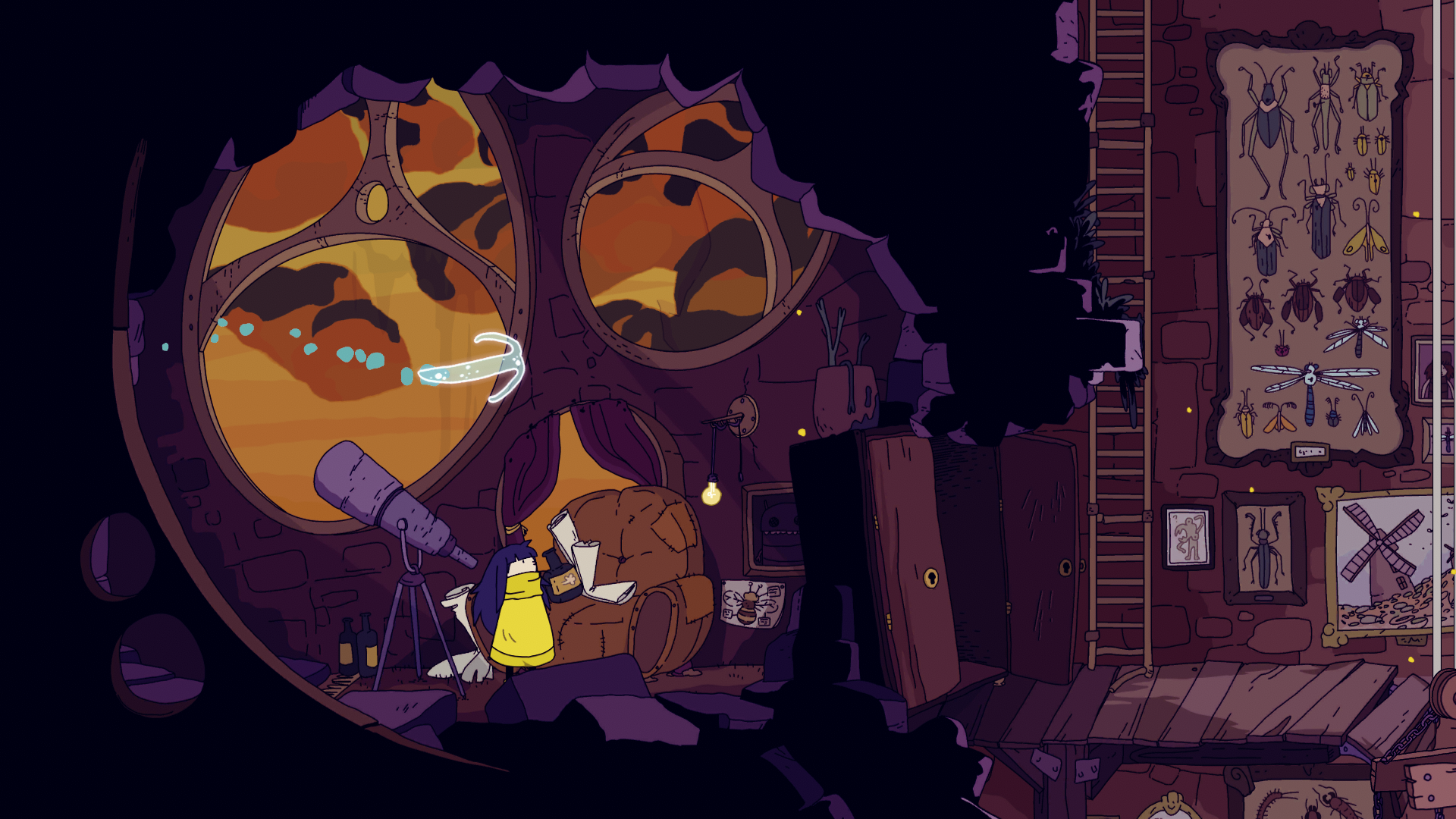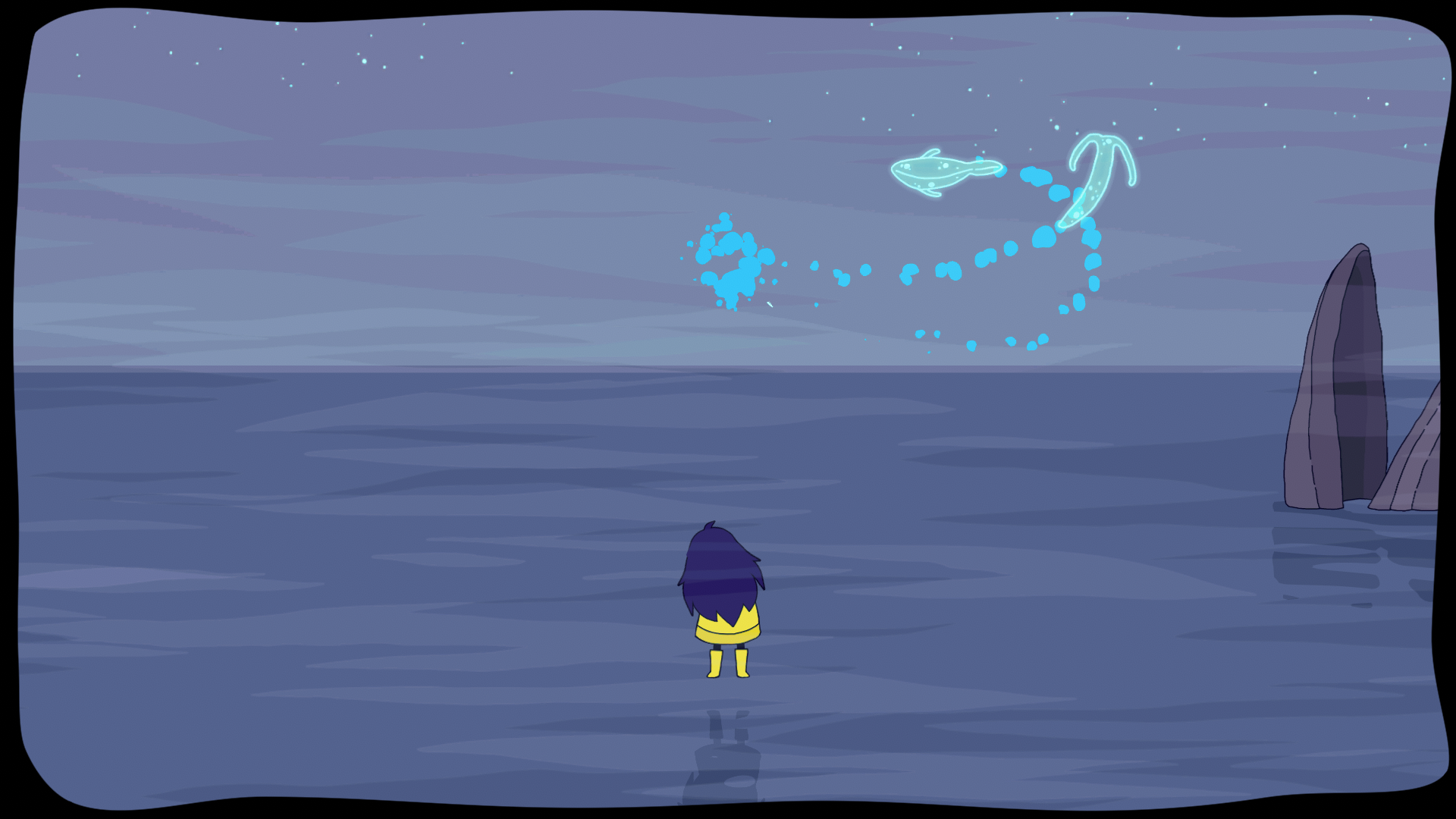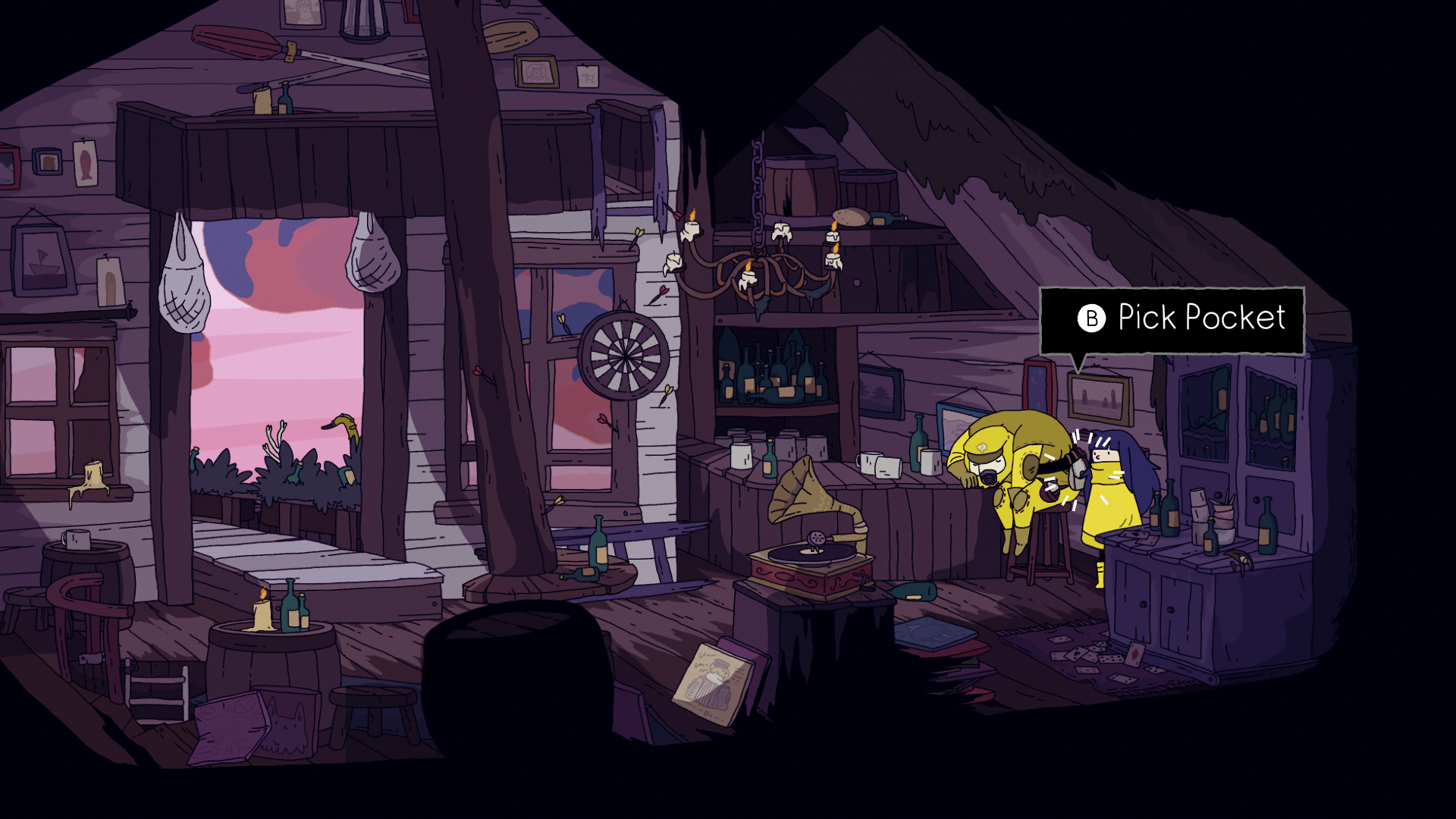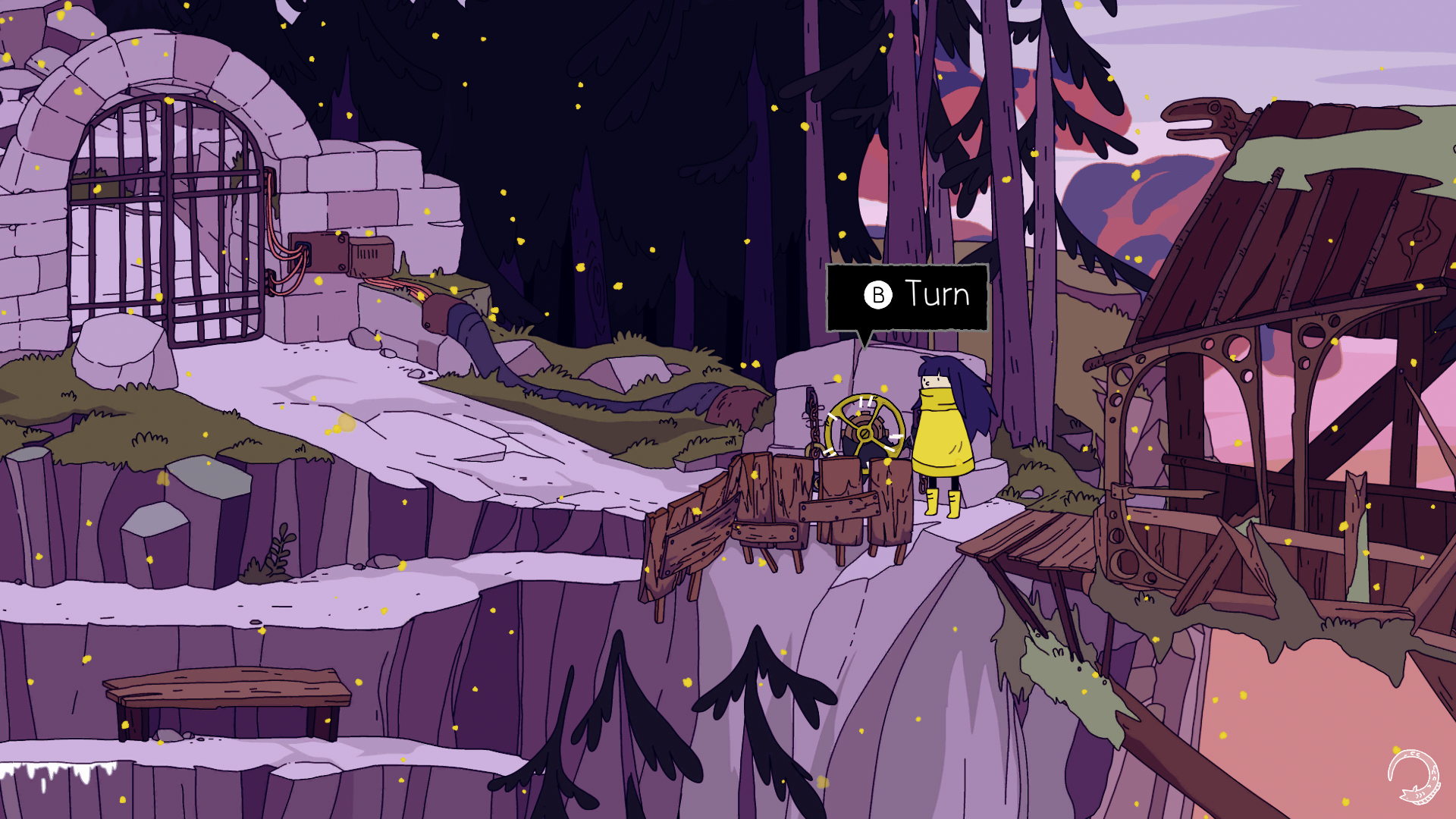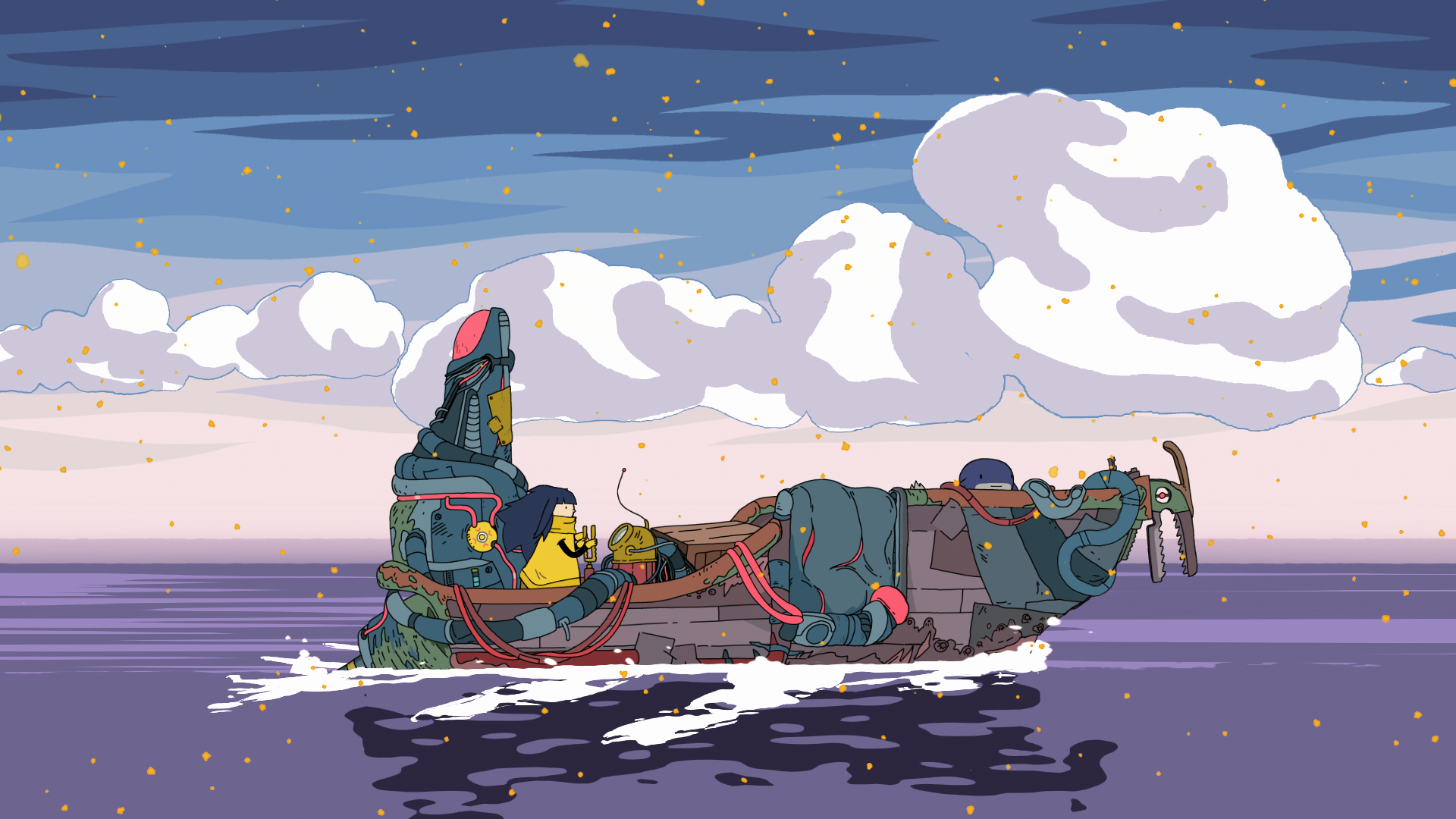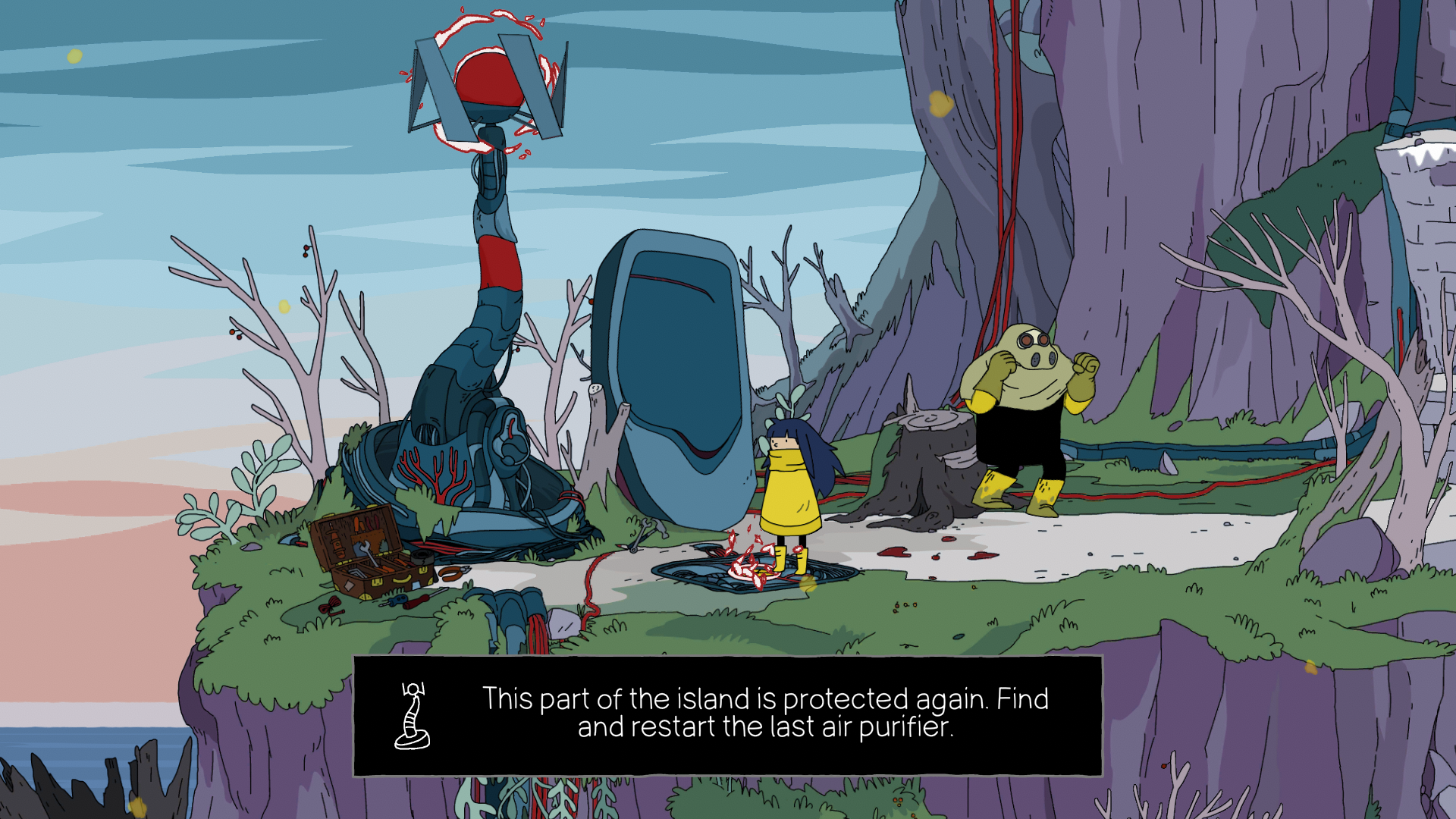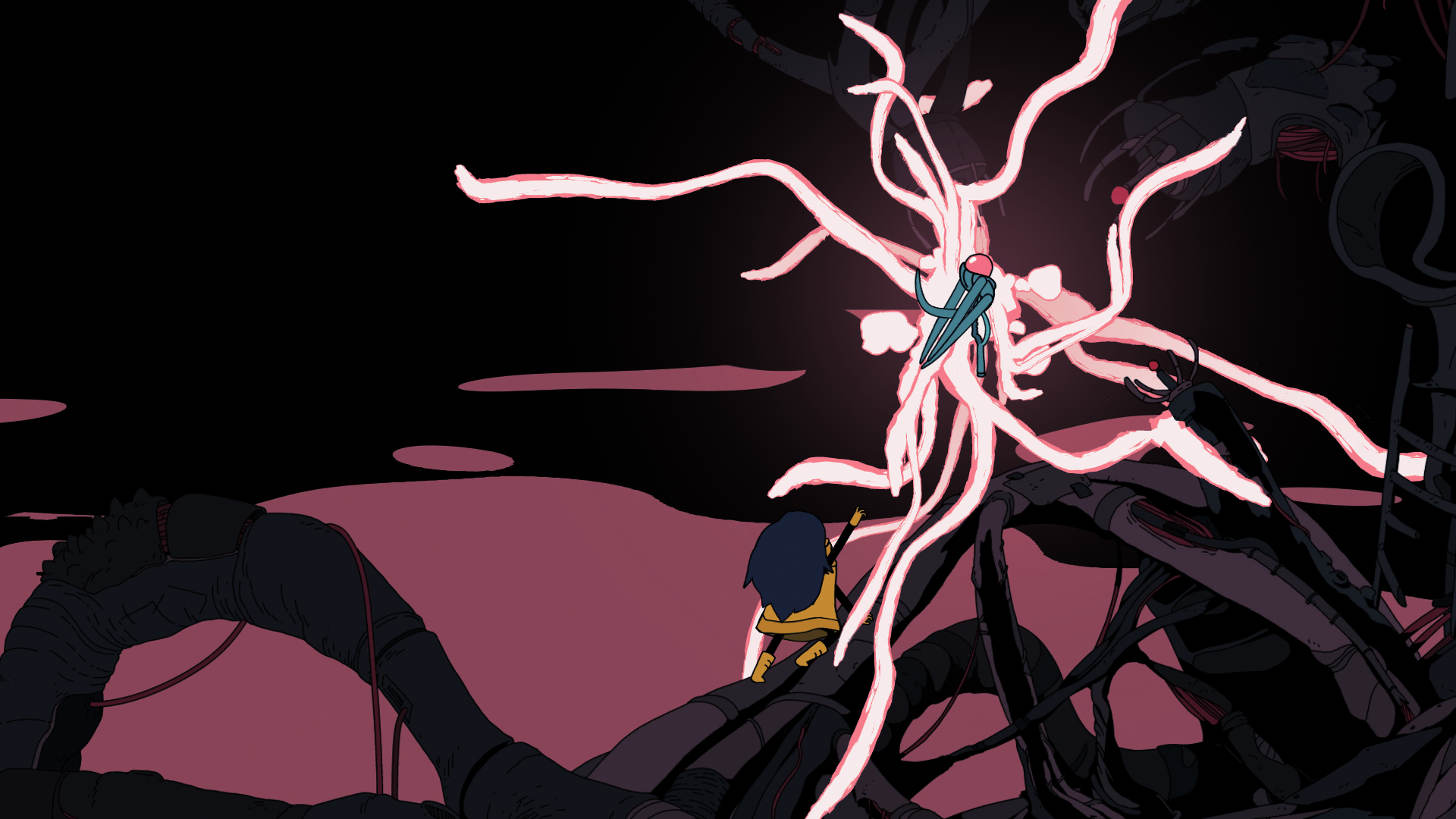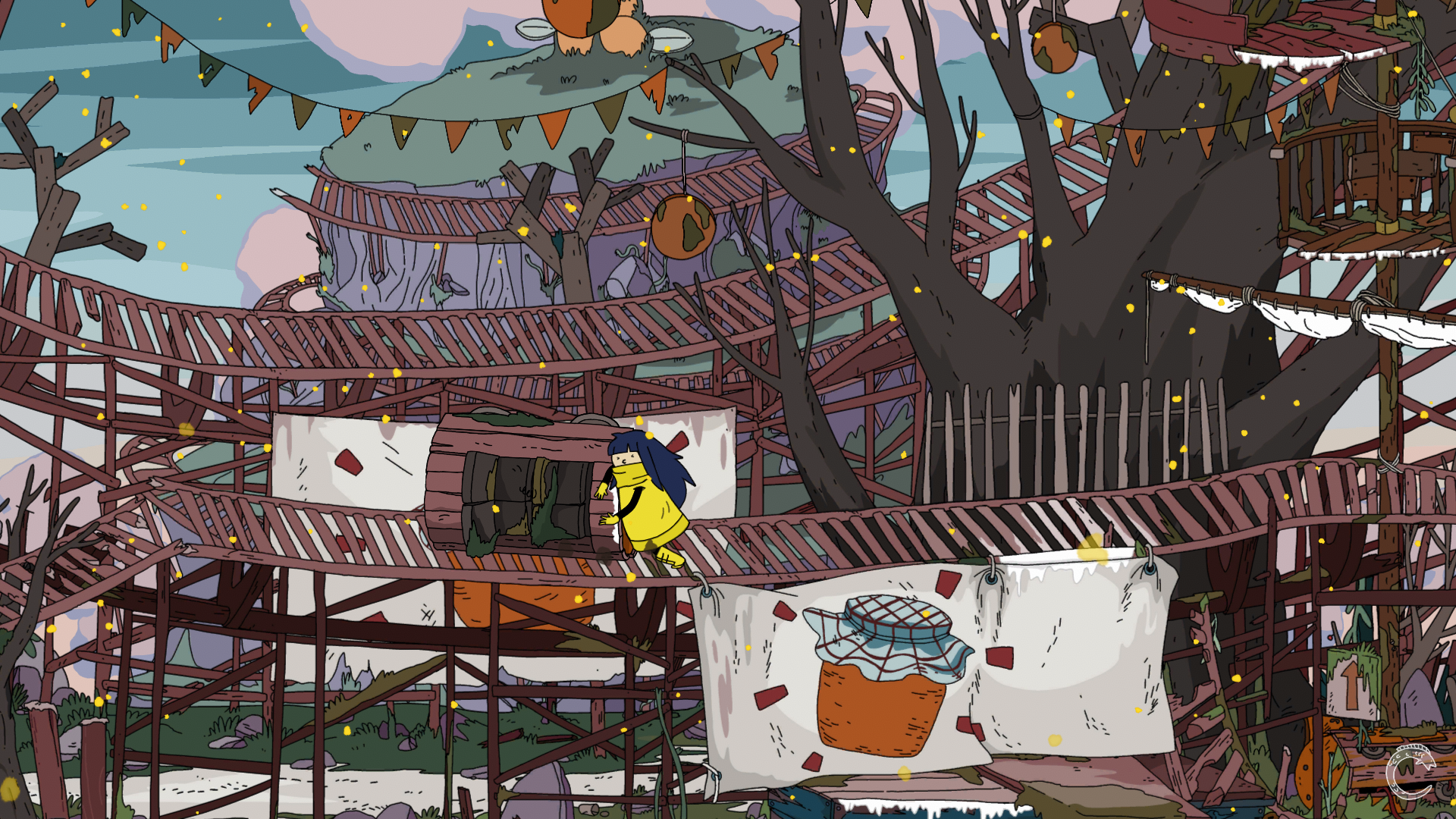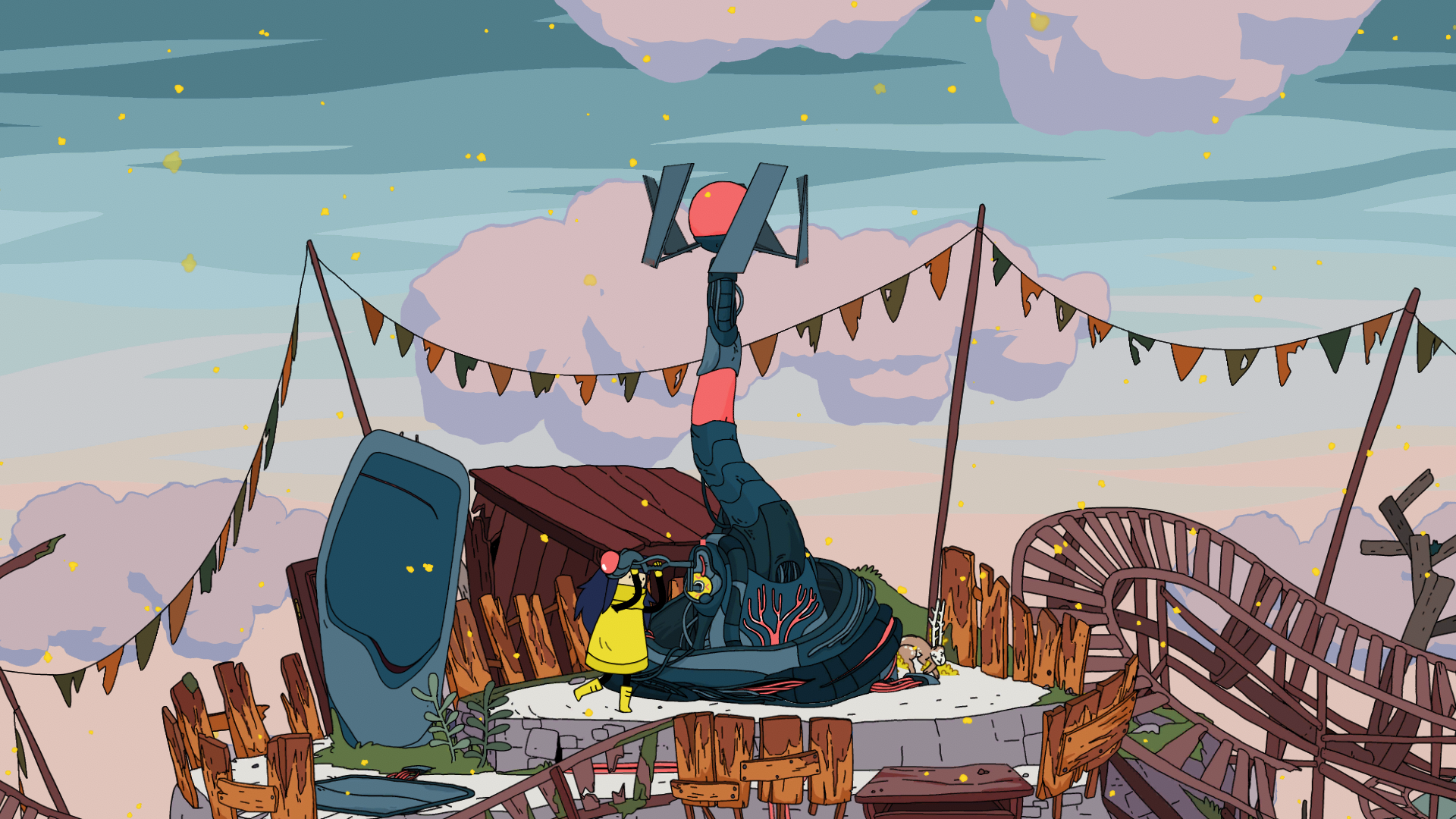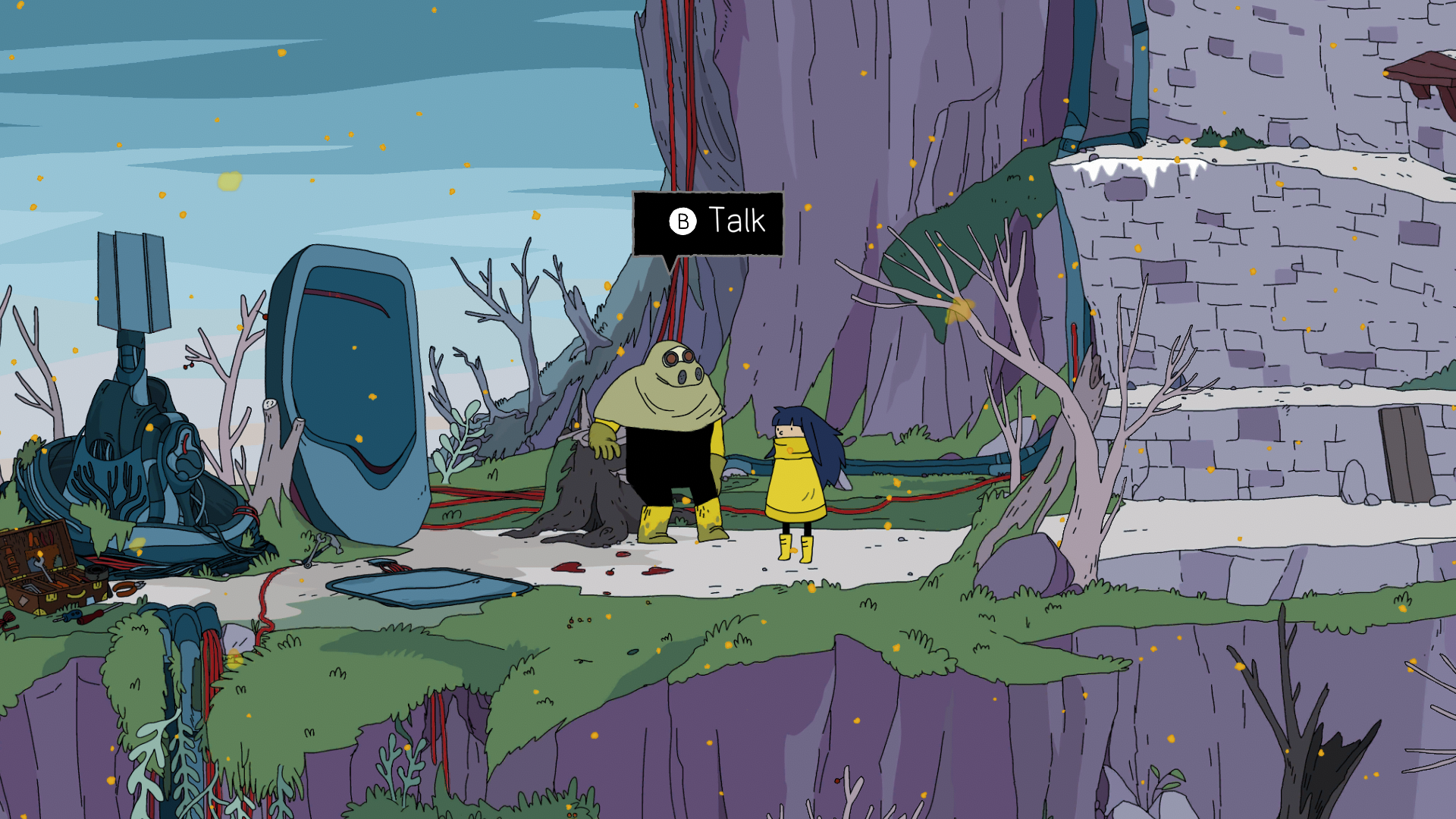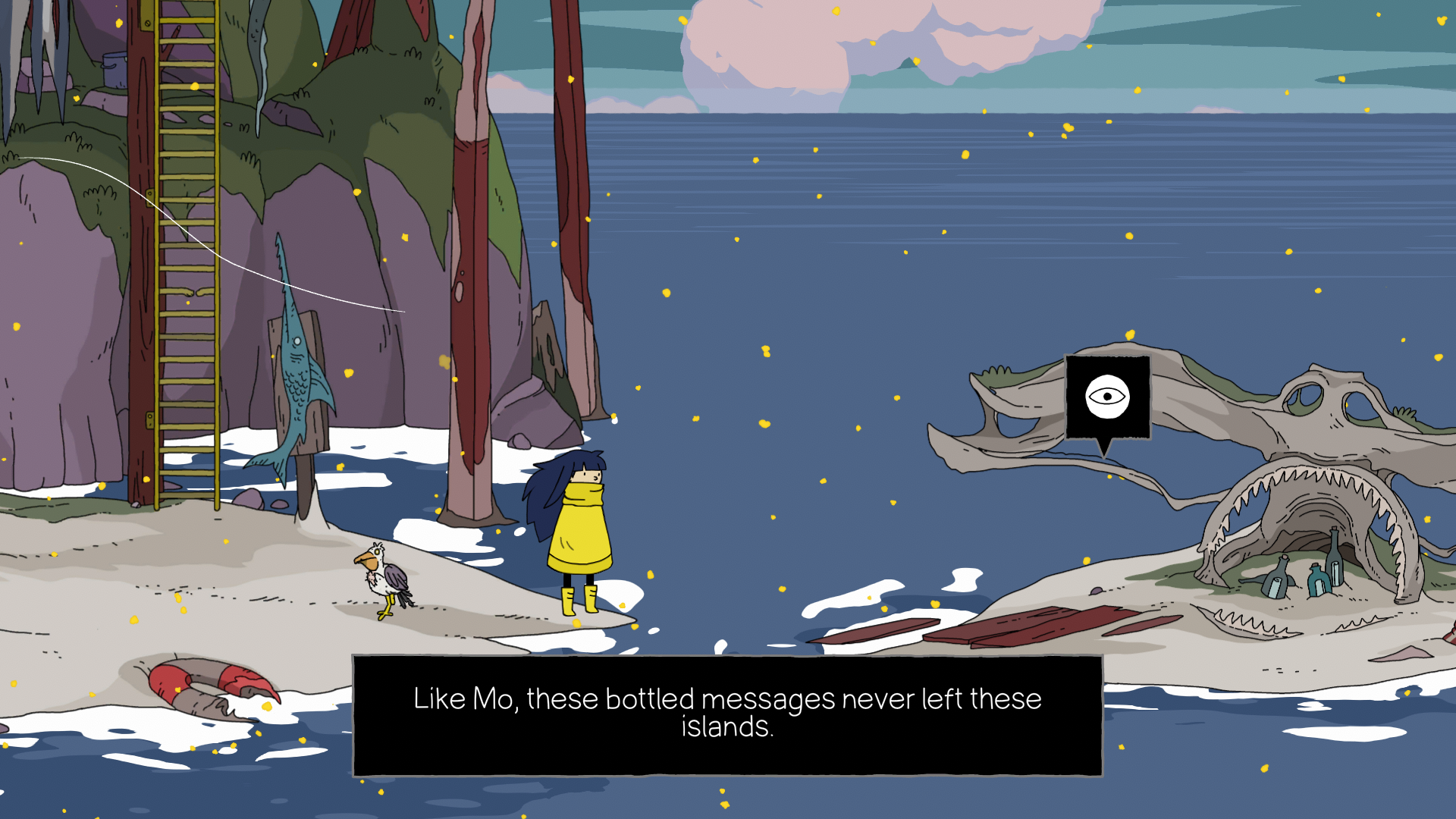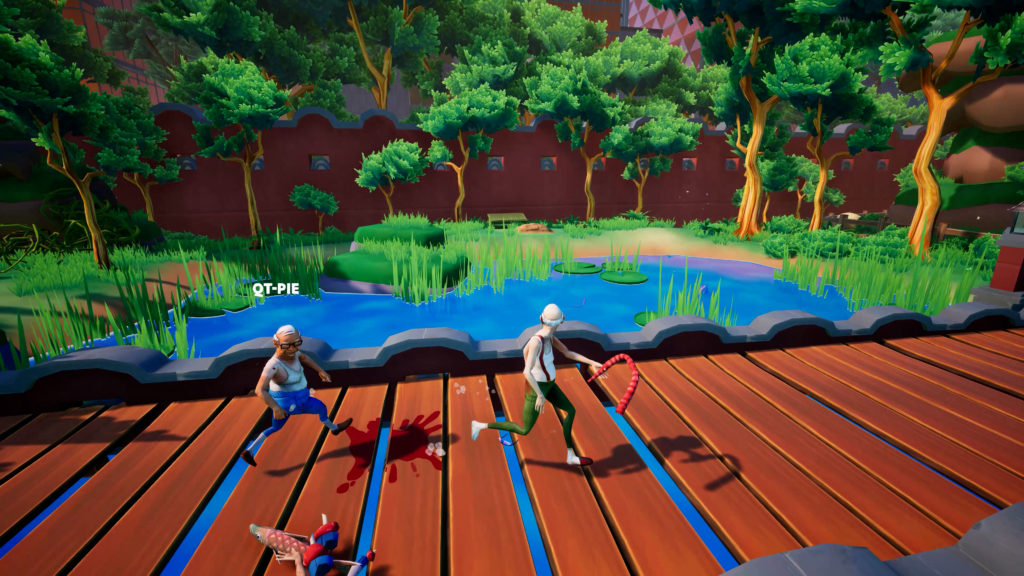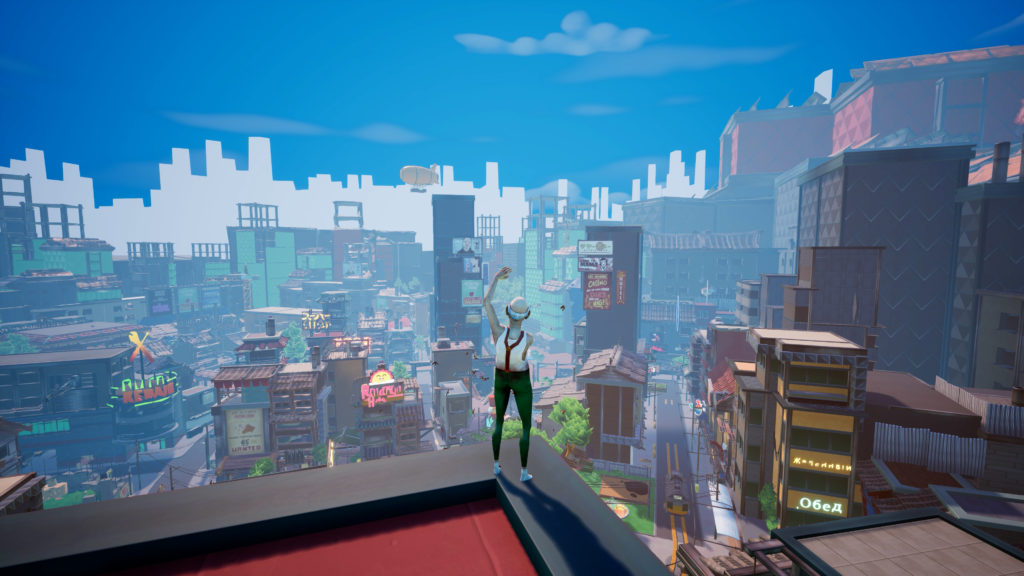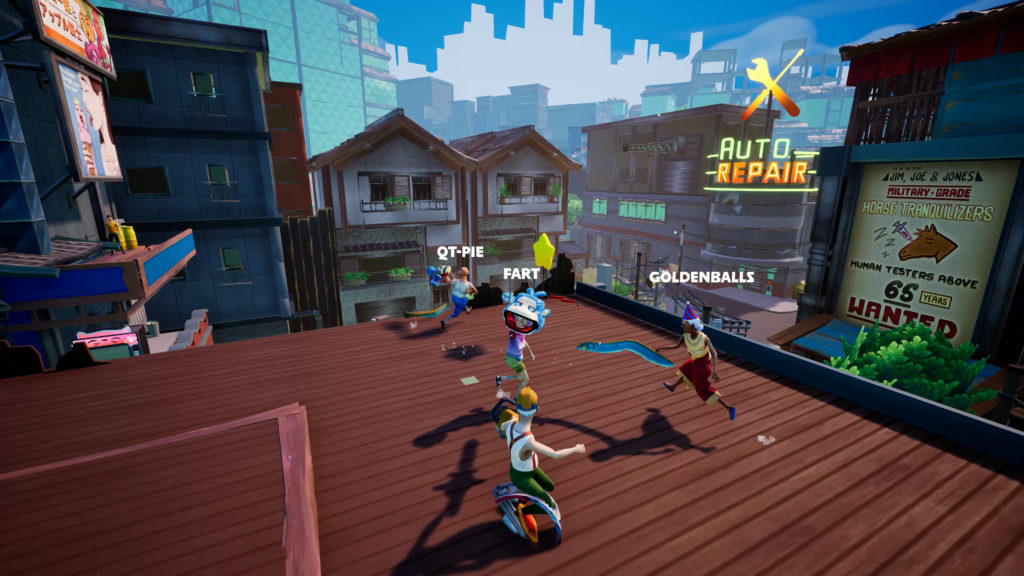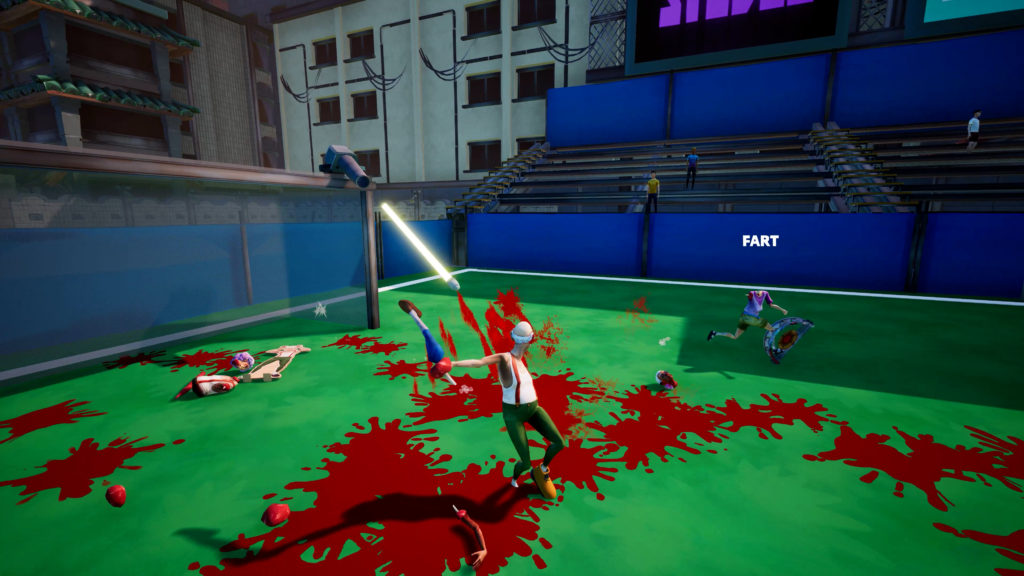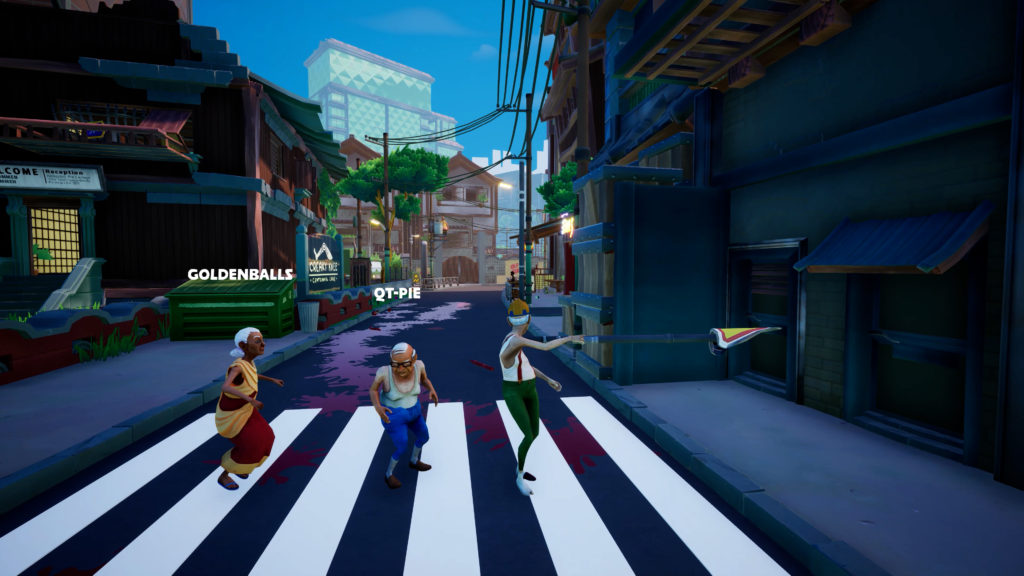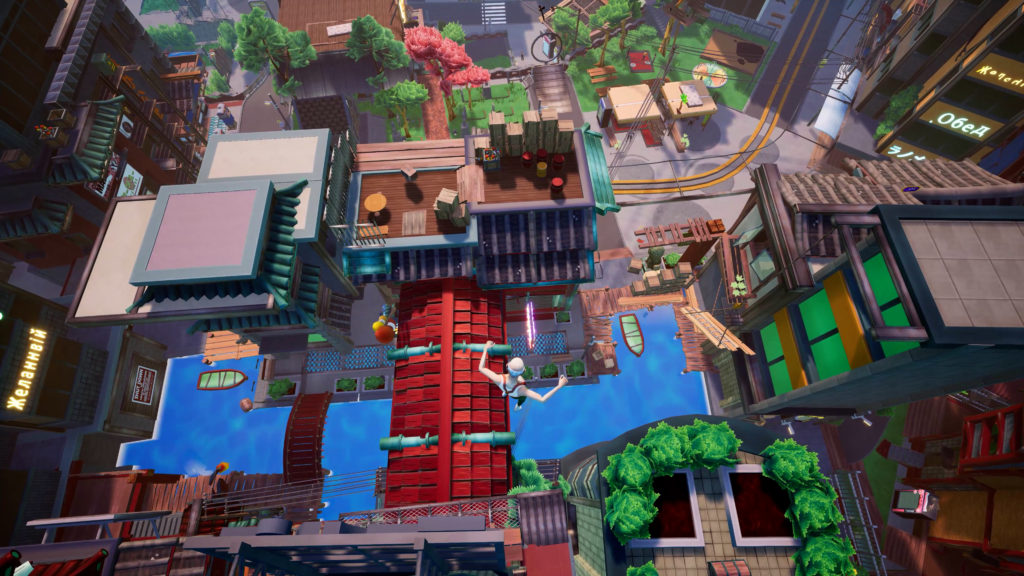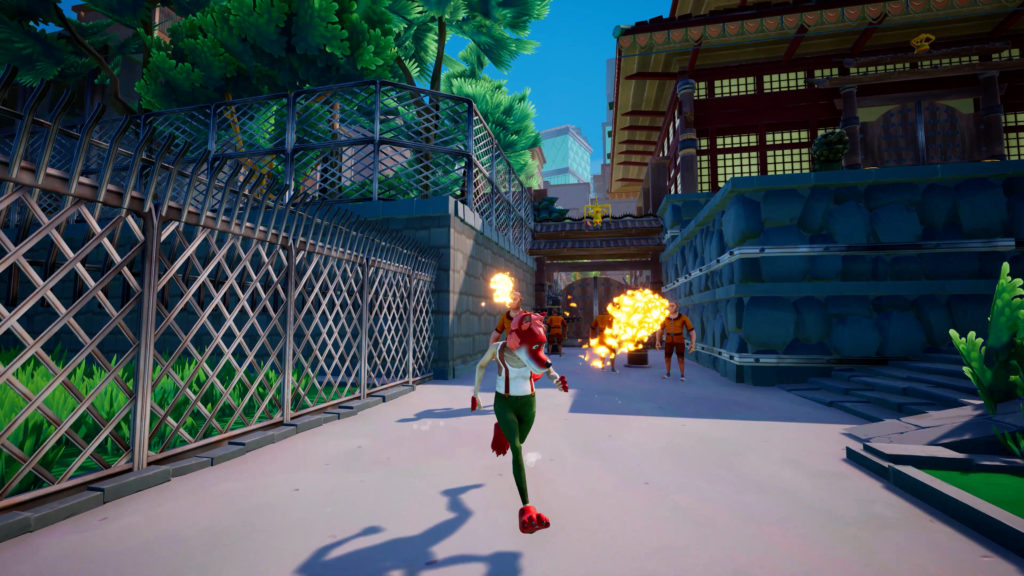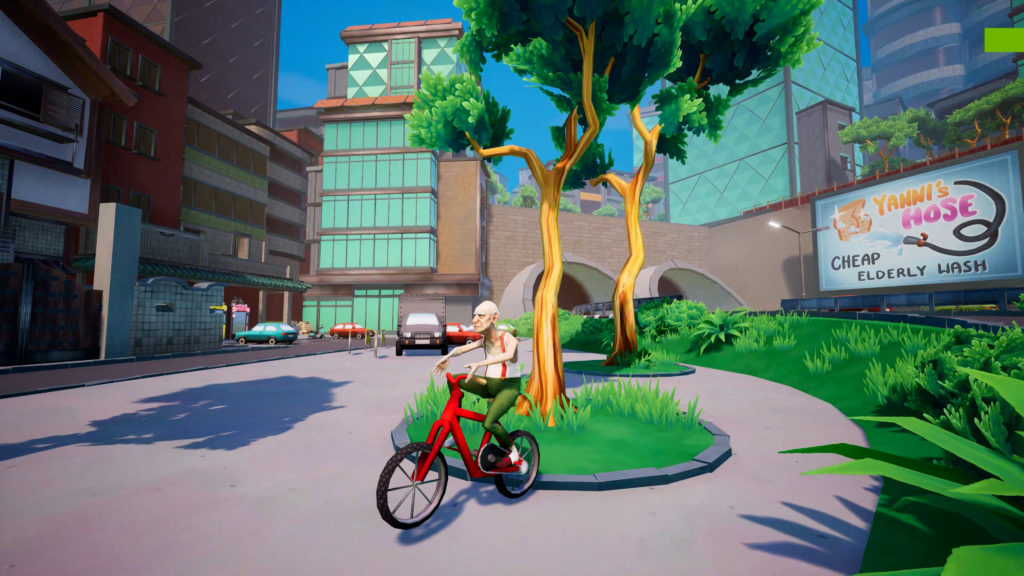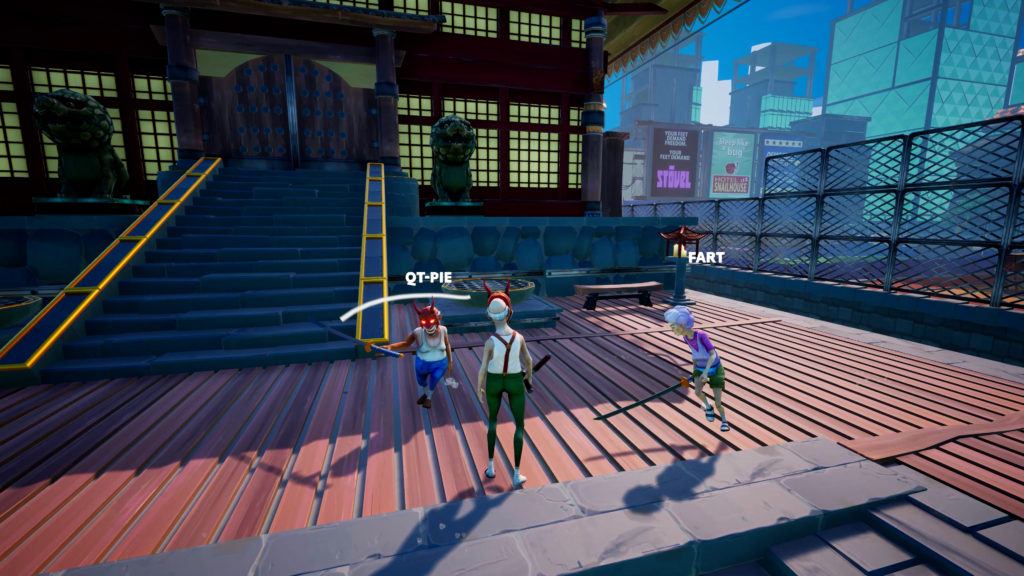The 25th Ward: The Silver Case
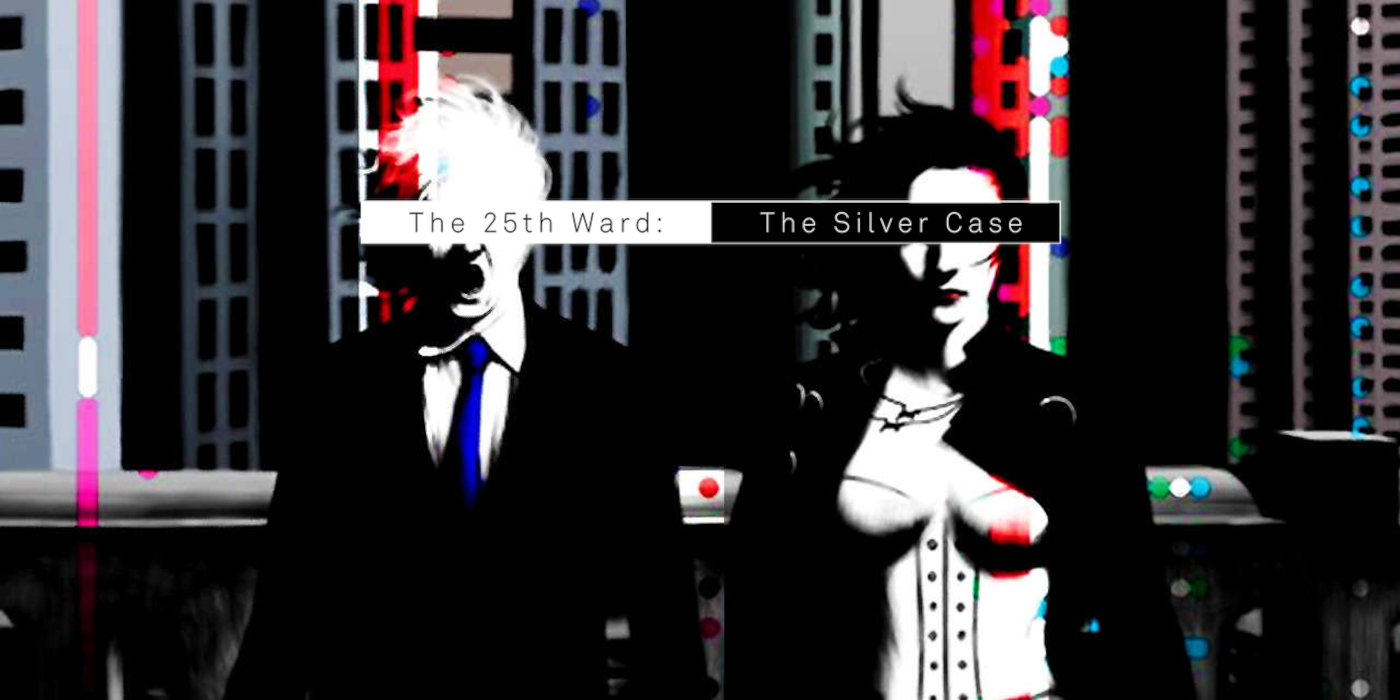

I was thumbing through my old portfolio the other day when I stumbled across a review I had written for an obscure visual novel that had just been released on the PS4. Having forgotten that I even wrote such a piece, considering the game had a Switch re-release not too long ago, I thought I’d tart it up and publish it for the world to see, so here’s an eight-year-old review that’s been remastered. The 25th Ward: The Silver Case started like any other review; play the game, tap up my thoughts and post my opinion. It sounded like a simple task except the visual novel pulled me into a weird, crazy, and sometimes downright vulgar world that simply wouldn’t let me go until it was finished with me. Reflecting on this, I don’t know how or why this happened but here we are.
At A Glance
| The 25th Ward: The Silver Case | |
| Positives | + Surreal story + Well written characters + Abstract art style |
| Negatives | – Intentionally attempts to shock – Mistranslations between Japanese and English – Minimal inputs |
| Overall | 6/10 |
| Played On | PS4 |
| Also Available On | PC, Switch |
| Find out about our scoring policy here. | |
The 25th Ward: The Silver Case plonks you into the titular 25th Ward of a futuristic Tokyo, where crime has all but been eliminated. The visual novel is a follow up to a 2005 mobile game but no prior experience is needed. In the game, you oversee the investigation of brutal murders that are being linked to a callous serial killer. The overview might seem like a by-the-numbers detective story like Tron: Identity or Bustafellows, but in Suda51 and Grasshopper Manufacture’s world, things come as crazy as they can. If you don’t know either the creator or studio’s body of work such as No More Heroes and Killer7, just know that the Japanese team creates games that make Hideo Kojima look sane, but more on that later.
The reason the crime rate is so low is because of a clever system that carefully mixes the poorer ends of society with the upper classes in a more inclusive Hunger Games-style setup. In what could be considered the biggest human experiment in the world, the results meant that the citizens of the city would get on with each other, that is, until the murders started. Growing up in a council estate in the north of England, I was sceptical about how society would function if the rich were willingly integrated into the poor areas, but to review a video game I let this concept slide, especially since this turned out to be the sanest part of the game.
The 25th Ward is broken down into three separate parts which all revolve around these mysterious murders, from all different vantage points. Part One starts with the Heinous Crimes Department, with the second part featuring a group of professional assassins known as The Regional Adjustment Bureau. Rounding out the third piece of the story is Tokio Morishima, a reporter from the original game who makes an appearance. The split narrative is done for a few different reasons, but the key takeaway is that each department has different motivations for solving these seemingly unrelated crimes. The Heinous Crimes team is under threat of closure due to low crime rates, and the RAB doesn’t want its good name besmirched by a rogue killer. Morishima, however, is your typical anime protagonist with amnesia who is trying to get a grip on his sanity before helping the world.
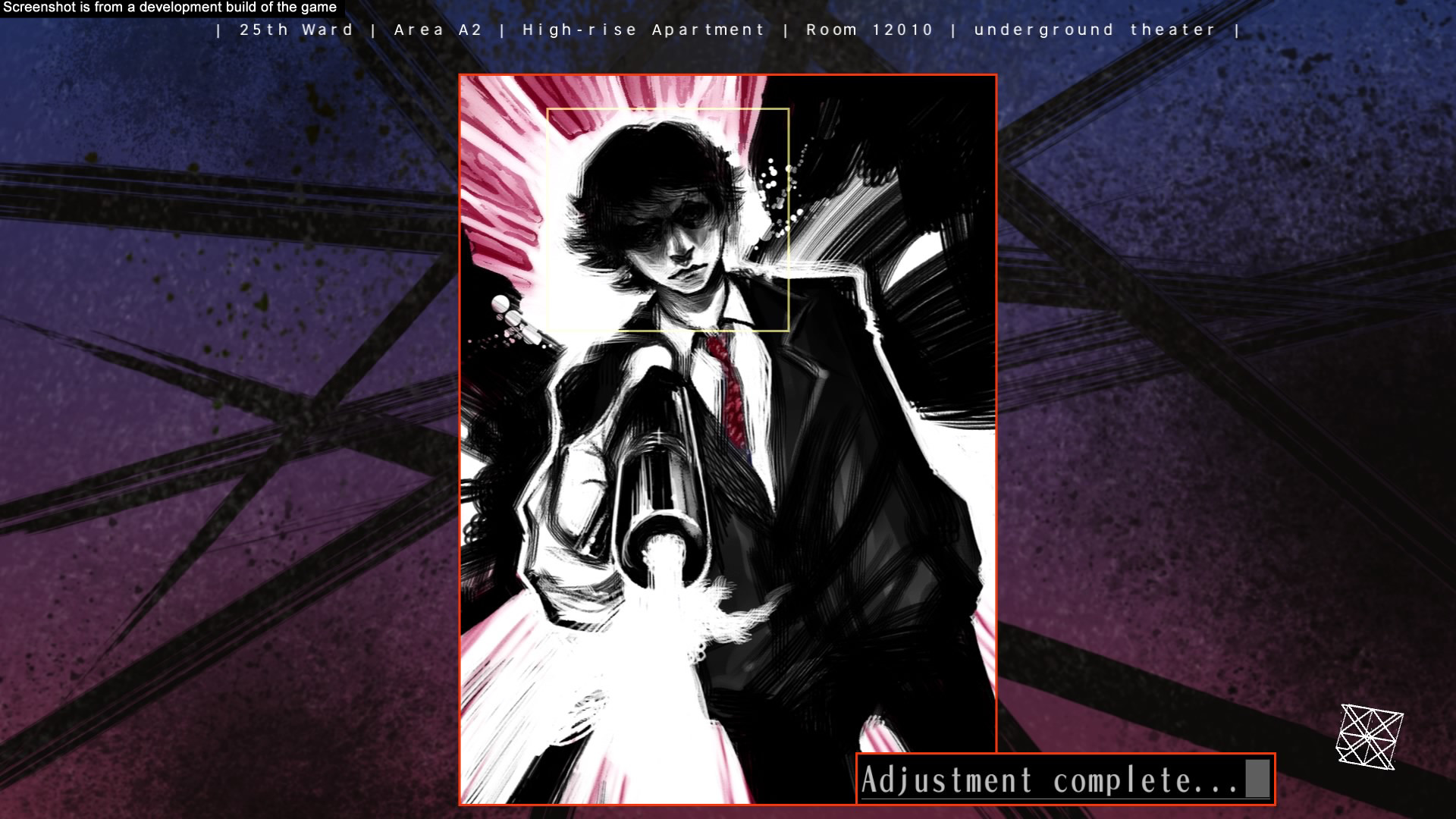
In typical visual novel style, I didn’t move any characters around or solve any puzzles, rather I just watched as a story played out on screen. This voyeuristic approach to storytelling was rather well done, as you can see the action unfolding but cannot influence the proceedings to influence the outcome. The characters are well-written and engaging, with Morishima being a standout. While it was clear he had gone through the wringer already, I have no idea exactly what happened in the first game. His lack of memories and his desperate attempt to get a hold of what’s going on however, perfectly represented how I was feeling playing the game. I didn’t know what was going on, or how the story would unfold during my 10-hour playthrough, but I just had to finish it, for better or worse.
To break up the monotony of reading a book (albeit one that is very well illustrated in a uniquely abstract style), there are things I had to do. Presented with a 10-sided dice that had options like ‘Walk’, ‘Talk’, and ‘Interact with the surroundings’, you’re offered a crude menu system that allows the slightest interaction without affecting any outcomes with the game. I think it was in place more to stop the controller from disconnecting and to give me a sense of accomplishment for doing something.
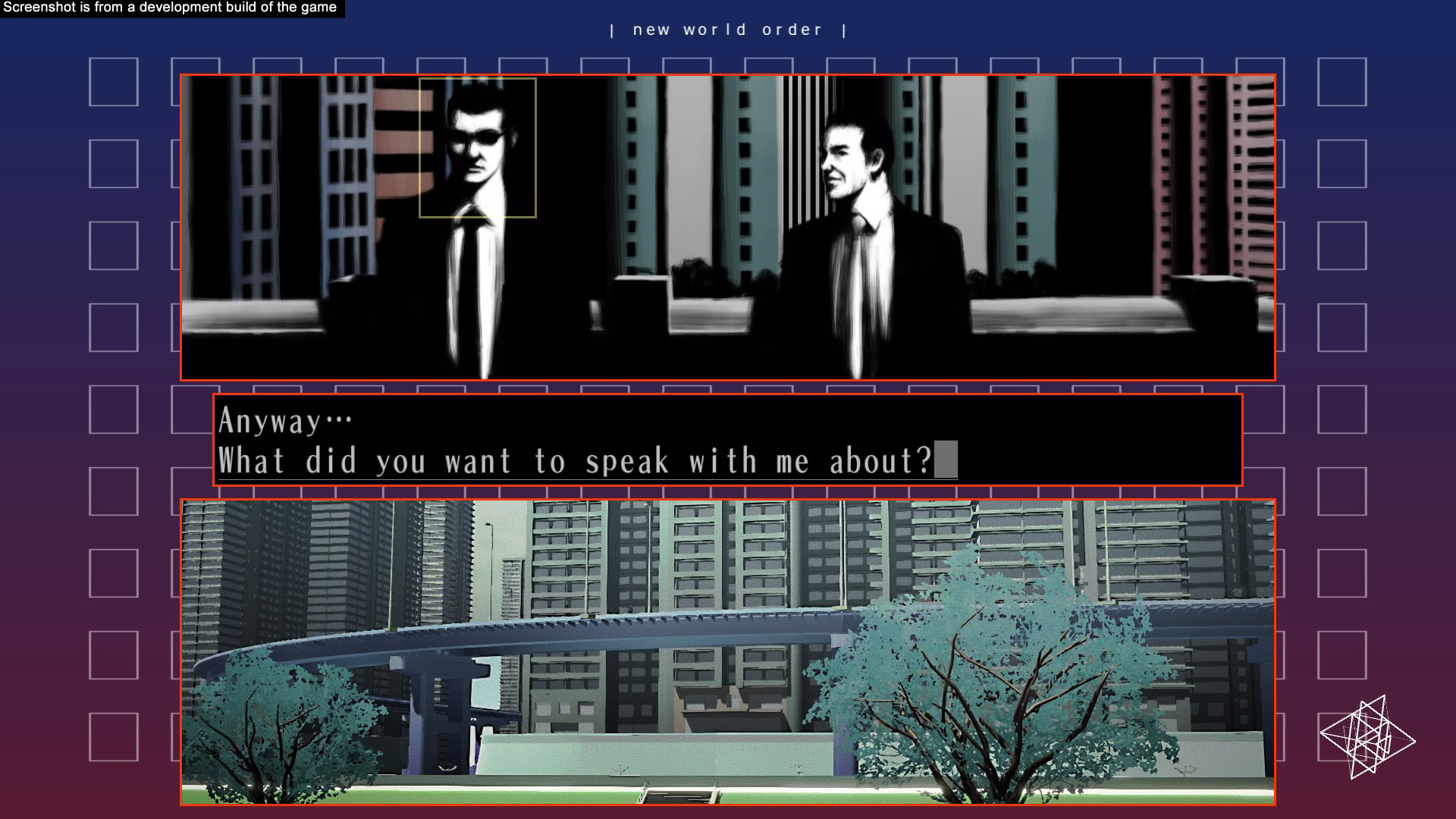
It’s a shame that the options boiled down to predetermined outcomes, as early on The 25th Ward there are things to do. There are 100 different endings for you to uncover that range from who the killer is, all the way through to David Lynch levels of insanity. There’s also a rudimentary scene at the beginning of the game that plays out like a Pokémon battle. I was given a limited number of options to cause damage and played out as a tongue-in-cheek lampoon of every Pokémon game up to 2005. This would have been fantastic except it’s peppered with points that attempt to shock the player. At one point you battle a female assassin with the only battle move available is simply ‘Get Horny’, where the game describes the efforts of humping a lady until she passes out, with consent being left deliberately ambiguous. It irked me that such blatant attempts to shock were included in any game after 1999 and it did cast a rather large black mark with The 25th Ward.
The rest of the game is full of profanity to the point Limp Bizkit would have to call their mums to apologise, and at points, the excellent story pivoted into pure juvenility. I’m not sure if this was a mistranslation or if Suda51 intentionally tried to cause outrage, but in any case, it just feels like it’s trying too hard, which in my eyes is more offensive than actually offending the player by including boob jokes, or multiple F-bombs. It would have been more impactful if the game’s jokes landed in any way, or if there was a reason behind what was being said, but that certainly wasn’t the case. The 25th Ward: The Silver Case is a tale of two halves: the first being a well-written murder mystery that dives head-first into the surreal and is a joy to watch, and the second half is like a petulant teenager who is trying to cause a ruckus because they didn’t get enough attention growing up. The plot though saves the game and managed to captivate me enough to explore every single ending. Even though I had no idea what was going on half the time, I still had to play until it was complete to get closure on the story. The visual novel playstyle isn’t for everyone but if you can put that, and the crass humour to one side, The 25th Ward: The Silver Case is one hell of a strange game to behold.


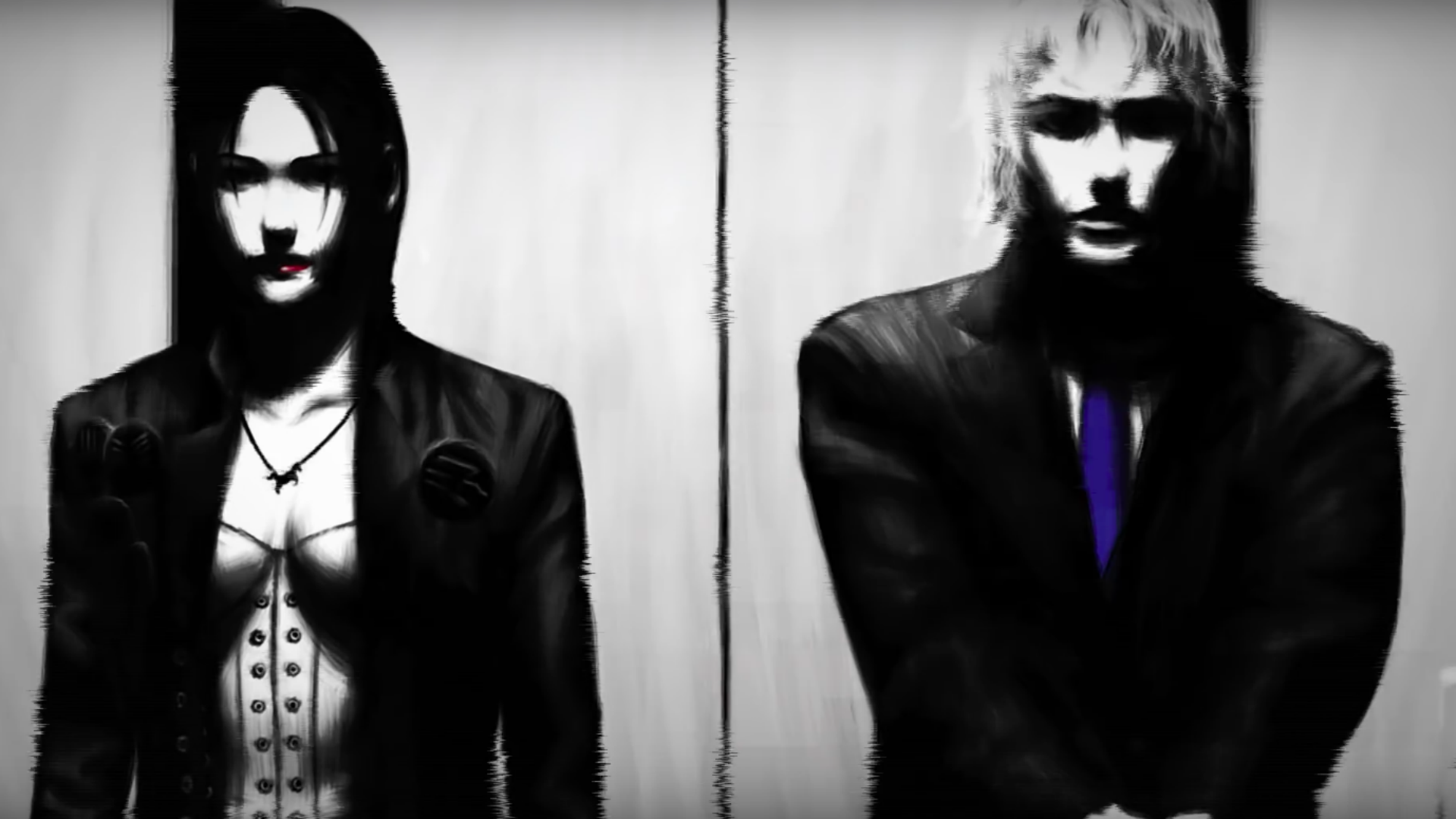
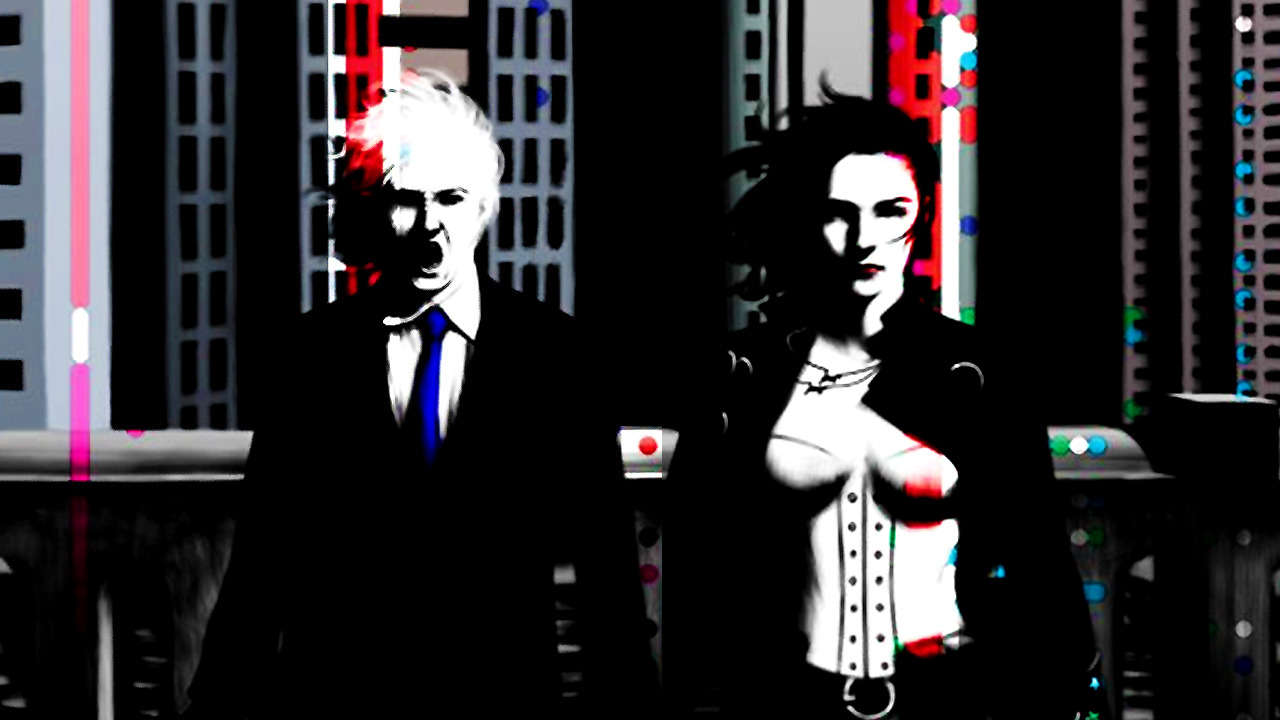
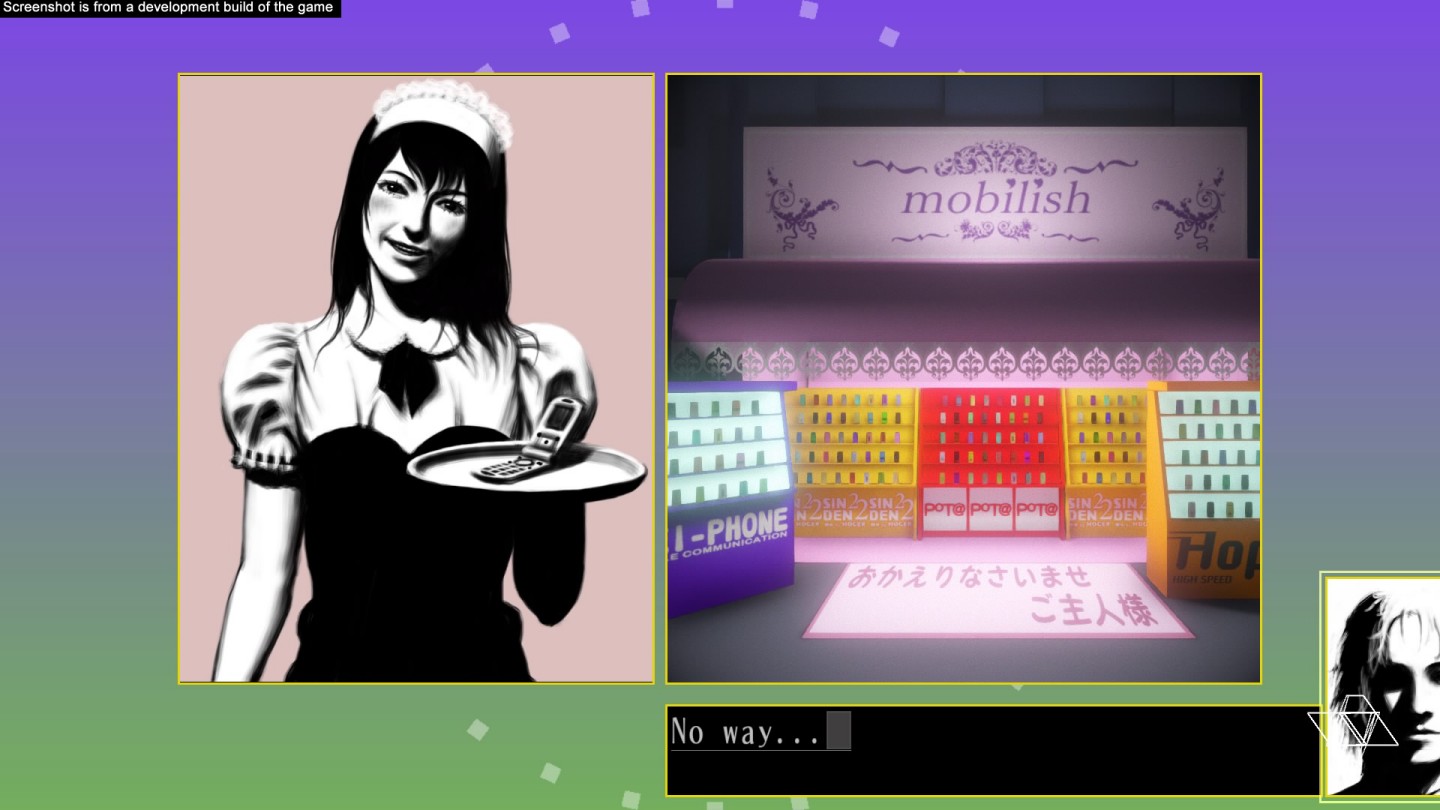
In the interest of full disclosure, VGamingNews was provided with a copy of the game in order to conduct this review.
Thanks for taking the time to read our review. If you’d like to support us further, please consider buying us a coffee!
Somerville
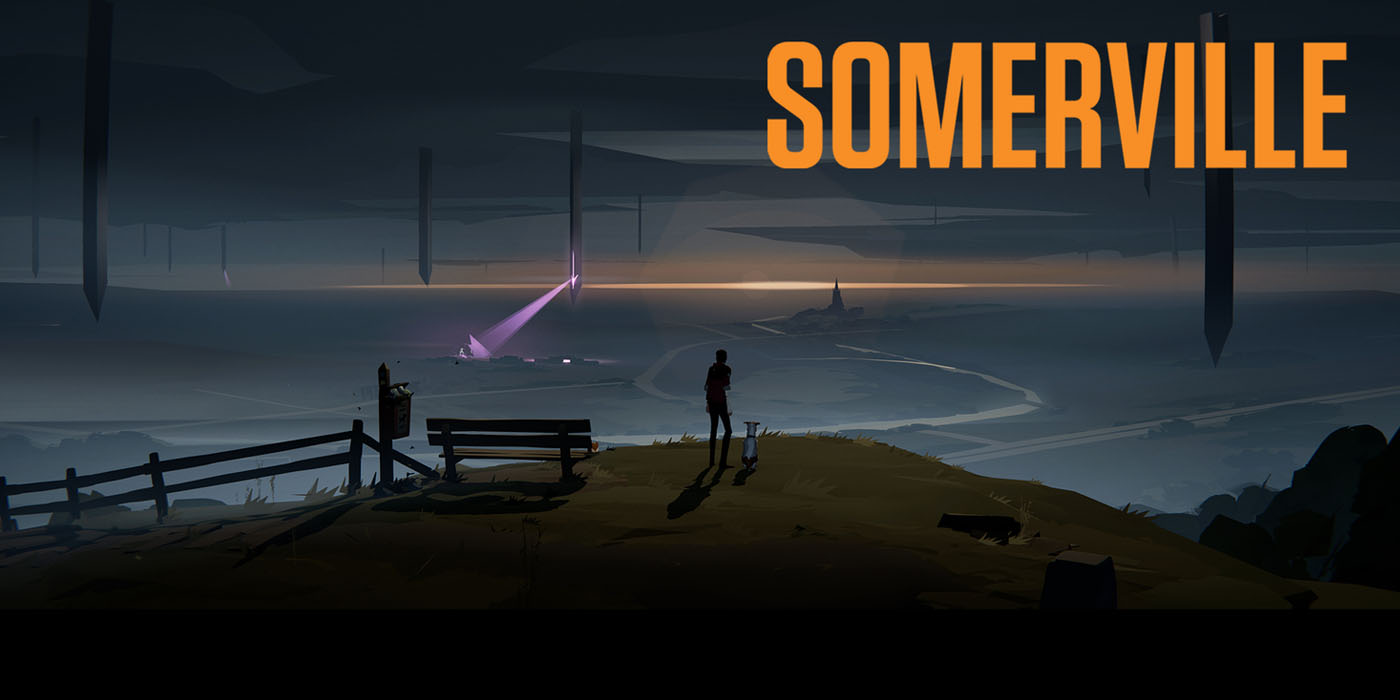

In the wake of catastrophe, you must find the means to make your family whole again. Somerville is a sci-fi adventure grounded in the intimate repercussions of large-scale conflict. Cast your mind to games such as Limbo and Inside, both excellent titles courtesy of the studio Playdead. I say this as ex-CEO of Playdead Dino Patti has jumped ship, to co-found Jumpship, an independent game studio with animator Chris Olsen, together creating their debut title of Somerville. Dusting off (quite literally) the PS4, I was ready to immerse myself in this hand-crafted narrative experience, set to journey through perilous terrain and vivid rural landscapes, in order to unravel the mysteries of Earth’s visitors.
Note, this is a written version of our video review of Somerville – check it out below!
At A Glance
| SOMERVILLE | |
| Positives | + Tense and foreboding atmosphere + Minimalist soundscape that fits the setting well + Some great shots accentuating the environment |
| Negatives | – Rather janky controls – Unexpected camera switches can be a pain – Some performance minor issues |
| Overall | 7 /10 |
| Played On | PS4 |
| Also Available On | PC, PS5, Xbox Series X|S, Xbox One |
| Find out about our scoring policy here. | |
The opening scene is reminiscent of a horror film, the an aerial shot following your car in a dreary environment as you weave through forests, you are already met with a sense that something isn’t quite right. The music arrangement immediately sets the tone, as it feeds into the tense unnerving atmosphere. Then, as you pull into your house and get out of the car, all seems fine, and yet the camera lingers a little too long, giving you the feeling that someone – or something – is watching you. Cue shot of a nuclear family of mum, dad, toddler and doggo, all asleep. You briefly take control of the toddler, immediately hug the dog (otherwise you need to rethink your priorities), and gauge the basic feel for the controls. This is all while, in War of the Worlds fashion, the outdoors starts to glow and grumble, and you just know it’s all about to hit the fan. Soon enough you take control of the father figure, clean up after your dumbass kid, and then BOOM!
Aliens, baby.
The story is then teed up with you having touched hands with a space pilot, sparking out, and then waking up left to explore the now ruined landscape with your canine friend. It was at this point I was left with two questions, “what the hell just happened, and why on earth am I playing this at 2am?!”
Picking yourself up and dusting yourself off, you start utilising a blue glowing power that the space pilot seems to have transferred to you, allowing you to infuse light sources with that blueberry energy in order to liquify alien debris that blocks your path. It is through this, along with a solidifying power acquired later in the game, that Somerville builds the foundations of the puzzles it presents to you. Starting off with solving smaller puzzles to simply get to the next area, to eventually quite large ones that really alter terrain. For the most part, they are a means to drive the story forward, but they can be oddly placed and aren’t too challenging. However, there are some clever ones that do require a bit more lateral thinking and I really did enjoy solving those ones.
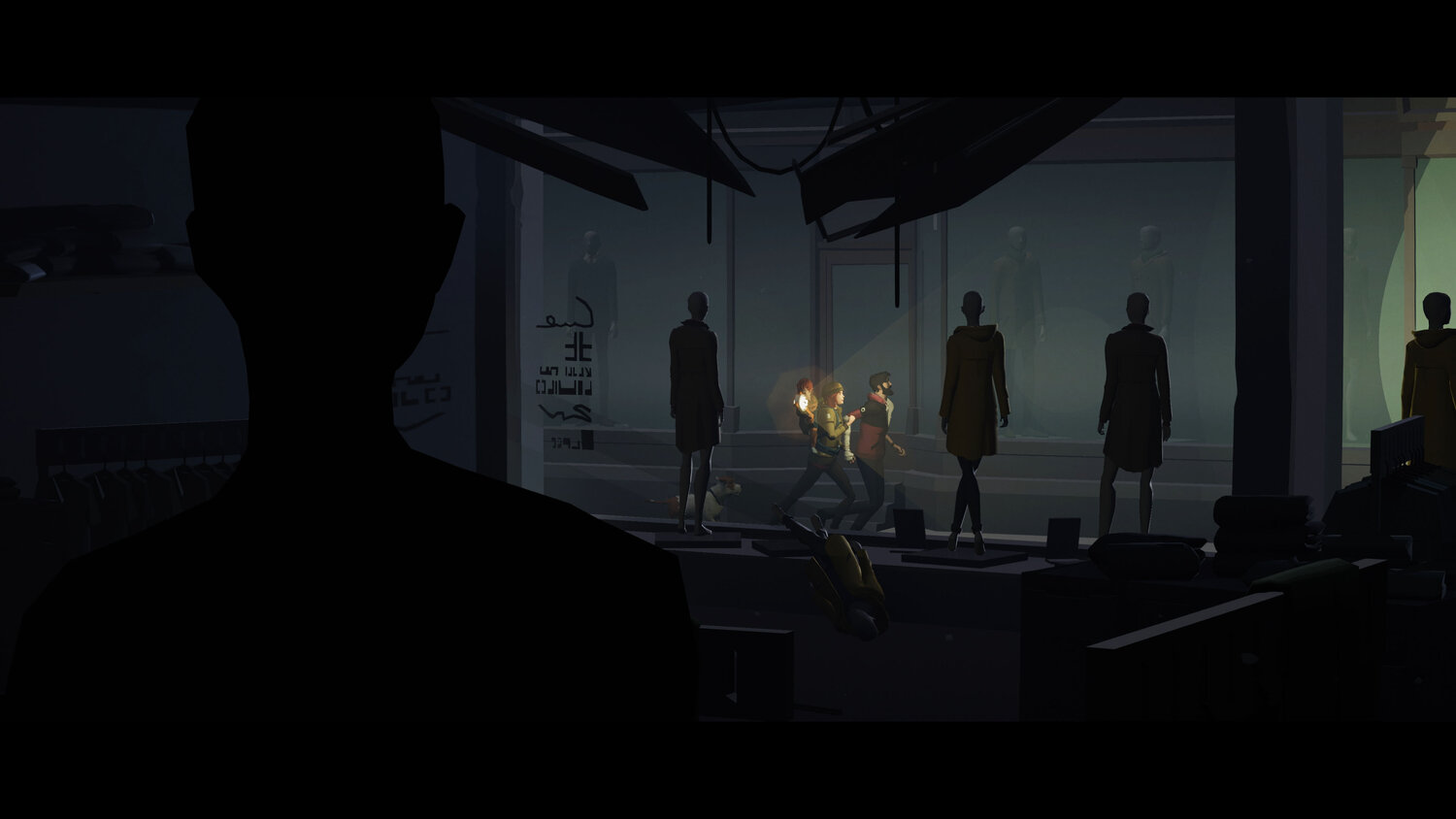
What I did find to be a let-down were the controls, where getting about the place can feel a bit janky at times. There would be some occasions where interacting with objects would either require pinpoint accuracy, while other times our guy slides a couple feet away into place. This can cause some second guessing when thinking whether you are meant to touch certain objects, mashing the button as you slip and slide, touching up every bit of terrain like an excited Steve the Monkey. The game does assist you at points, much like in many third person action games, with a faint orange colour on things indicating what you are supposed to interact with. The inaccuracy is especially a problem when it comes to the parts of the game that require you to evade enemies quickly, which thankfully, isn’t that often, and if you do die, load times aren’t that long to jump back in. Movement speed itself can be a minor annoyance, in that the game dictates how fast you move based on the situation. This can be from a slow crouch when creeping around aliens, to becoming Usain Bolt when they’ve spotted you. There is no physical no sprint button, so get used to a mild jog at an average pace.
Navigating your way through the world quickly feels very lonesome, adding to the question of “am I the last survivor on this planet? If not then where the bloody hell is everyone?” It’s not long before your furry companion fails to keep up, and you’re left with the sounds of your own footsteps, the environment, and the ever-ominous alien contingent that seem dead set on hunting you down.
Just try to resist the urge to follow the alluring purple light…
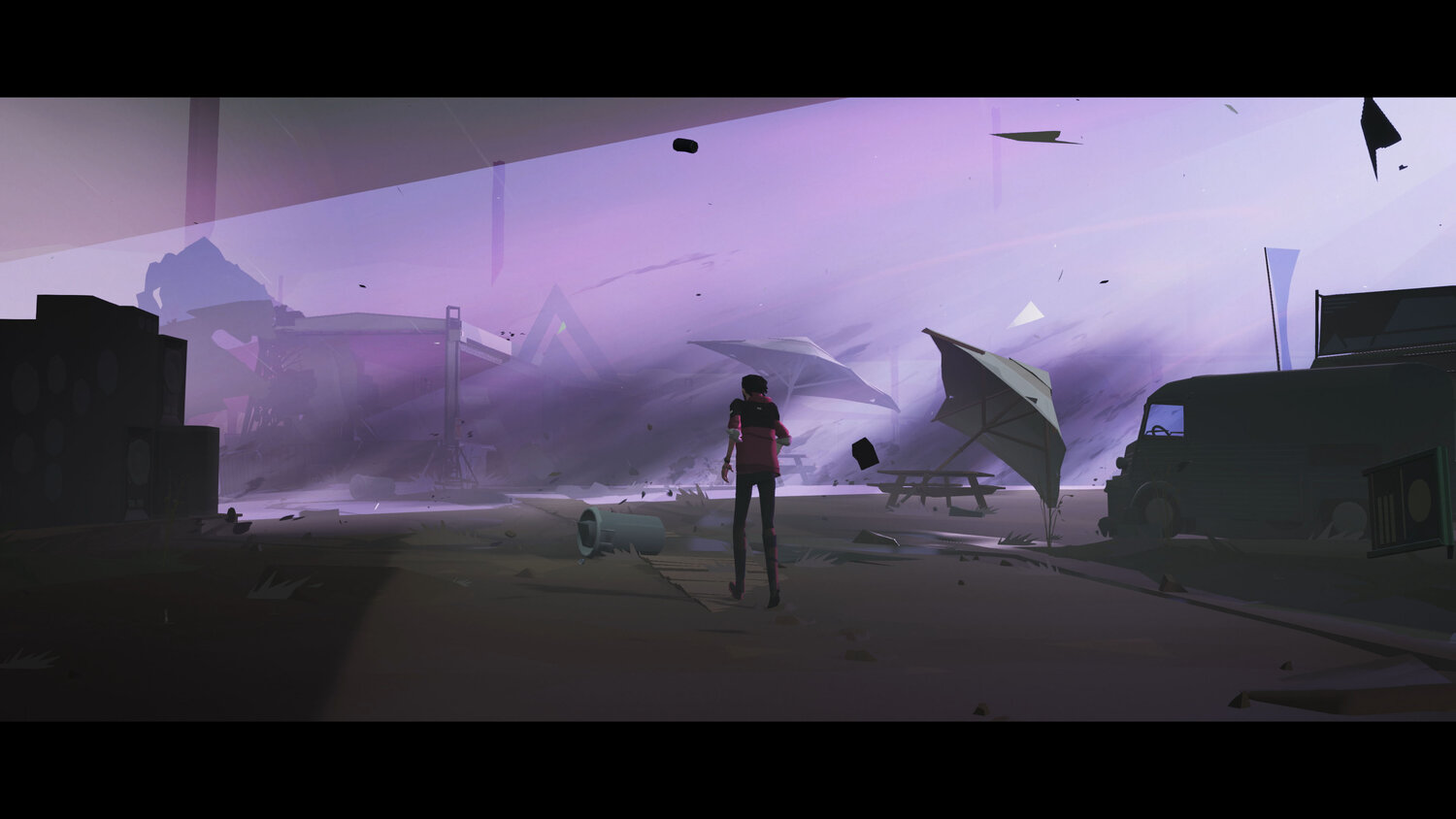
I thought that Jumpship really nailed the soundscape with Somerville, with a very minimalist approach to perfectly compliment what is happening on screen. From the sound of gentle rain as you simply meander through a forest, to the melancholy piano that plays when you find shelter and other humans, to the crescendo of horns and strings during the alien invasion. It is a very good example of “less is more”.
Speaking of “less is more”, so is the art style, where simple polygonal textures coupled with a dreary colour palette again adds to that feeling of doom and gloom. Jumpship really doesn’t hide the inspiration it takes from predecessors Limbo and Inside. The sense of scale is never lost even when traversing through tight and narrow spaces, as the camera will change angles to really show you either just how deep that cave is you’re climbing out from, or how vast the world behind you is, as you pass through more rural sections. Two of my favourite times were early on where you can simply sit on a bench on a hilltop in order to soak it all in, (be sure to take 5 and stick around for that trophy), and another later in the game where, during a chase sequence, you ascend a belltower with an aerial shot of the action unfolding below. Unfortunately though, those same camera angles can be both a gift and a curse, what they provide can so easily be swapped with frustration as your view can quickly change from one section to another in unusual ways. This can leave you stuck on small terrain you can’t see or have you going back on yourself, meaning you’ll need to change your inputs in order to continue moving in the same direction.
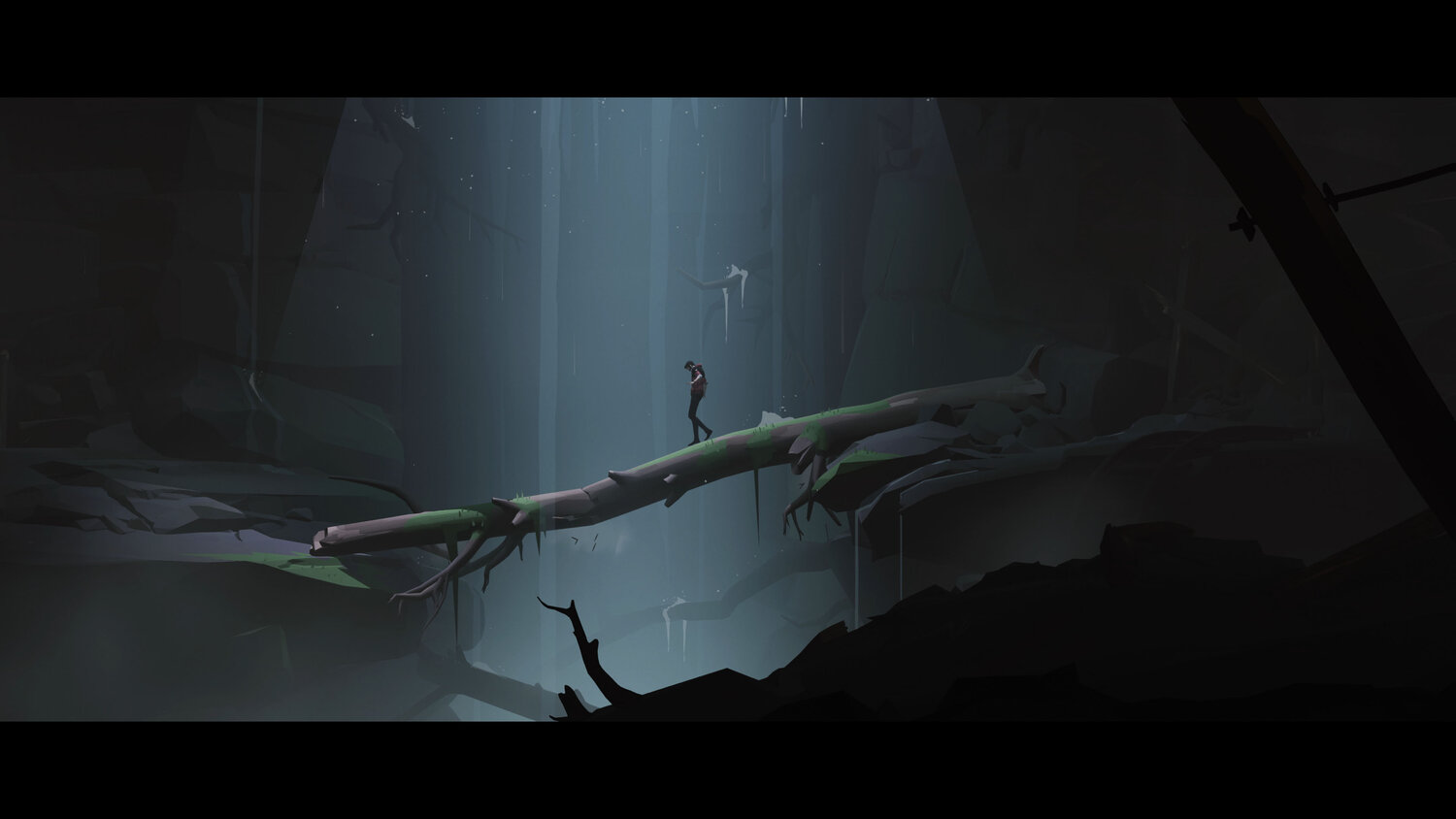
Somerville has been out since last November on PC and Xbox but got its release on PlayStation at the end of August this year, and I was grateful to receive a download code in order to review the game on my PS4. Now performance can be an issue, I initially thought it was just the fact that my old PS4 sounded like it was auditioning for the next fighter jet in Top Gun. However, with a bit of digging, I’ve noticed stutters and frame drops are in fact a known issue, but nothing game breaking by any means. I did in fairness encounter one soft lock in my whole playthrough that required a checkpoint restart, but otherwise the glitch gods were kind for my 4-hour run of Somerville. This included doubling back on myself using the ever-appreciated chapter select feature in order to mop up any trophies I had left. Always a sucker for that 100%, especially in a short but satisfying title. Worth noting that there are in fact 5 different endings to the game, 3 of which I stumbled upon, and the final 2 requiring more attention to certain details during your playthrough.
I really loved the general feeling of Somerville, the persistent undertone of foreboding created by the mix of the sounds, the look, and the ever-shifting pace from scene to scene. Just as you leave a quiet exploration segment, you can be met with crashing debris, the hope of finding fellow human survivors, or the alien mothership seeking you out like a filthy hobbit creeping into Mordor. As a father simply trying to find his family in the wake of a disaster, he ultimately has the power to shape the fate of the planet. Despite being a short game, I think Jumpspace has created a compelling narrative that doesn’t need a single spoken word to be told well, and even with its flaws, Somerville is a title worth picking up and jumping into.
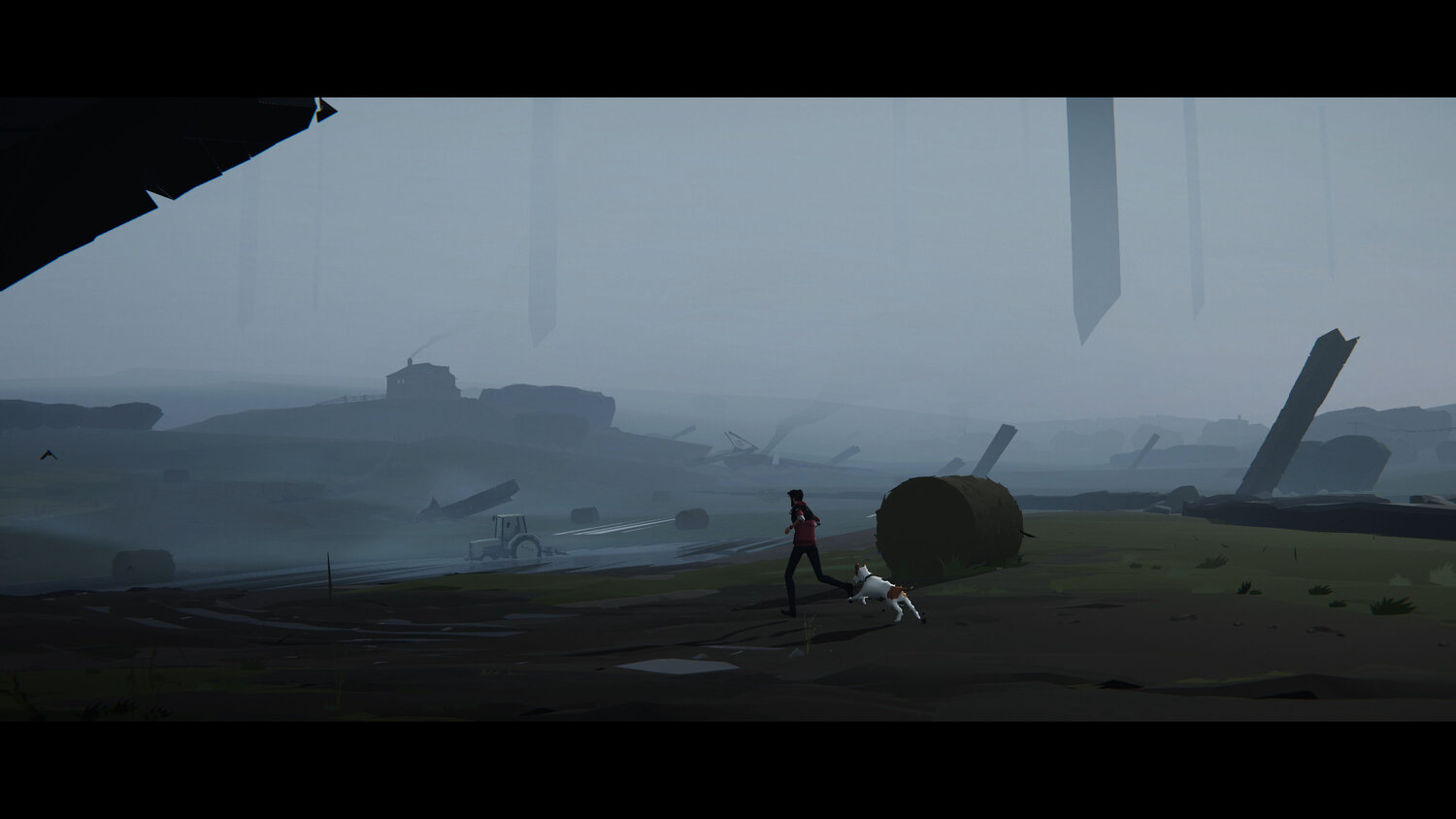

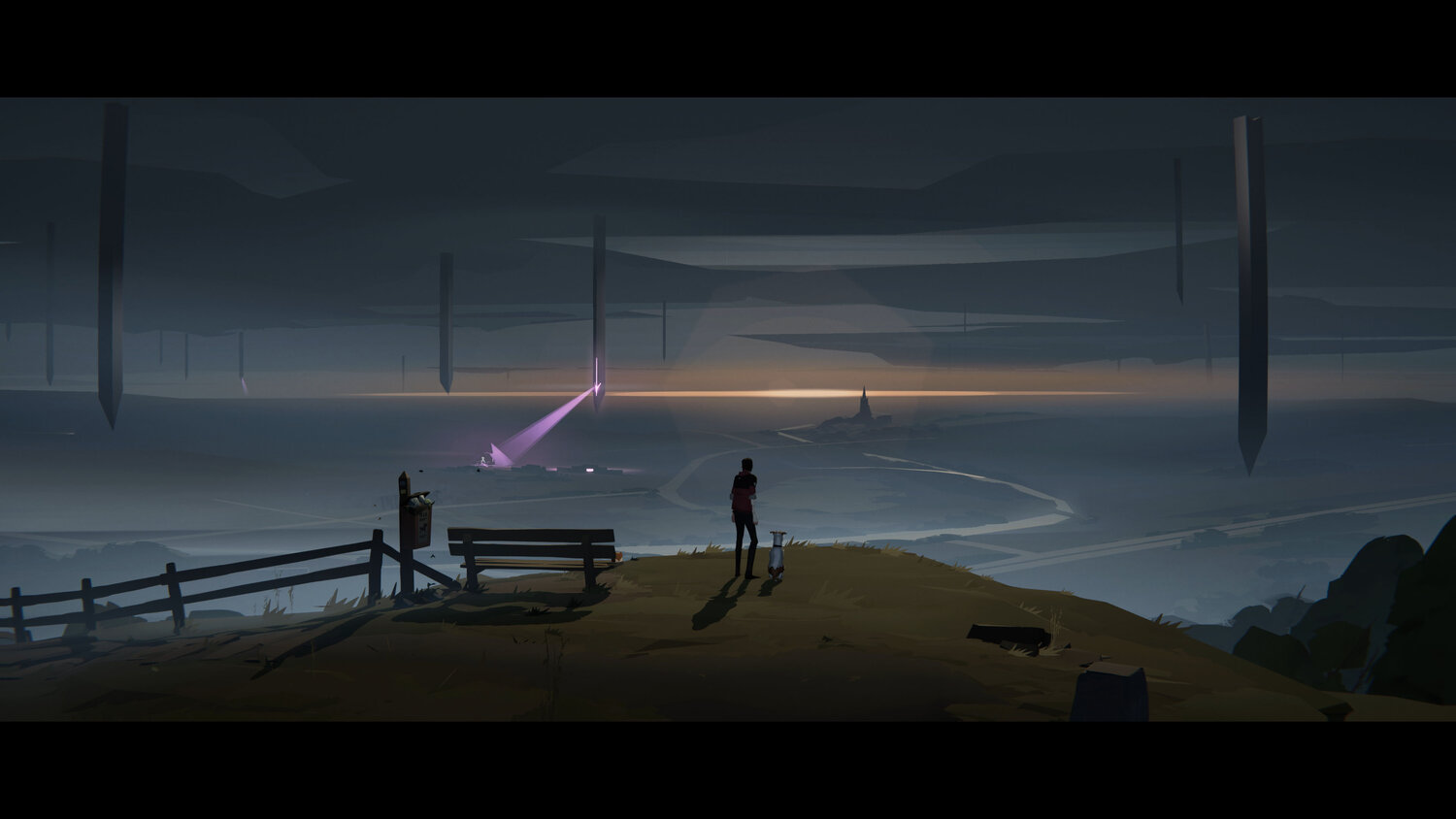

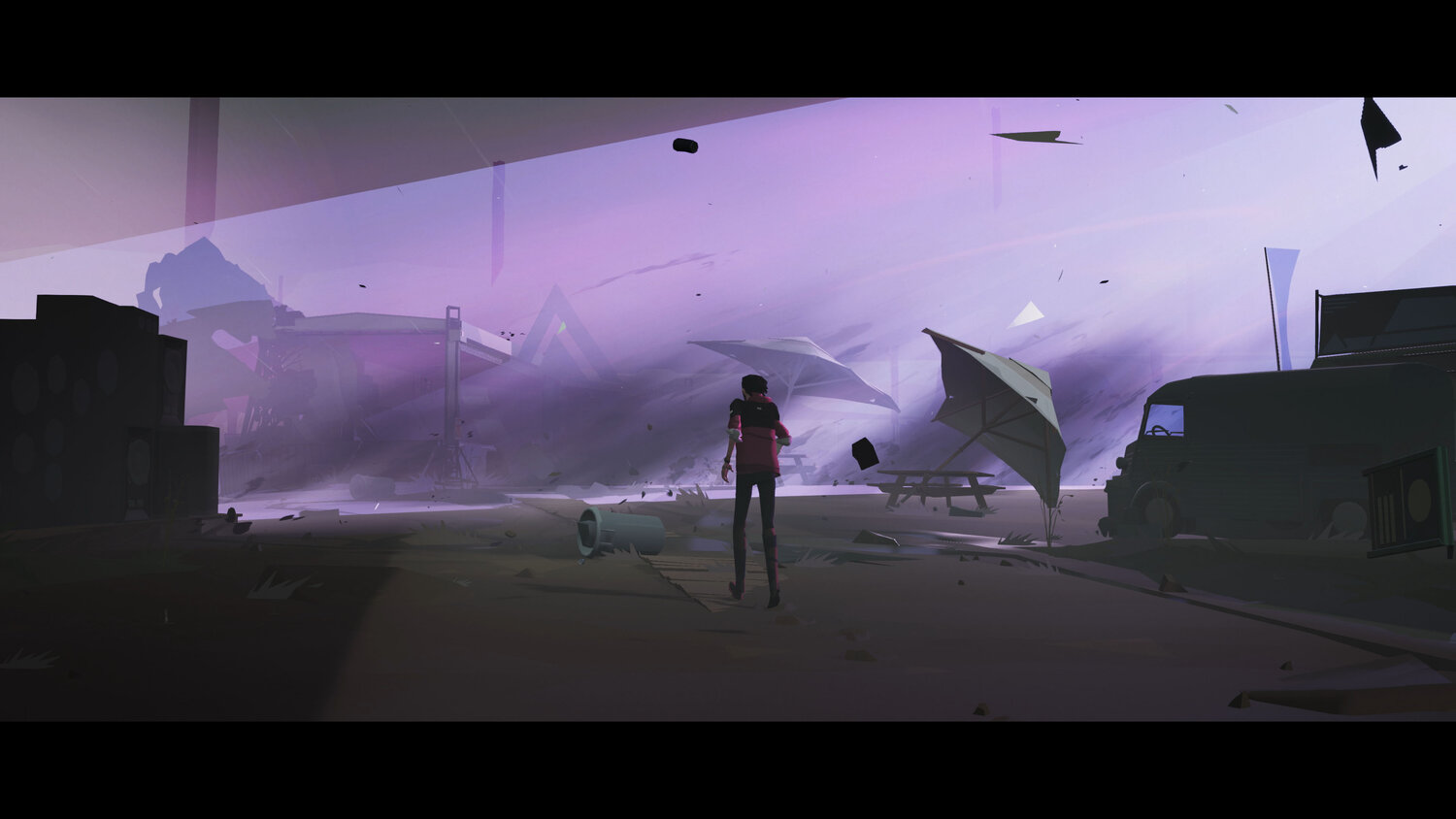
In the interest of full disclosure, VGamingNews was provided with a copy of the game in order to conduct this review.
Thanks for taking the time to read our review. If you’d like to support us further, please consider buying us a coffee!
Zool Redimensioned


It’s funny how forgotten memories ping back into existence when there is the slightest trigger. Every time I watch Jurassic Park my mind takes me back to those red velvet seats of Macclesfield cinema, where a miniature Joe is tucking into some mint Matchmakers and staring at awe in the T-Rex charging at an injured Ian Malcolm. The same happened when I booted up Zool Redimensioned, I was thrown back into a childhood memory long forgotten where I was with my friend, watching his sister navigate a ninja-alien-ant character through a colourful, candy filled screen, trying to collect all the sweets to proceed to the next level.
At A Glance
| Scores | |
| Visuals | 8/10 |
| Sound | 4/10 |
| Gameplay | 8/10 |
| Overall | 8 /10 |
| Positives | + Brilliant platformer + Tight controls + Bright 90s visuals |
| Negatives | – A tad short – Incohesive level themes – Music is flat |
| Price (When Reviewed) | £7.99 |
| Our Playtime | 5 hours |
| Version Tested | 1.1 |
| Available On | PC, PS4, Xbox One |
Developed by Gremlin (later, Infogrames) Zool started life in 1992, appearing on various consoles ranging from the Amiga to the Mega Drive and SNES. The titular Zool was a ninja from the Nth Dimension (although since the word ‘ninja’ was banned in Europe till the mid-90s he was marketed as an alien), had to explore strange 2D worlds in an effort to return home. The game was a moderate success and spawned a sequel, but due to the popularity of Mario and Sonic, it seemed that Zool was permanently confined to the Nth Dimension. That is until the team at Sumo Digital picked up both the rights and original source code to the game and let their Secret Mode developers have a go at remastering Zool for a new audience.
Seven Worlds make up Zool, each following the standard three stage setup: two platform levels and one boss fight. In order to progress through each stage you have to collect a certain number of whatever was on offer. The original developers of Zool took inspiration from different parts of everyday life, including Tool World where everything is based around things found in a shed, and to progress you had to collect bolts found strewn around the place. Each of the levels are fun to explore, but because each stage is unique, there is no cohesive ‘thing’ to collect. Mario has his coins, Sonic laps up rings, and Zool seems to take whatever is on offer which might not sound like a big issue, the bar for passing a level is pretty low, but it just makes the game feel a little disjointed as there is no rhyme or reason to link one level to the next.
That being said, the look and design of each level remains a high standard despite the game being released over three decades ago. Zool Redimensioned isn’t just your left to right platformer, but one where you had to explore to get your collectibles. The themes such as Music World had me looking for musical discs, while instruments from a jazz band tried to stomp out my little alien buddy. My favourite, which happens to be the opening three stages, is Sweet World. Here, everything is made of sugary treats, chocolates and gumballs make up trees and hills, with the enemies taking more than a passing inspiration from Maynard’s Licorice Allsorts as they try and take down the nimble ninja. The updated graphics ensure that the already colourful game remains as such. Colours are fun and vibrant, and pop out of the screen and make the aforementioned Sweet World utterly desirable. I don’t know if it’s a product of subliminal messaging or the fact the graphics are that good, but I have had a desire to hunt down a lot of candy, which is an achievement in itself as Allsorts are utterly gross.
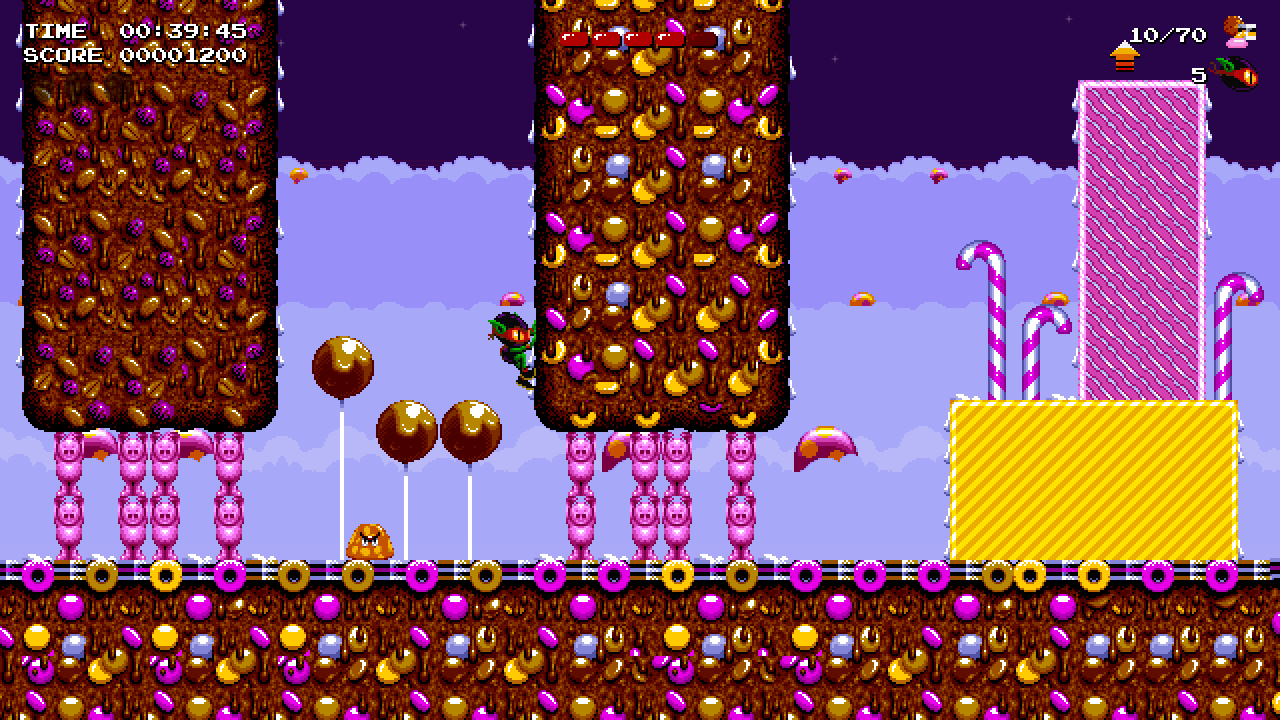
Just knowing that Zool Redimensioned has been created in part by Sumo Digital’s Academy sent me into an existential crisis. The division is there for upcoming developers to get their teeth into the business of creating and releasing games, meaning that they are generally on the youthful side of the fence. As it turns out Sumo has been doing an excellent job at fostering the talent so us oldies can breathe a sigh of relief that our obscure games of the past are well preserved. Zool features everything that made the game enjoyable back in the 90s, from the bright graphics to the precision controls needed to navigate the ninja throughout each world and while preserving what made the game special, a few modern tweaks have been added via a separate mode. The modern upgrades simply add a double-jump and a few extra health bars to make progression easier. It’s here I spent the least amount of time, but the fact the two modes were separated is a nice touch as it gives players the chance to play through the game as originally intended, and not allowing players to cop out and switch mid-way through.
The only drawbacks to Zool Redimensioned surround issues that were present in the original and that is the longevity of the game and the sound. The music sadly, does not meet the standards of the graphics. The chip-tune soundtrack was always a limitation of the day but unlike Sonic’s iconic opening, Zool has nothing to note. Even now, I’m struggling to think of music from any of the levels, it’s just utterly forgettable. The length of the game is less of an issue, but the main game will only last a few hours thanks to each stage being on the short side. Boss fights and collecting everything will pad out the time but even the harder retro mode won’t pose too much of a challenge. Both of these issues can’t be levied at Sumo Digital, as the team are remastering the original code so it’s not as if anything could have been done without taking creative liberties.
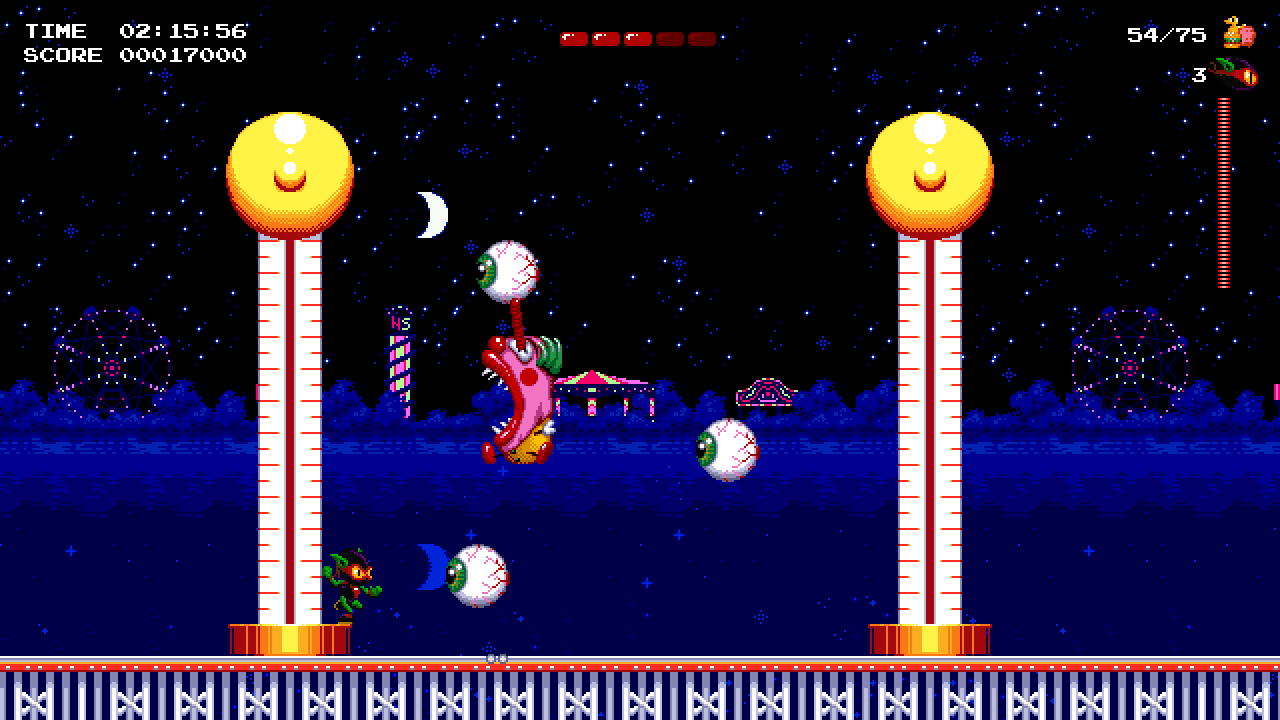
Thanks to the hard work of Sumo Digital’s student division Zool Redimensioned polishes up the original game and introduces a number of additional extras that brings an excellent platformer back from the dead. For some, Zool Redimensioned might seem like a by-the-numbers platformer but that’s part of what makes it special. In an age when zipping left to right to get to the goal as quickly as possible, Zool made players explore their surroundings and collect a certain number of items to complete the level. Granted, despite each world having their own individual themes, they do feel out of place when examined as a whole but that’s a small point on an otherwise tight platformer. For gamers of a certain age, Zool Redimensioned will likely unlock some serious nostalgia about a game that was ahead of its time and wonder why this never quite made it to the echelons of Sonic of Mario.
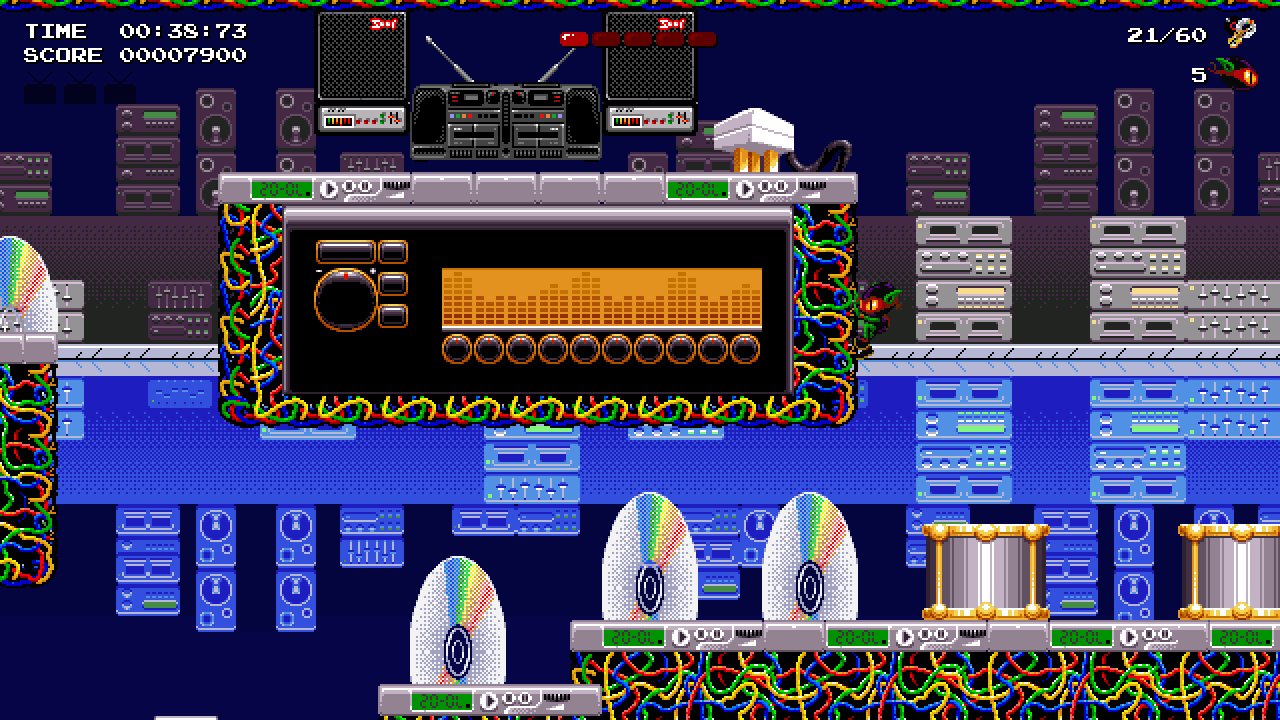
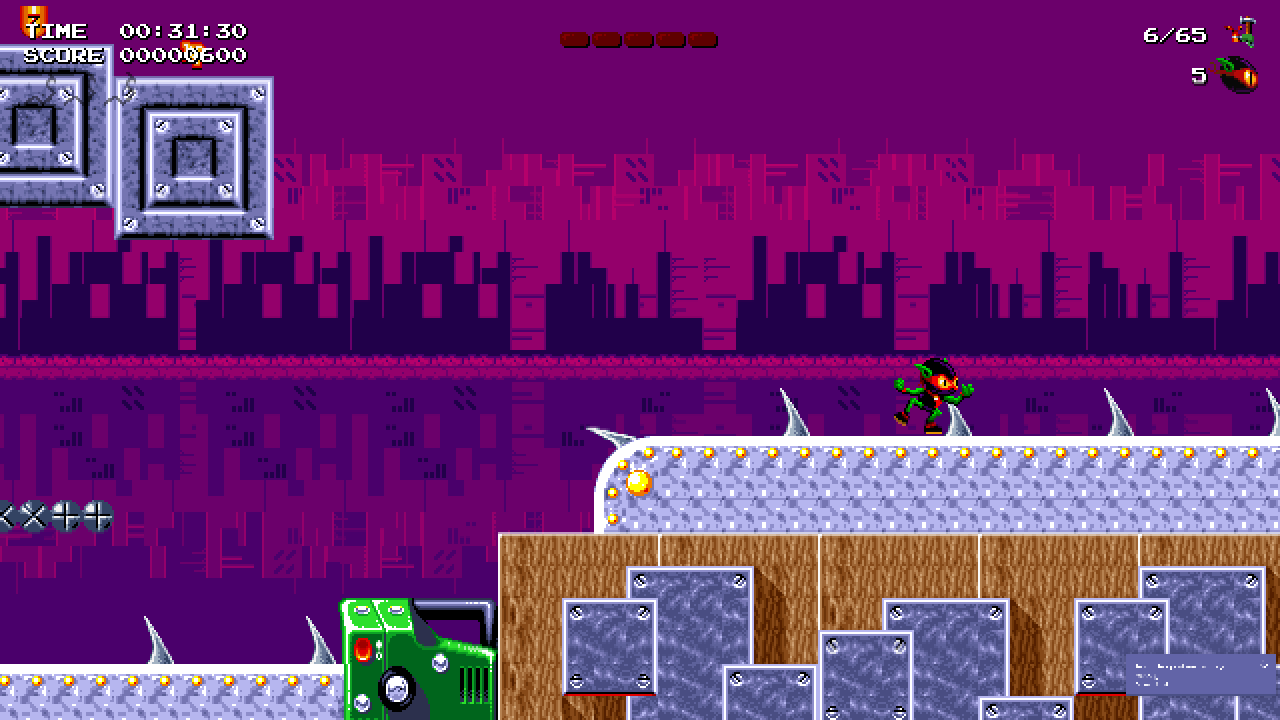
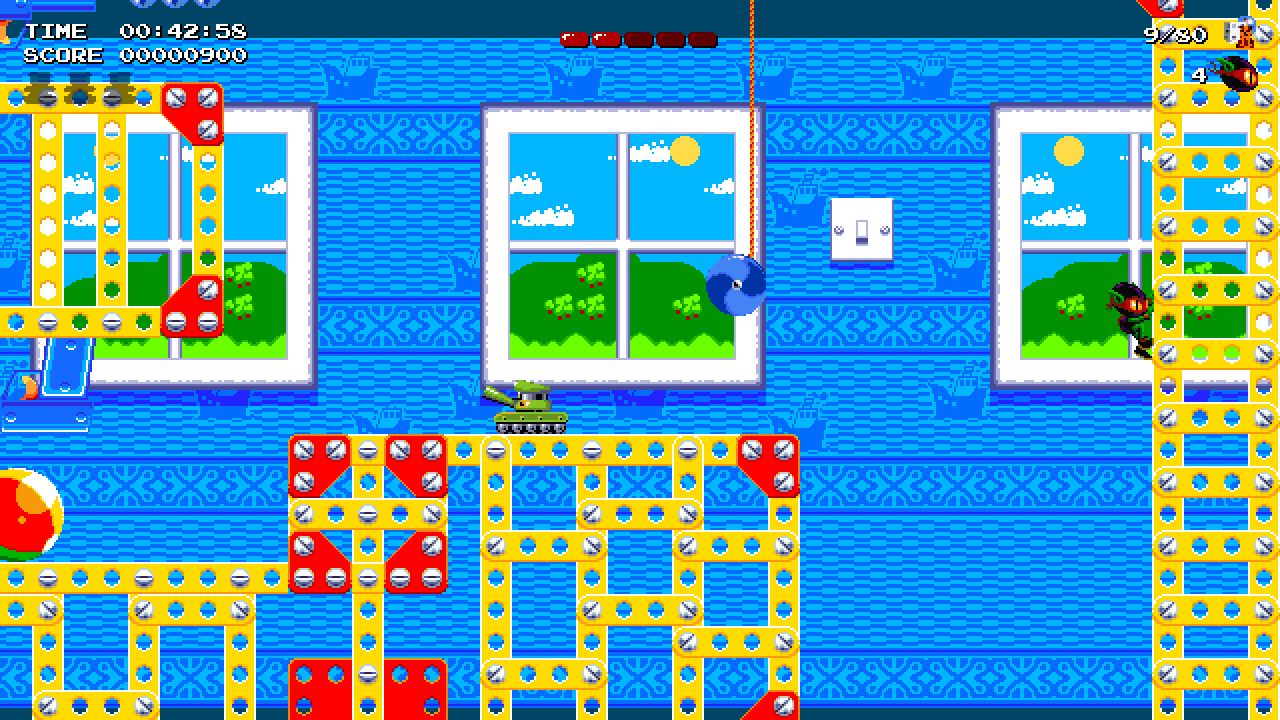


In the interest of full disclosure, VGamingNews was provided with a copy of the game in order to conduct this review and Joe wonders if T ever kept his Sonic toy safe. Tails is still going strong.
Cyberpunk 2077
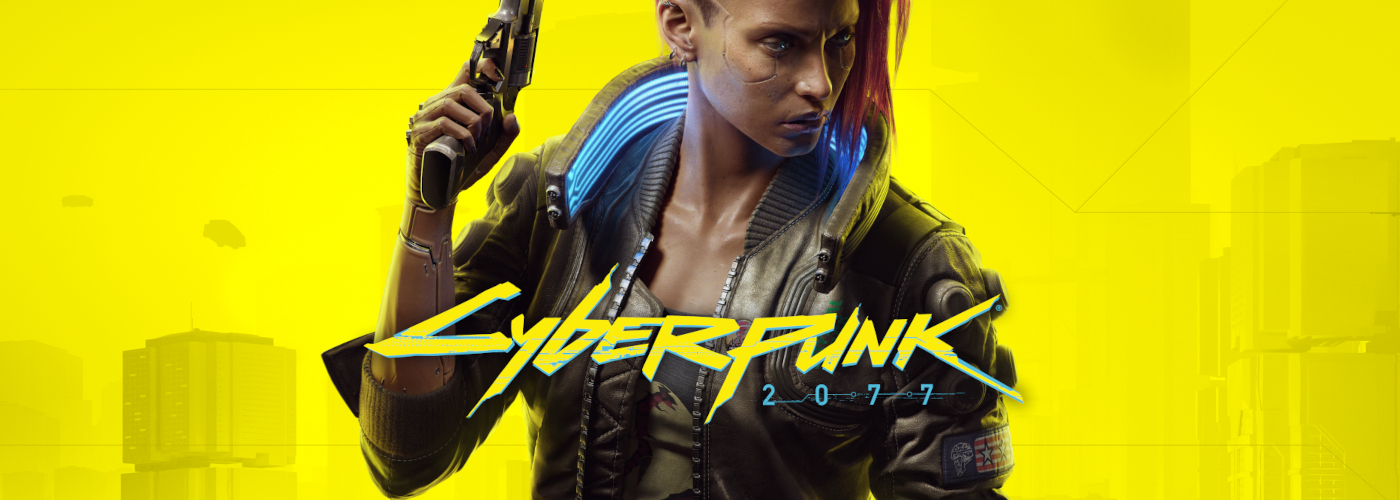
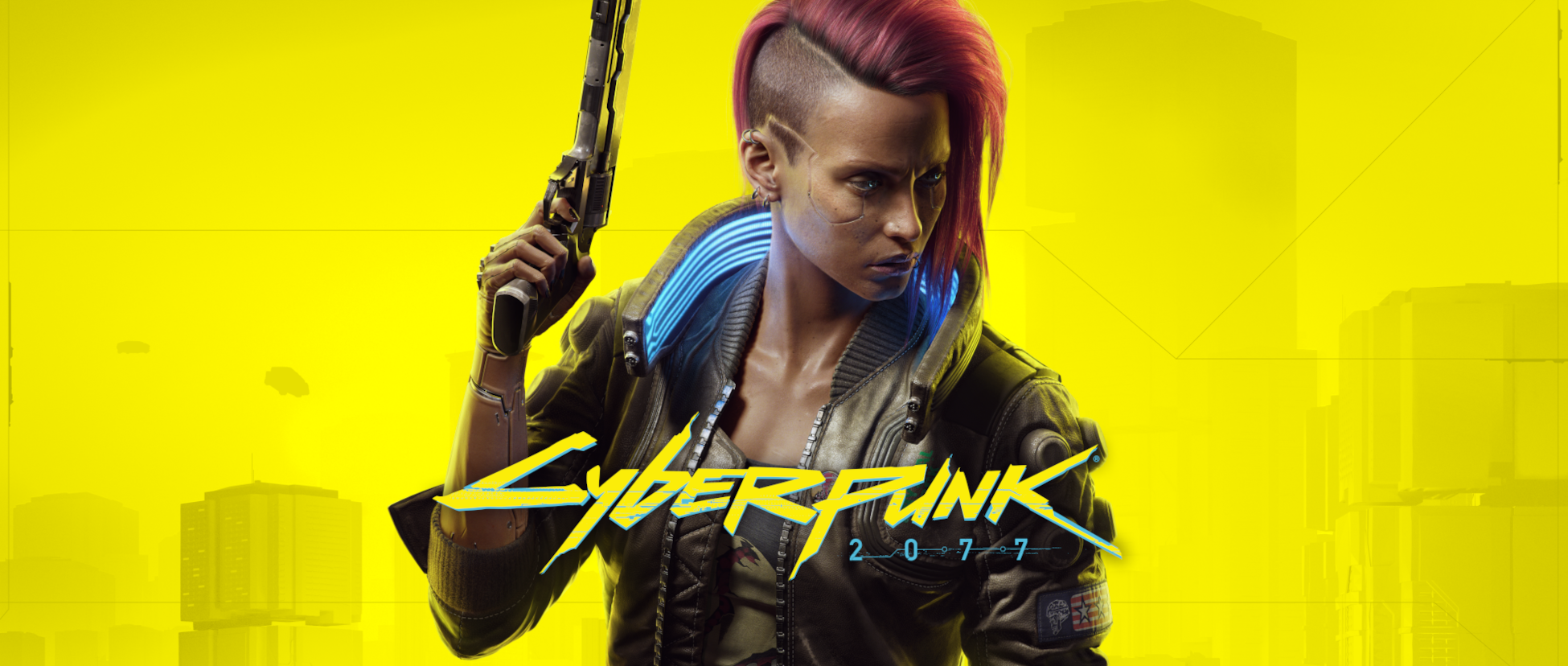
In 2012, I had already hung up my bag of ridiculous-sided dice and retired my character sheets back into the draw of stuff, but from the moment CD Projekt Red announced Cyberpunk 2077 was in development, I knew I was going to own it. Based on Mike Pondsmith’s popular tabletop role playing game Cyberpunk 2020, was a game I researched but never had the chance to play, but with a video game on the way, I knew that it wouldn’t be a long wait…
…
…
Eight years later in 2020, Cyberpunk 2077 finally released, and you may have read the horror stories about how unfinished the game was at launch. However, a year to the day since the hooha that prompted numerous PR statements, videos and a corporate apology, and after three substantial patches, I take a look at Cyberpunk in its current state.
At A Glance
| Scores | |
| Visuals | 8/10 |
| Sound | 10/10 |
| Gameplay | 8/10 |
| Overall | 8/10 |
| Positives | + Huge open world + Engaging narrative + Breathtaking performance by Keanu Reeves |
| Negatives | – Main story is surprisingly short – Unstable on PS4/Xbox One – God mode activated way too early |
| Price | £49.99 |
| Our Playtime | 106 hours 05 minutes |
| Available On | PS5, Xbox Series X|S, PC, |
Cyberpunk 2077 is an open world RPG that gives a bleak commentary on a world that runs purely on consumerism and privatisation. Set somewhere in California USA, Night City is a fictionalised amalgamation of Downtown LA and Tokyo and is a place where governments are in the pockets of the corporations and it’s citizens are kept in line with endless advertising, gang warfare and the promise of a fulfilled sex life. (Sound familiar?) It’s in this world I met V, a peppy young upstart who is trying to make a name for themselves in the underworld by taking on the biggest corp of them all – Arasaka.
But before the experience of Night City is thrust onto the screen, Cyberpunk 2077 has the obligatory character customisation schtick and designing V’s appearance, including tattoos, cybernetic implants, gender, and genital size. This has no bearing on how NPCs interact with you, in fact the only options that have any say on how the story is affected are linked to gender and voice as these open up specific, optional, romance options, as well as the different obscenities enemies will shout at you during various battles.
What does matter is deciding V’s background with three options to choose from; Nomad, Street Kid or a Corpo. Each option has subtle changes throughout the game; playing through as a Nomad opened up conversation trees that made it easier to relate to people whereas the Street Kid is able to defuse tensions between gangs. The Corpo option was the most interesting to me, as people are more hesitant around a suit, but V uses a negotiation style of conversation which results in more information being gleaned. There’s no right or wrong path to choose and the result and endings of Cyberpunk are roughly the same, but there is enough of a difference to encourage multiple playthroughs. It’s interesting to see how the situations unfold and how the characters have different levels of trust for V, and it was fun trying to navigate the missions with a different mindset.
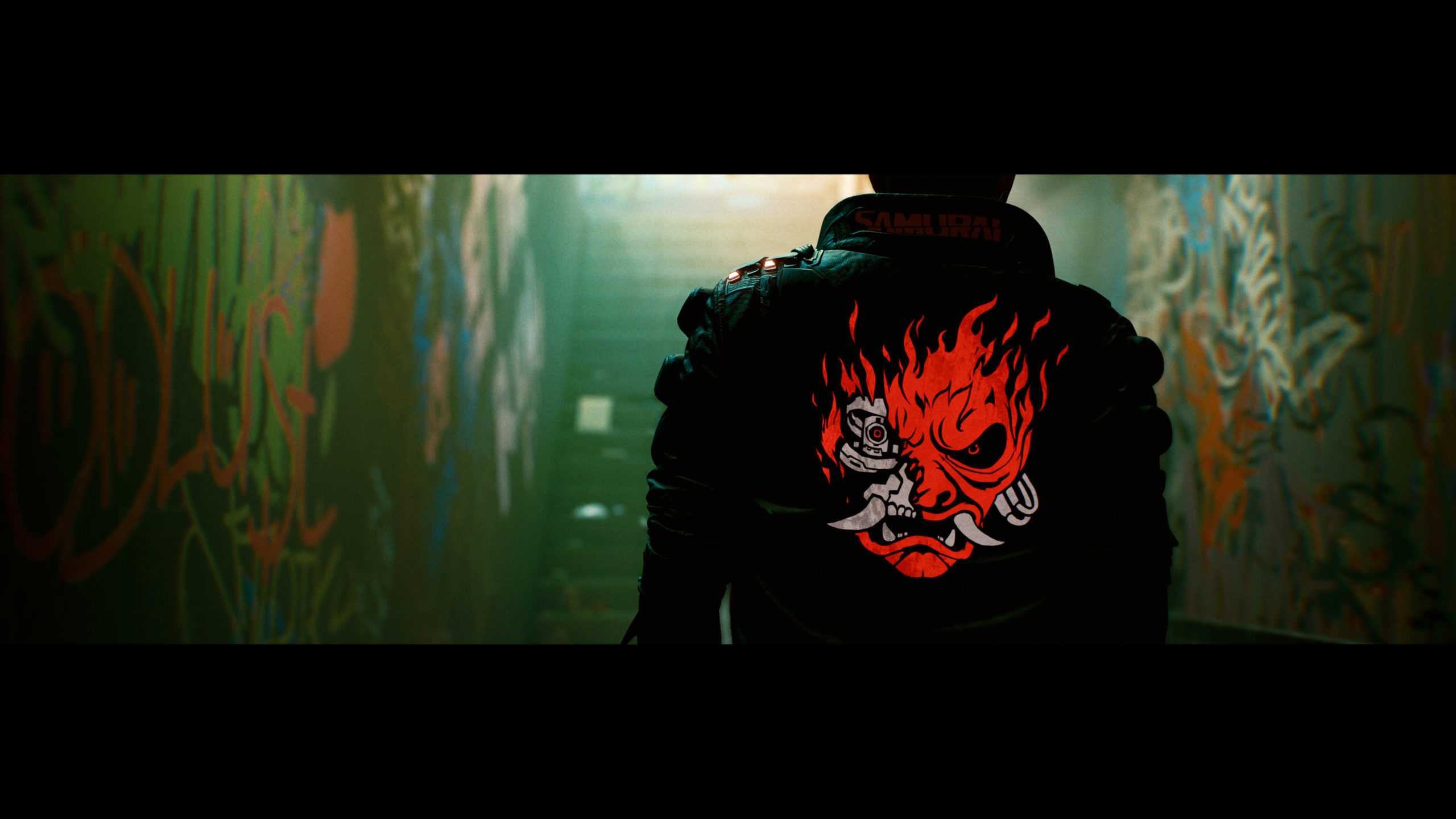
Once the lifestyle choices were decided, it was time for V to take on the Corpo Rats (a less offensive term than the one used in game), and the target was Arasaka. The ‘where’, ‘why’ and ‘who’ of the mission is made clear from the outset, and V and their partner in crime, Jackie Wells, set off on a simple heist that promptly goes south. This introduction acts as a tutorial to get to grips with what can be done and during this time V is taught the ins and outs of the weapons and hacks at their disposal, as well as ‘braindances’, a type of VR simulation that is projected directly into V’s head that allows for free roaming espionage. Everything comes thick and fast and is a little overwhelming. I prefer a more traditional approach where upgrades and new skills are found throughout the game, instead of everything and the kitchen sink is thrown at me. It wouldn’t be so bad if the skills are regularly used, but in the case of the aforementioned braindance, this only applies a few times throughout the game, which led to more time remembering how to look for clues than actually searching.
Once the barrage of information has subsided, the rest of the world opens up and V can choose to either complete the main game, or forgo that in favour of the side jobs from one the city’s many ‘fixers’; gang leaders who need a handyman to clean up the city, no questions asked. The main plot revolving around Corpo greed and V is relatively short for an RPG this size, probably sitting around the 18 hour mark. Despite all of Night City’s rich history and backstory around the prolific use of consumerism to distract from the major terrors the corporations are causing, it’s arguably the weakest part of Cyberpunk. V is effectively railroaded from one situation to another, taking it all in their stride before it finally comes to the inevitable, and despite multiple endings, predictable conclusion(s).
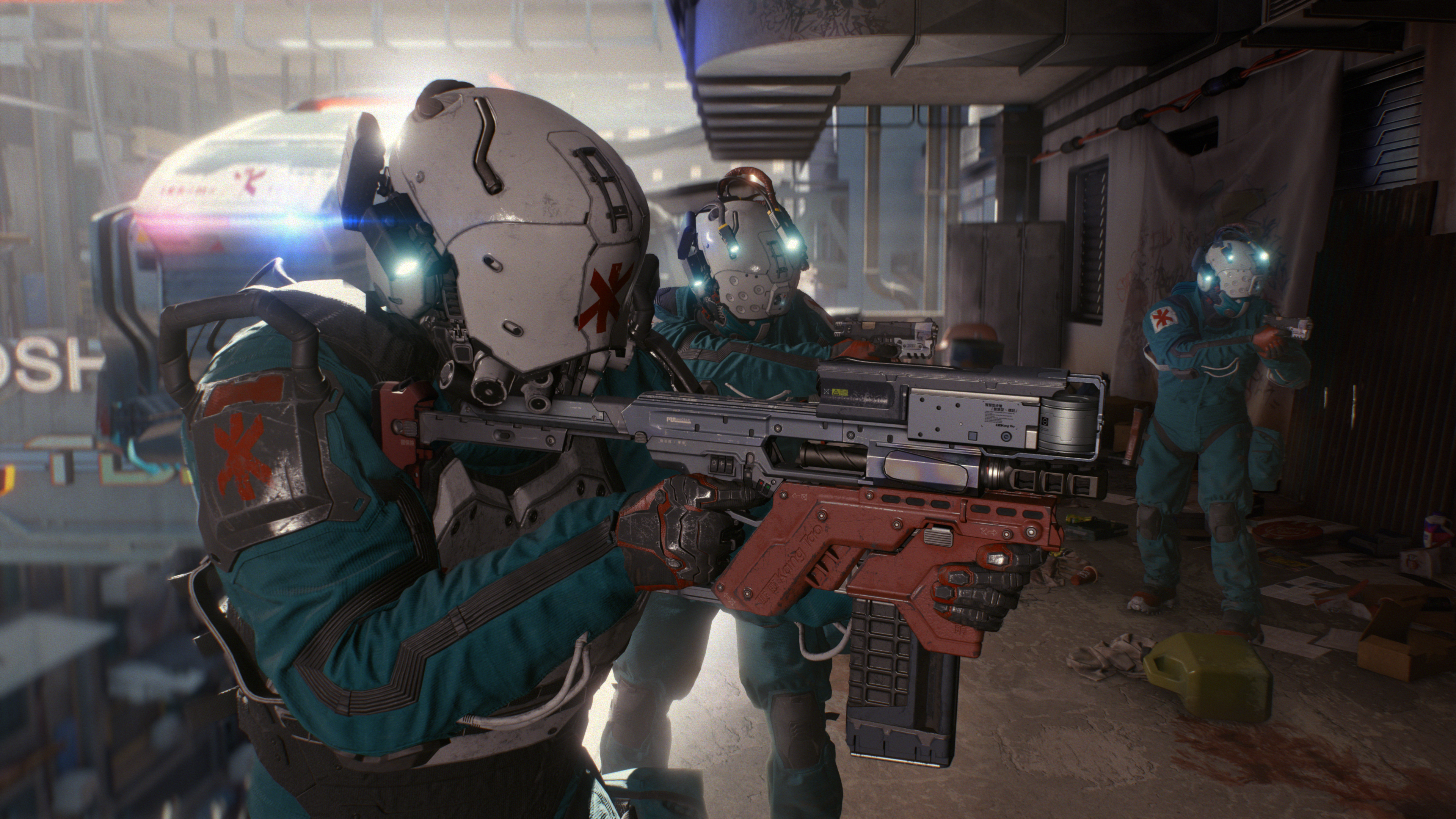
On the strength of the main story alone, Cyberpunk 2077 would be disappointing but the side quests are where Cyberpunk really comes to life, and where V spends most of their time. Missions are varied, ranging from stopping a crime in progress to assisting a journalist understand a mental condition known as cyberpsychosis. Little blue icons litter the map are the key to enjoying the game, and it’s not all serious gangster business either. While there is a fair amount of violence, some of the most memorable parts of Cyberpunk are the little touches like driving a man to the doctor, or talking to a random monk.
Exploring Night City in this way helps V to level up and gain skills in the various actions they undertake, and much like any open world RPG, it’s the typical level up system where perks are given for completing certain actions, such as hacking various outlets or using blades in combat. The downside is that V can quickly become overpowered, as I found myself being able to dispatch enemies through walls and not even having to enter buildings, which resulted in the tight combat becoming stale. This happened so fast that I ended up creating my own challenges to ramp up the difficulty, such as dressing in my finest birthday suit with only a large phallic toy as my weapon.
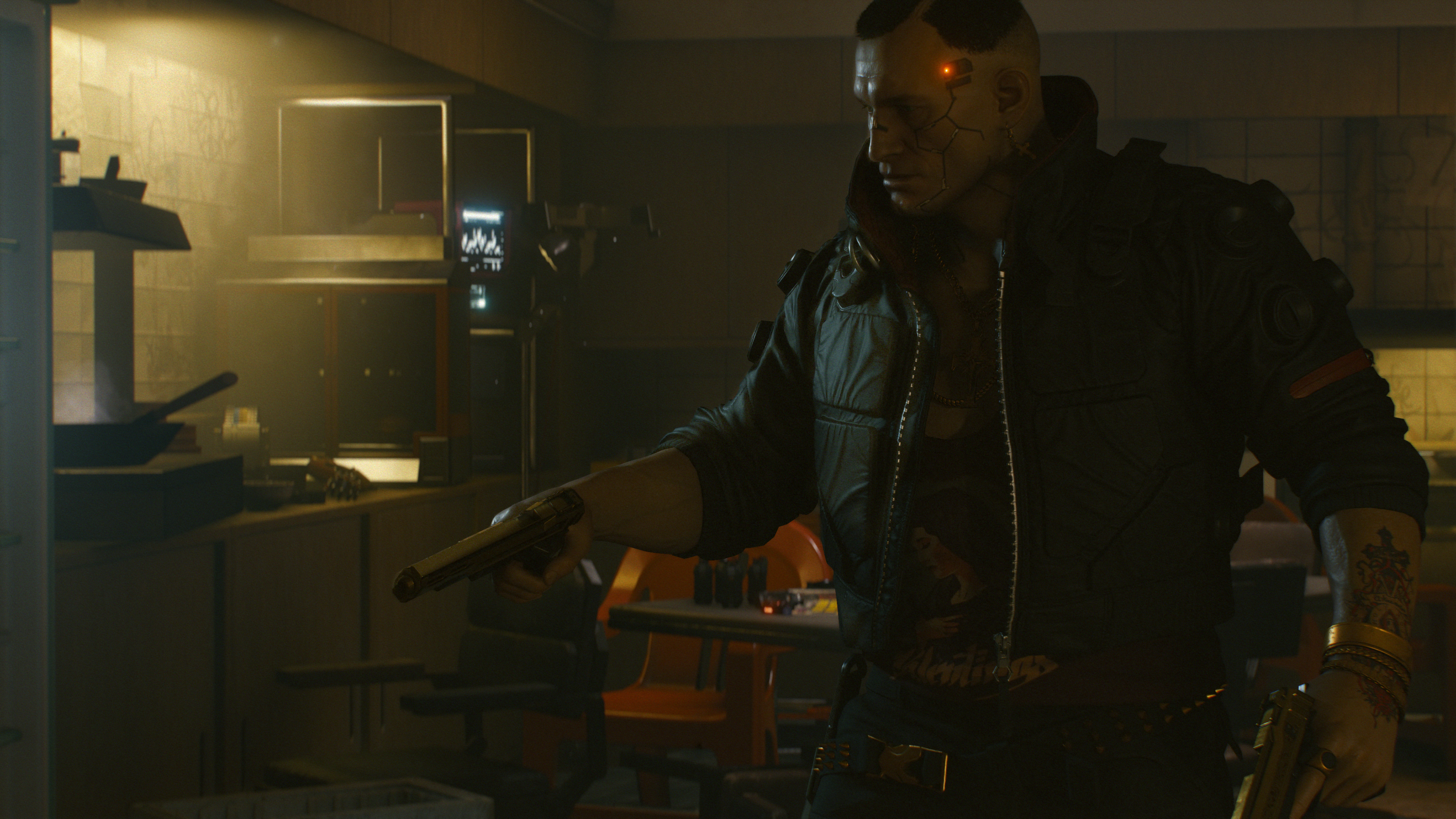
While the excitement of combat wore off, the plethora of supporting characters that V encounters kept my interest piqued. This is where romance and strong bonds can form, from the ageing rockstar Kerry Eurodyne or nomad Panam Palmer, who appear in the main quest, are given a share of the limelight. More exotic characters who you meet as a direct consequence of completing a simple side mission, such as Lizzy Wizzy, a singer who has had so many implants, I’m not even sure she has real skin, give the game a real depth that can easily be overlooked. If these options are fully explored, it does affect how the game ultimately concludes so it is a benefit to attempt some of these missions.
The key character of the piece is Johnny Silverhand, the lead singer of notorious rock band Samurai, and local terrorist, not only played by and with the likeness of Keanu Reeves, but fully motioncapped by the actor himself. I assumed he’d only be present as a cameo to give the game star power but boy was I wrong. From the moment V meets Silverhand at a dump, he completely steals the show. Reeves isn’t here for five minutes and a paycheque, he’s the real deal. His performance might be full of words I’d never say to my mum, but contains dialogue with a lot of depth and heart behind it and made me truly believe that his cause was just.
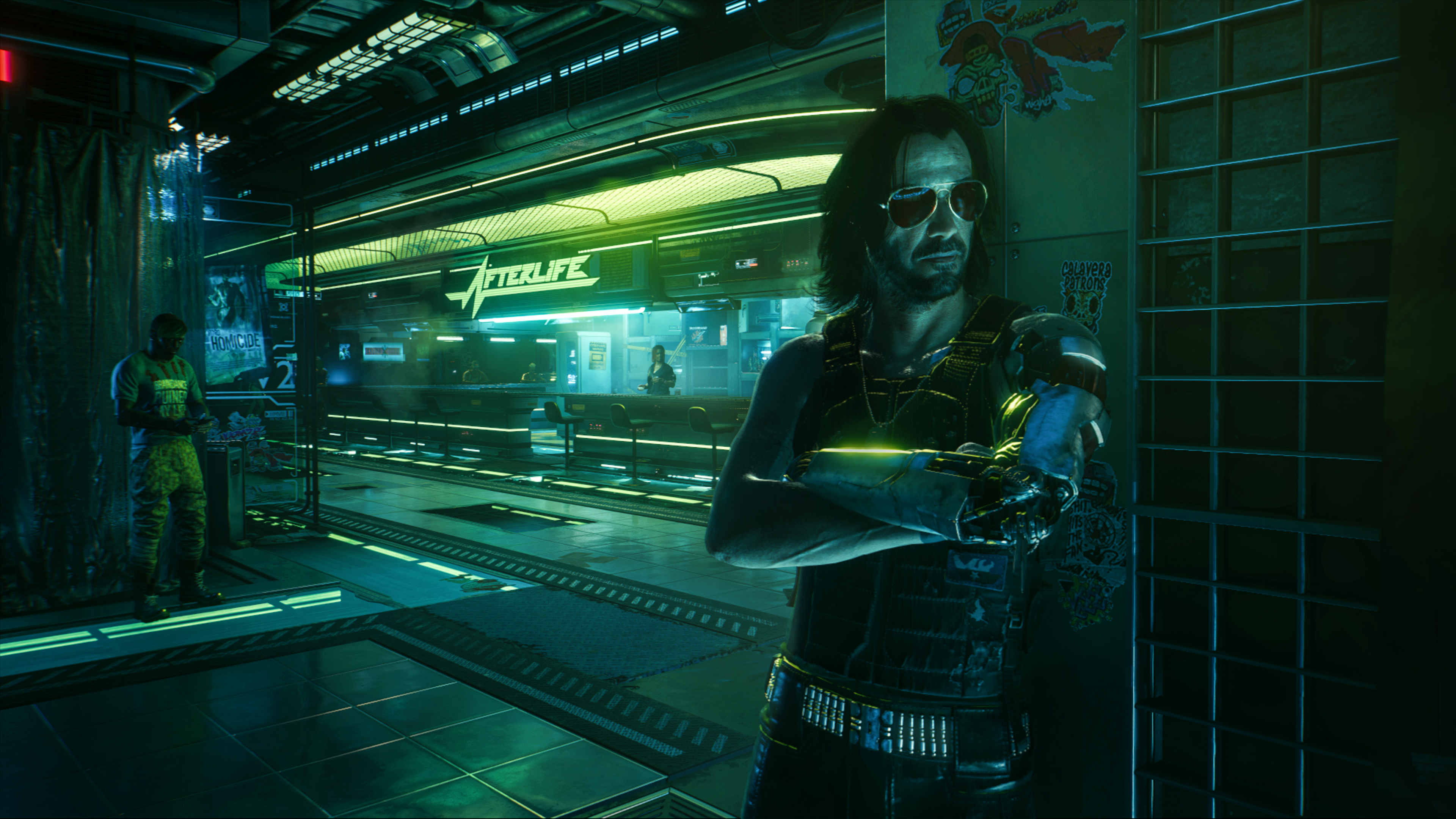
Johnny isn’t only an influence on how V conducts business in Night City; you’ll hear his band Samurai throughout the game’s soundtrack too. Not voiced by Reeves himself, the performance is left to Swedish hardcore punk band, Refused, who stomp out fast and frenetic tracks ensuring the punk scene is still alive in 50 years time. The rest of the soundtrack is equally enthralling. Driving around Night City, listening to the different radio stations, I was met with a look at the future of music – RnB, hardcore rap, death metal, and even jazz were all catered for and with each artist being credited under pseudonyms, it gave Night City a more authentic feel. Along with the truly diverse soundtrack comes a musical score from Marcin Przybyłowicz, who also arranged CD Projeckt’s last game, The Witcher 3: Wild Hunt. Joining him are P. T. Adamczyk and Paul Leonard-Morgan, who drew inspiration from 1990s rave culture to produce exhilarating industrial-techno beats that are the perfect accompaniment to V’s hacking and shooting shenanigans. The music is a true highlight of Cyberpunk, perfectly encapsulating Night City’s diverse areas and even after 100+ hours, it managed to stay fresh and firmly rooted in my mind for weeks after.
Cyberpunk 2077 also ticks a lot of boxes in the looks department as Night City sprawls out in front of V, filled with huge mega-towers full of people as they busy about their lives. Areas of poverty and wealth are connected by a snaking multilayered road system and much like a city in the real world, the different areas give off very different vibes. The main Corpo plaza is rich, with glass skyscrapers and black marble blocks, and futuristic projected fish swimming above the suited people below. There are less affluent areas too, such as Pacifica, a planned holiday area akin to Los Angeles’ Santa Monica that was sent into disrepair after the funding was pulled part way through development. The dilapidated section of the city is where most of the city’s homeless and gangs can be found, usually at the abandoned fun fair or a mall that looks like it comes straight from a George Romero zombie feature. The map is absolutely gigantic and varied, and with the omission of a volcano, certainly packs a lot of environments for you to seek out. Although, I did come across a noticeable number of repeating NPCs and seeing the same character model, in exactly the same outfit walk by for the fifth time in less than a minute raised an eyebrow.
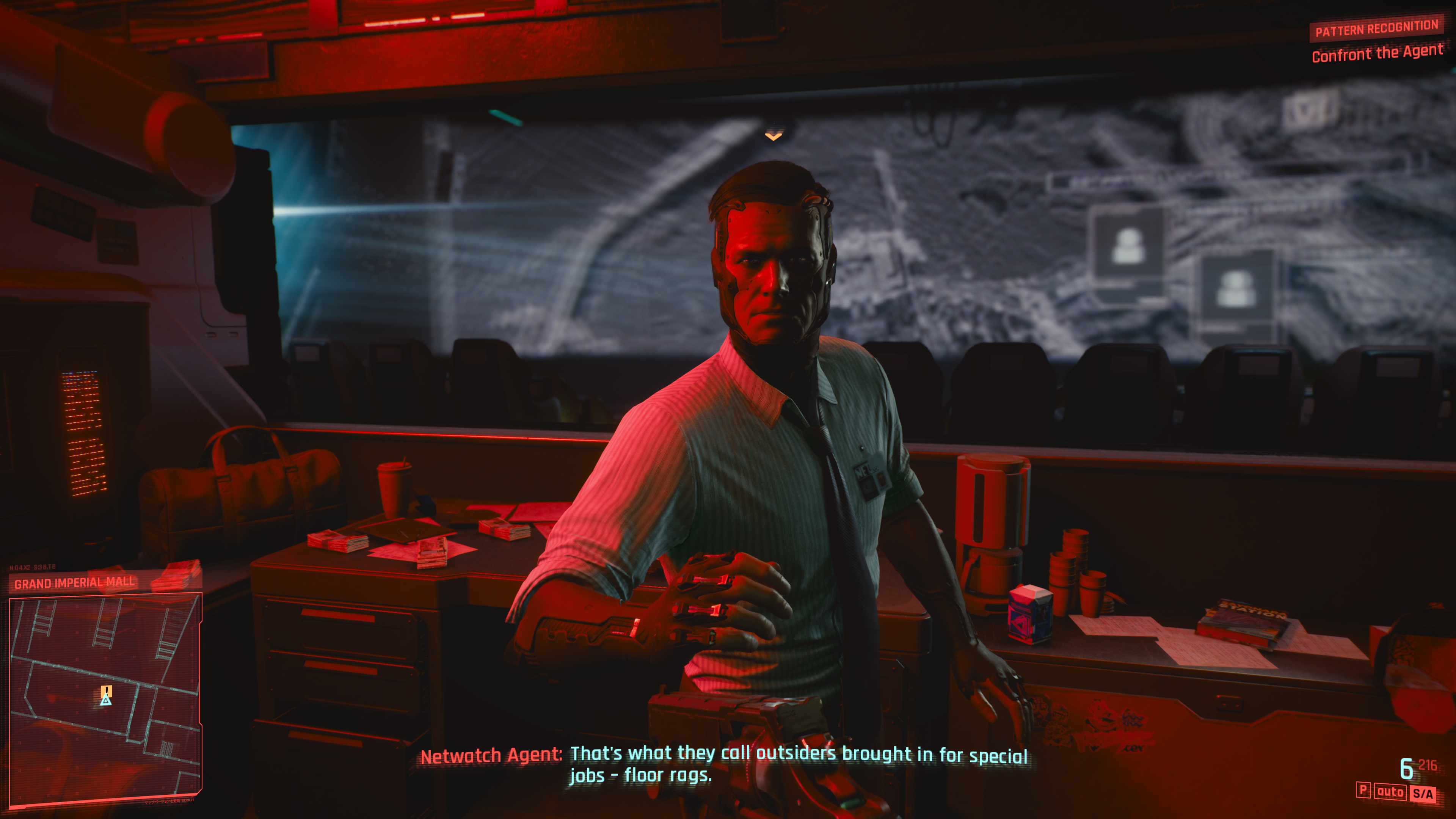
Unfortunately, as impressive as it is, the fact remains Cyberpunk 2077 was released too soon and on hardware that can’t cope with it, and even a year since release is still facing problems. If you can, I’d steer clear of putting the game into your PS4 or Xbox One – it’s simply not worth the hassle. After three large patches I still suffered lengthy load times, multiple crashes back to the console’s menu and assets not acting correctly, with cars often disappearing through buildings. Not to mention the consoles fan running louder than a jet plane.Playing through the game on the PS5 is like night and day however; load times were reduced significantly, cars didn’t vanish into buildings and, most importantly, the disc drive was silent. There are still a few crashes that appear once every two or three hours into a session, and there are still a few other kinks to work out too. Driving on a motorbike and suddenly being thrown into space was a spectacular highlight but these major glitches were few and far between; most of the time the worst I encountered was loot being clipped into the floor so I couldn’t pick it up.
Ironically, the corporate decision to release a game about greed is what has given Cyberpunk 2077 a bad name; the console versions were simply released far too soon and while experiences will vary, I insist on playing Cyberpunk 2077 on either the latest consoles or at the very least a PS4 Pro / Xbox One X. I shouldn’t have to recommend this as it is unacceptable for a console game to need newer hardware to simply work. For a Triple-A, multinational team to rely on people upgrading their hardware to accommodate their game, is simply not on in the console landscape. Not everyone is in a position to upgrade their hardware on a whim and by releasing a broken game that has had eight years of build up, it is ultimately a disappointing decision.
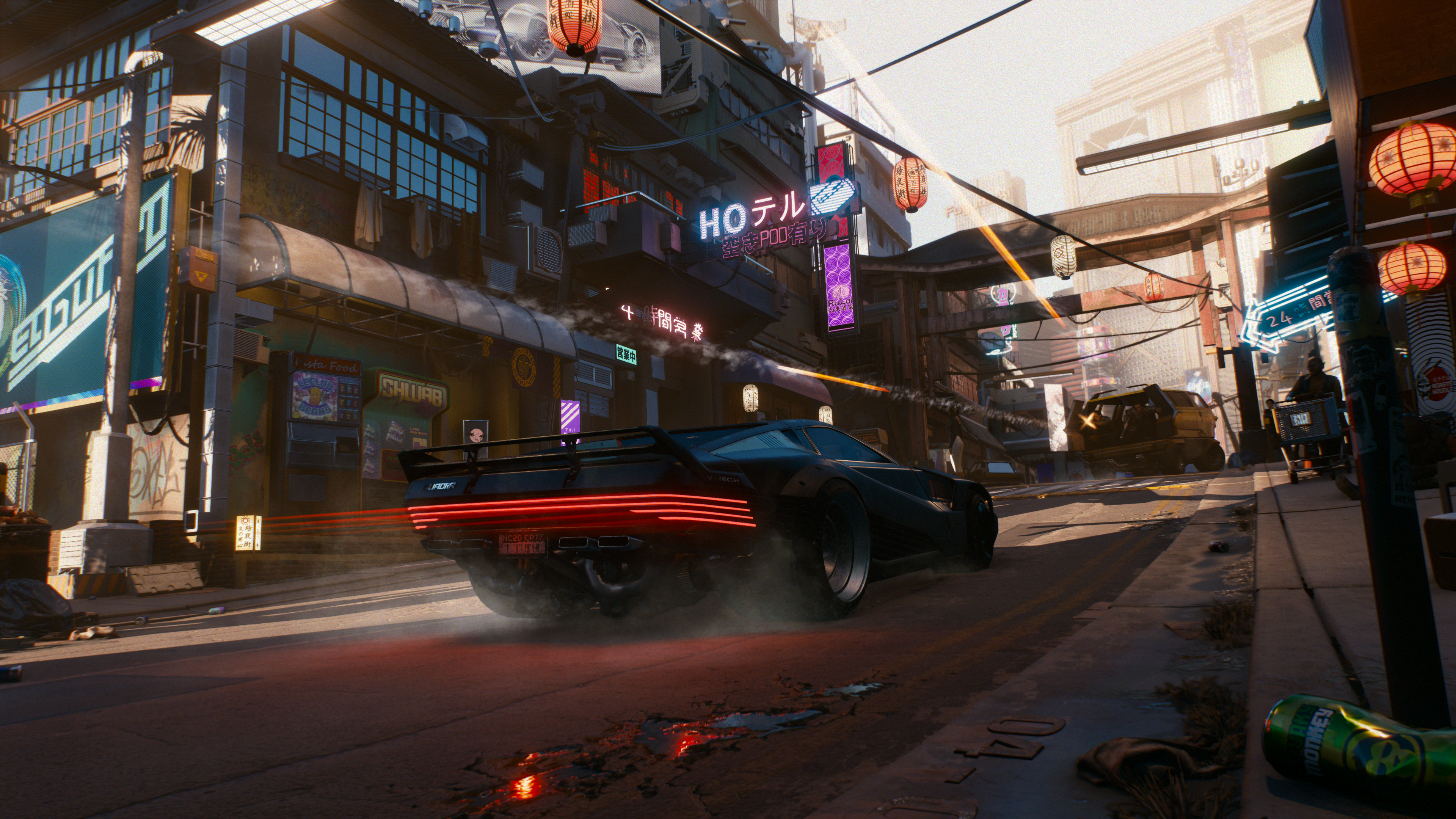
Putting all of the bad business decisions to one side, we are left with a great game that I urge people to experience and, a year since release, most of the main bugs have been cleaned up. The main story is on the short side and feels rushed, and once levelled up to a certain point, everything becomes a little too easy. The side missions are where the fun resides and taking time to explore the huge open world, getting to know the history of the city and the key inhabitants is the most rewarding quality about Cyberpunk 2077. The whole piece showcases a gritty life in the underworld with over the top violence but also eases the tone with moments of utterly insane fetch quests. Cyberpunk 2077 might have taken a year to get to a decent state but has been one of the most fun games I’ve played in the last 12 months, warts and all.
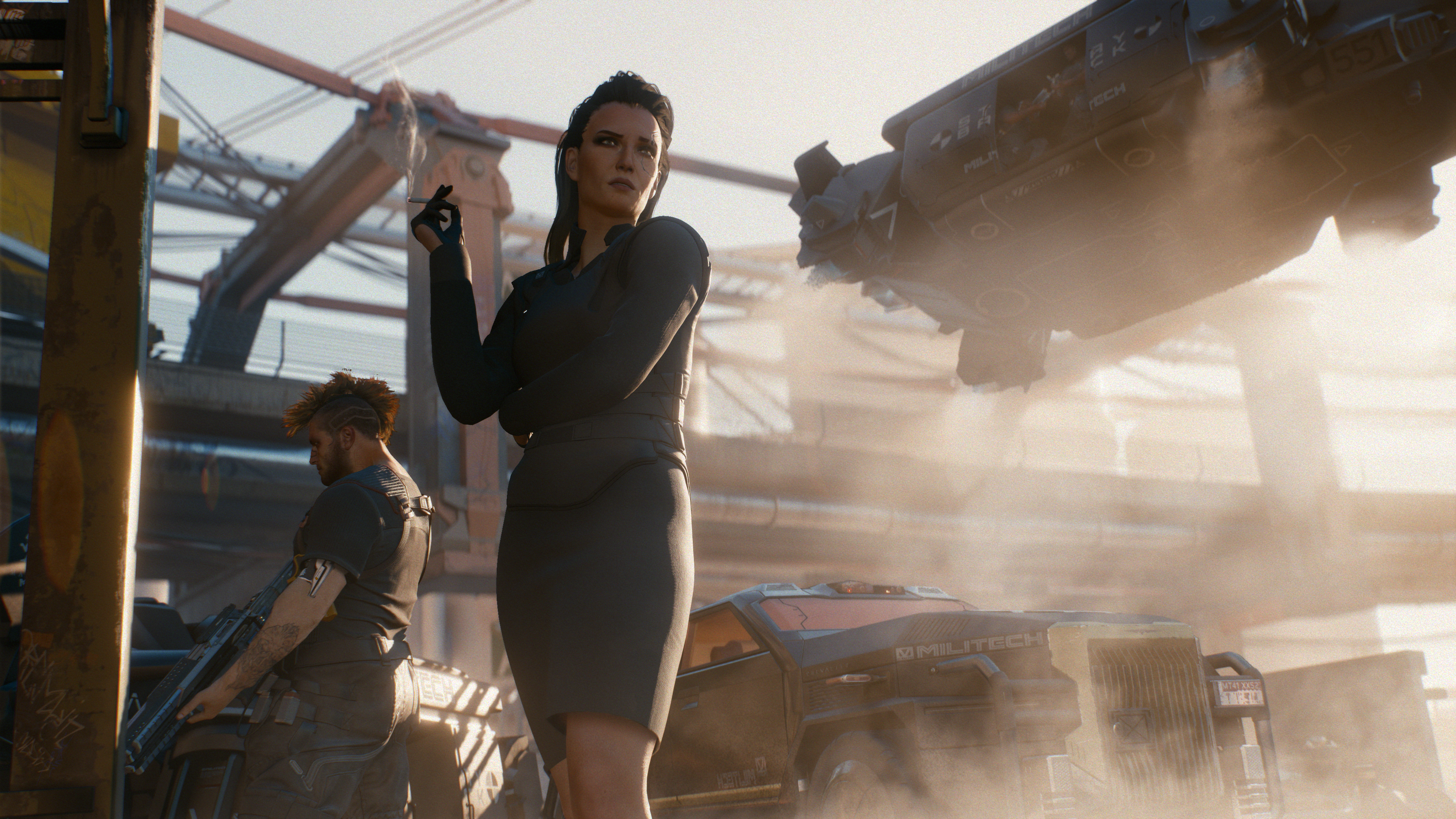
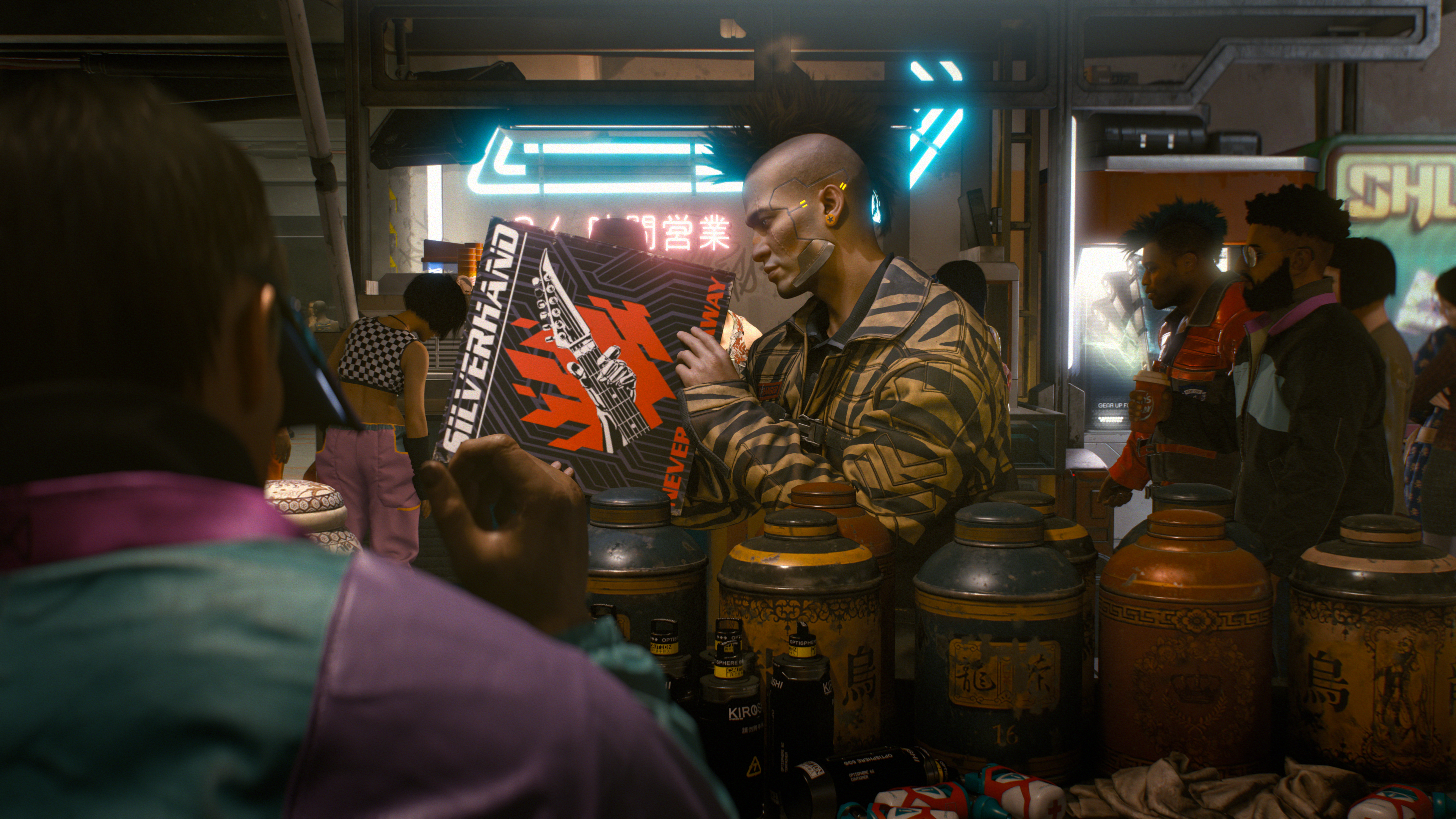


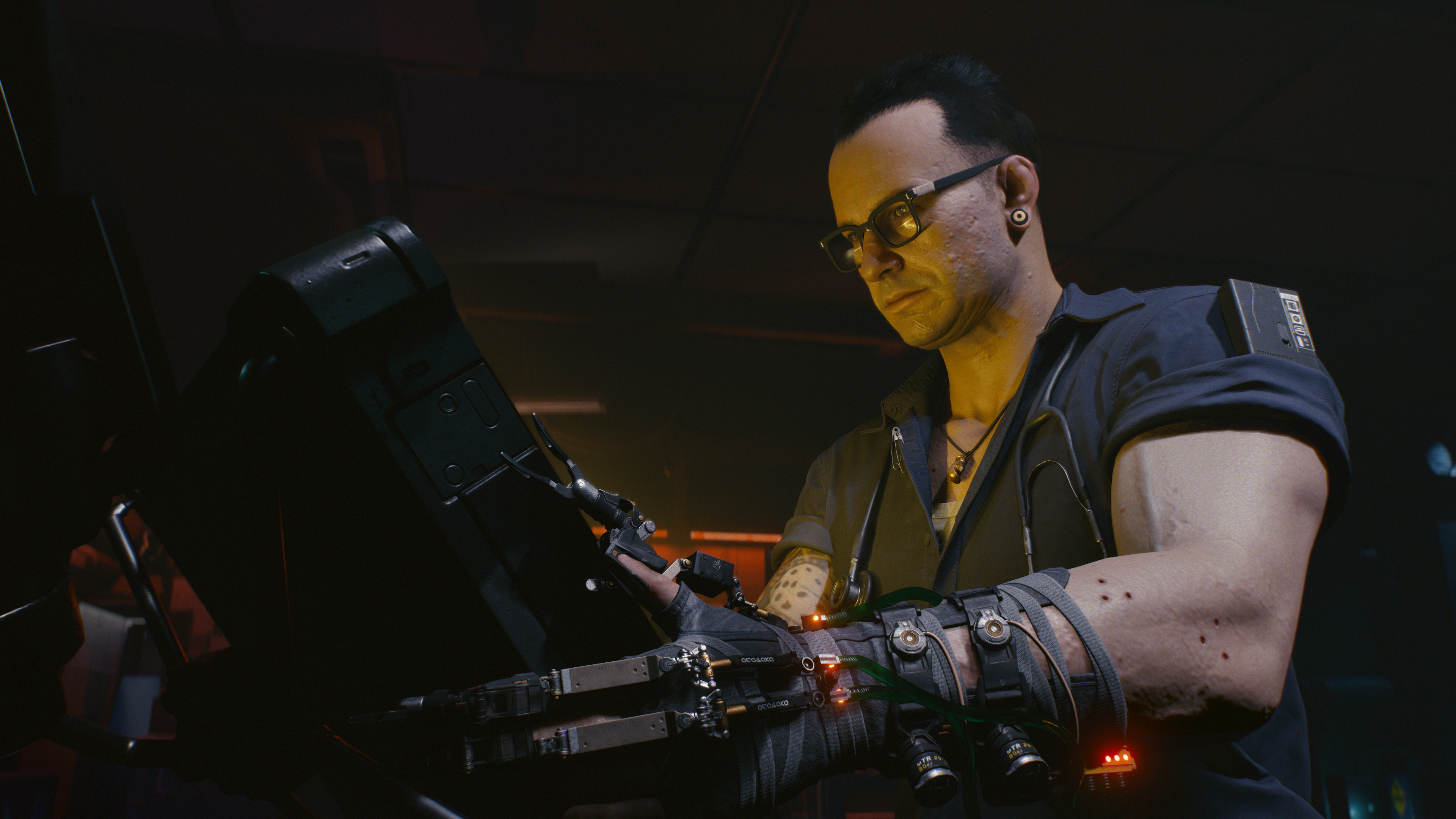
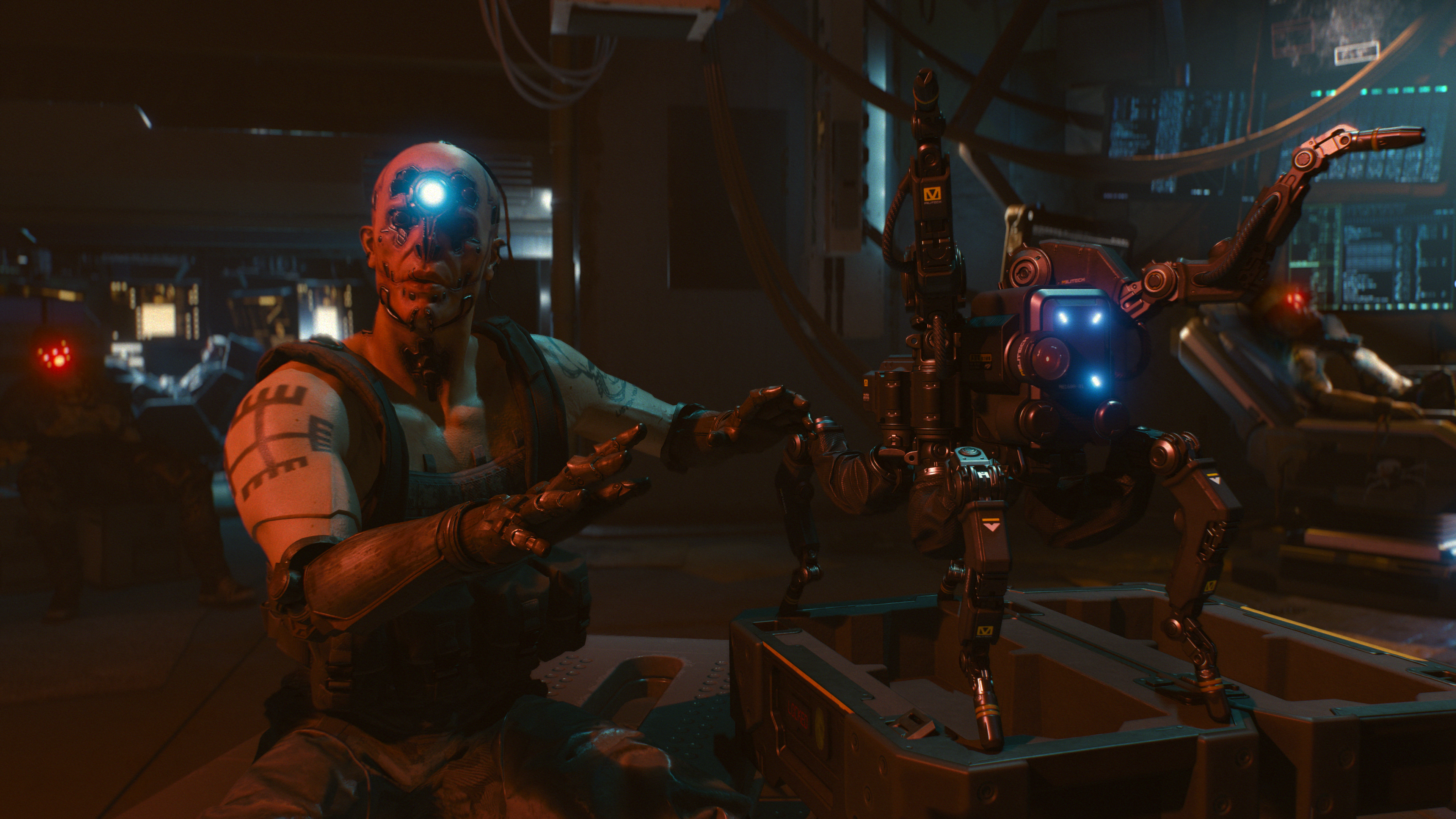
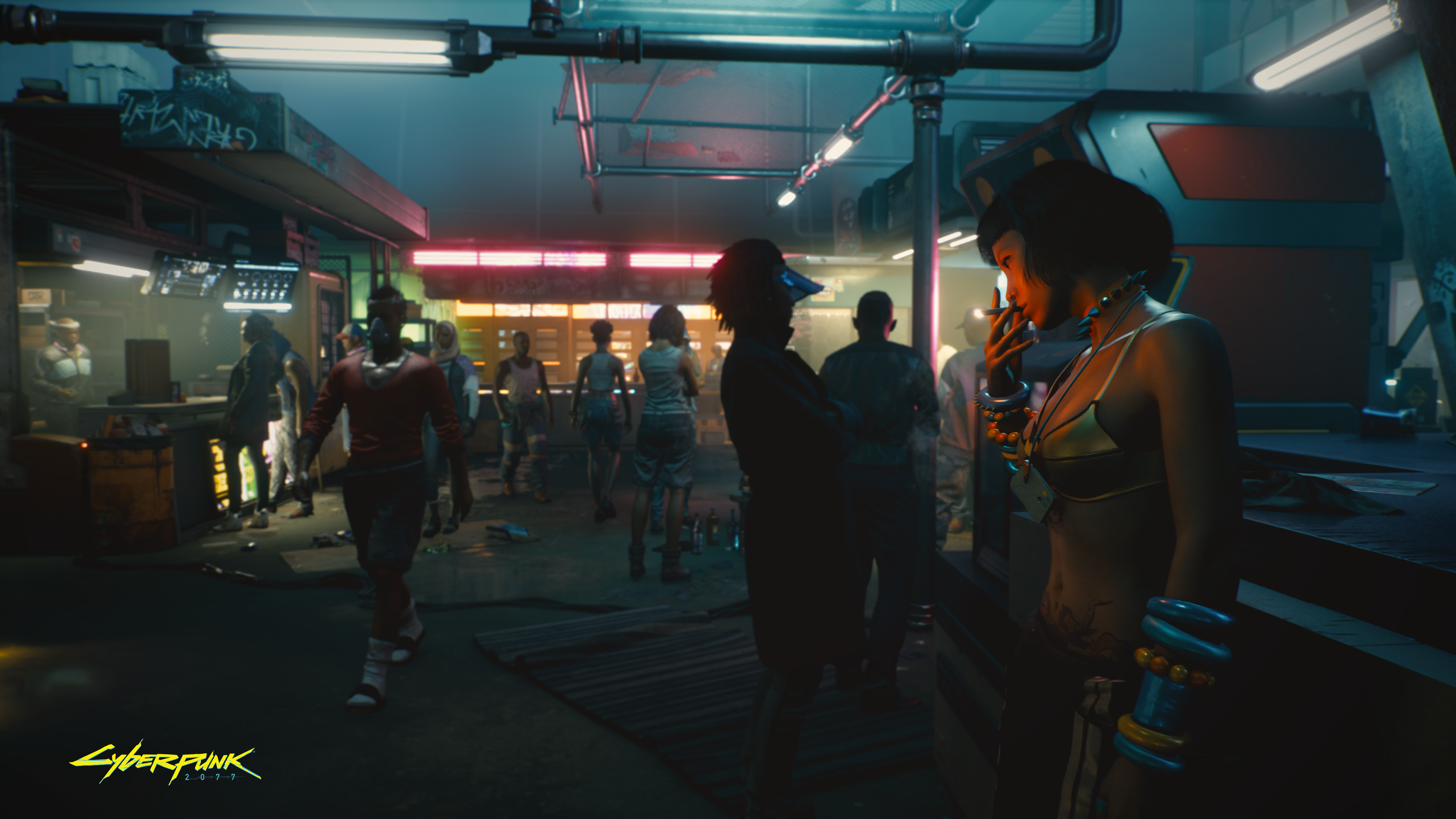



AWAY: The Survival Series
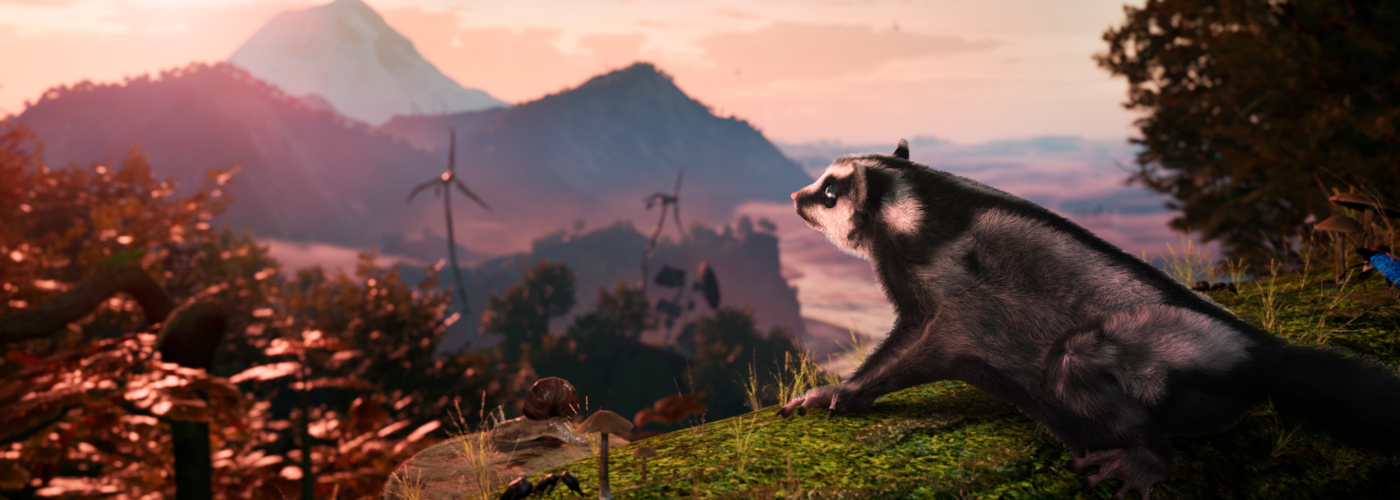
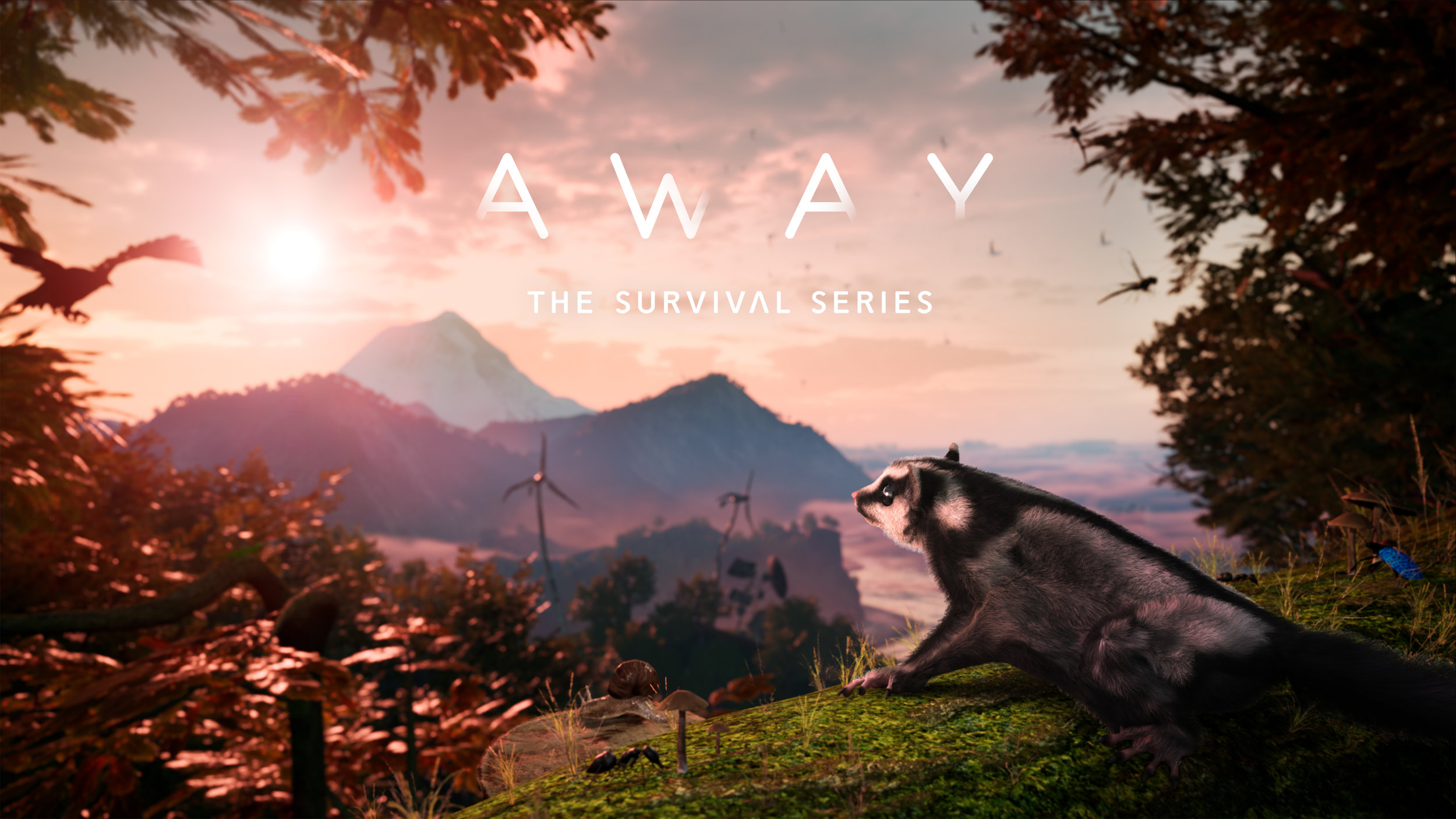
It seems like a story pops up on social media every few days that details another person expressing their love of videogames who doesn’t fit the tired stereotype of “basement-dwelling teenager who rarely sees the outside world”. And with game design tools being more accessible than ever before, developers are finding ever more interesting ways to cater to the growing collection of niche audiences and expand the scope of what can be considered a videogame. Breaking Walls playable wildlife documentary, AWAY: The Survival Series, is just another example of the ingenuity of game design teams, and brings all of the drama of Blue Planet and Planet Earth straight to your gaming machine!
At A Glance
| Scores | |
| Visuals | 7 /10 |
| Sound | 7 /10 |
| Gameplay | 4.5 /10 |
| Overall | 5 /10 |
| Positives | + Original ‘play your own documentary’ premise + Great atmospheric soundtrack + Interesting mix of locations to explore |
| Negatives | – Camera and controlling the sugar glider can be a struggle – A lot of repeated narration – Number of noticeable bugs (and not the kind you eat!) |
| Price (When Reviewed) | £24.99 |
| Our Playtime | 6 hours |
| Available On | PS4, PS5, PC |
AWAY first caught my eye at the Gamescom event earlier in the year and I was immediately drawn to the idea of playing through a documentary. The game sees you play as a plucky sugar glider joey who’s been separated from his family, and must find a way to survive the many dangers of the forest for long enough to finally be reunited. With a cute protagonist looking to overcome the odds in a world where everything is out to get you, I could immediately draw the parallels between videogames and wildlife documentaries and couldn’t help but wonder why two genres haven’t been merged before!
The opening of AWAY shows great promise, with both the animals and environments being nicely depicted; we’re introduced to our joey and his family, and given a brief overview of the world and its inhabitants. We learn that the game takes place after a huge environmental event known as ‘The Shift’, which has led to huge changes in the ecosystem and the dominant species of the planet, giving Breaking Walls some latitude in putting beasties together that might not be entirely accurate in the real world. Much of the story takes place among the leafy floor and canopy of the forest, but there’s a mix of other interesting locations that are nicely introduced that offer a nice variety in scenery as you continue to explore. Players taking a particular interest in the fate of the world can scour the world for lost podcast entries that shed more light on The Shift and the part mankind has to play in the event, but this is a purely optional plot line for those who wish to do some extra snooping around.
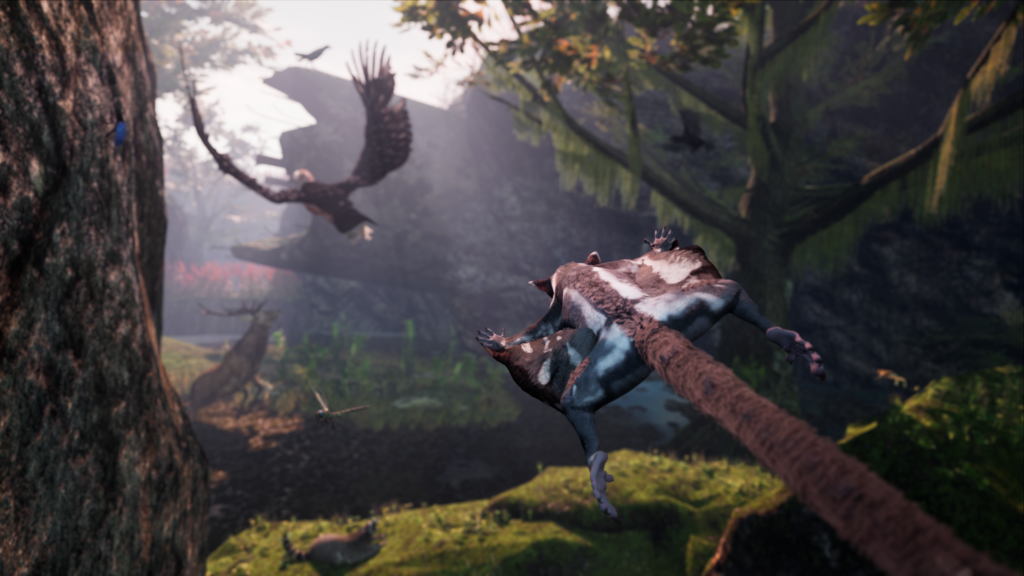
The gameplay has you platforming your way through the forest; over rocks and along branches, and gliding from tree to tree as you try to reunite with your mother and sister. You have to eat mushrooms and insects for nourishment and battle spiders, lizards and other beasties to move forwards on your journey. There are moments in the story where the predators are too big and tough for the sugar glider to take down, opening up the opportunity for some stealth and chase sections that add some variety to proceedings too. Breaking Walls have done a really good job of emulating common scenes from documentaries and allowing you to play them out, and their appreciation and respect for the source material is clear to see.
A nature documentary can’t exist without two things – interesting animals and a knowledgeable narrator to guide you through the action, and AWAY does a great job of voicing the plight of the sugar glider on his journey through the forest. The majority of the game is narrated with a calm and familiar tone but adds the odd spike of excitement when something unexpected happens that fits the premise almost perfectly. And bolstering the voice-work is a stellar orchestral soundtrack that really shines, adding untold drama to a scuffle with a scorpion or a battle with a black mamba. But as much as I enjoyed the voice acting, I did feel like the script began to slip from the premise a little as the game went on, with the matter-of-fact “way of the jungle” tone giving way to much more emotive language, anthropomorphising our sugar glider pretty heavy handedly considering the game is being pitched as a playable documentary.
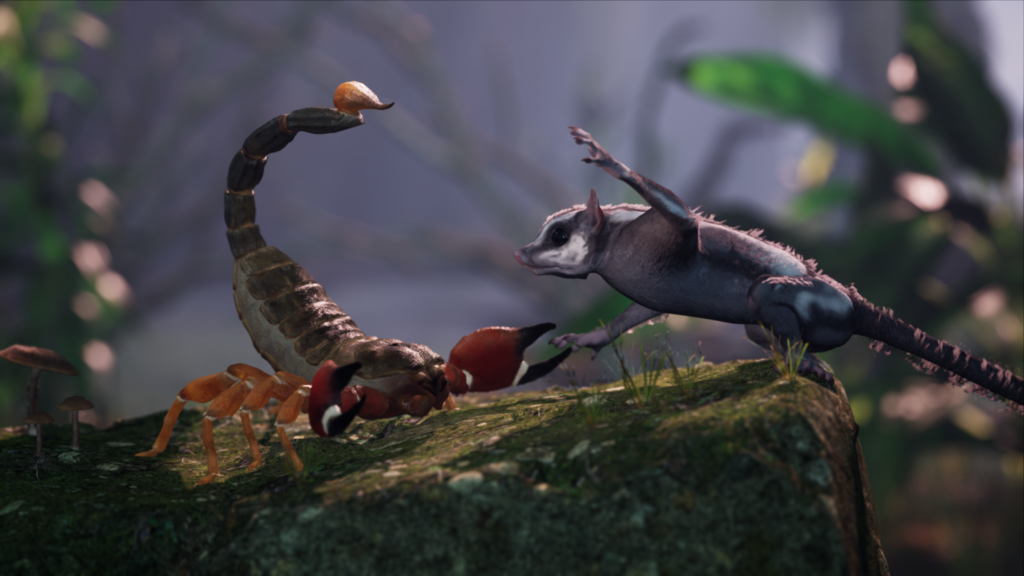
While our trusty narrator describes the sugar glider as a nimble and agile little creature, the game’s design has other ideas, and controlling the marsupial can be a pretty clunky affair. The joey has the strangest jumping arc I’ve experienced in any game and would prove a complete nightmare if you weren’t able to lock-on and jump to your destination. Clambering up the trunks of trees and scurrying around in the branches is a really fun idea but is made a massive pain by the camera and controls, with your direction of travel changing every time you reach a different surface, leading to you constantly going back and forth or around in circles. The gliding controls are particularly annoying though, with the game pretty much ensuring that you have no chance of accurately correcting your flight path if you weren’t pointing in the right direction when you jump, and you’ll find yourself plunging into the deadly waters repeatedly as a result. The camera too has a lot to answer for, with helpful perspectives hard to come by when you’re locked onto an enemy, moving through a tight space or clambering through the trees.
I might have been able to overcome the difficult controls and camera issues if the rest of the game had a gleaming polish, but there’s a number of bugs and annoyances that definitely takes some of the fun out of the experience. In my play through I found noticeable inconsistency in the hit detection that led to me being killed by enemies striking a few feet from where I was standing, as well as enemies not reacting to my attacks despite us standing nose-to-nose and fighting one another. Button presses in the menus seemed to be very unresponsive and there were times when the narration would either cut off mid-sentence as a new section loaded or overrun, meaning that you didn’t get the introduction to the new scenario and were left in the dark. The final straw was during one particularly tense scene where I had quicktime events that I failed because the camera looked into the sky and I couldn’t see the prompts on screen. Another sizeable annoyance was the amount of repeated narration that would play every time that you strayed into some thorns or ate something unpleasant – it was characterful the first, or maybe second time, but I had grown very tired of the snippet after hearing it 5-10 times in a short period. The gripes are a real shame because with an enjoyable (if far-fetched) story there’s clearly a foundation for something great.
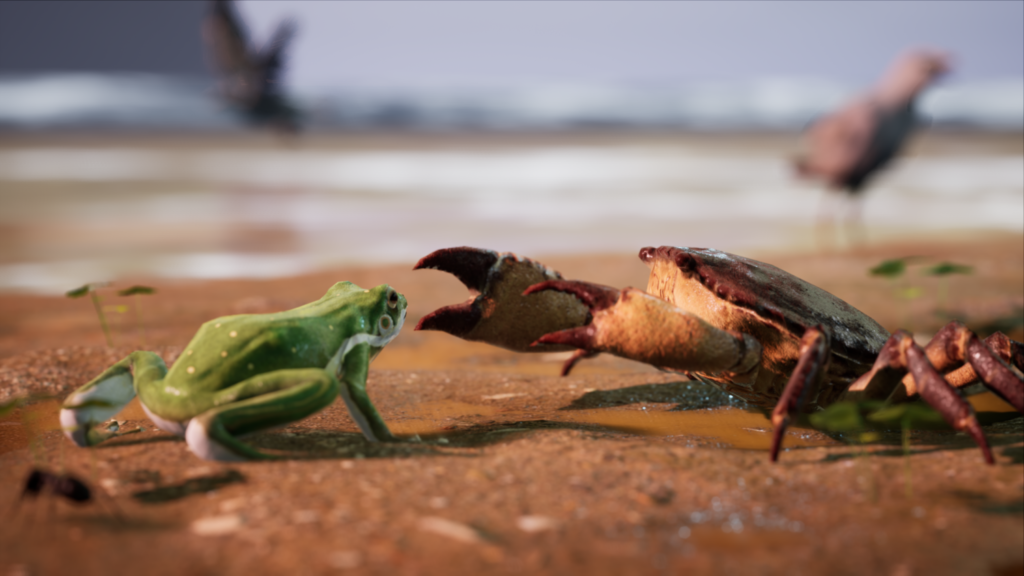
Post-game I tried out the exploration mode that adds a bunch of new animals for you to try out and offers the opportunity to explore the forest untethered by the plot line. While still in its Beta stage, this mode shows promise and might offer a peek into what’s to come from Breaking Walls in the future. There’s great potential for this mode to be expanded into something more open-ended than this first foray, and the thought of exploring multiple non-linear plotlines would definitely entice me back for more animal adventures in the future.
As a lover of both wildlife documentaries and videogames I absolutely wanted to fall in love with AWAY, but the rough edges of the gameplay and some bugginess proved just too much of a burr under the saddle to be entirely enjoyable. The frustrating gliding controls, a rogue camera, and a smattering of weird and wonderful bugs throws salt on the rich earth of a great idea. The premise is a marvellous one and I applaud the team at Breaking Walls for doing just that – smashing down another wall of what can be made into a videogame. I hope that the team continues with their ‘Survival Series’ and works to bring more playable nature stories to life in the future – I have every faith that this could be a wonderful franchise with only some refinement.
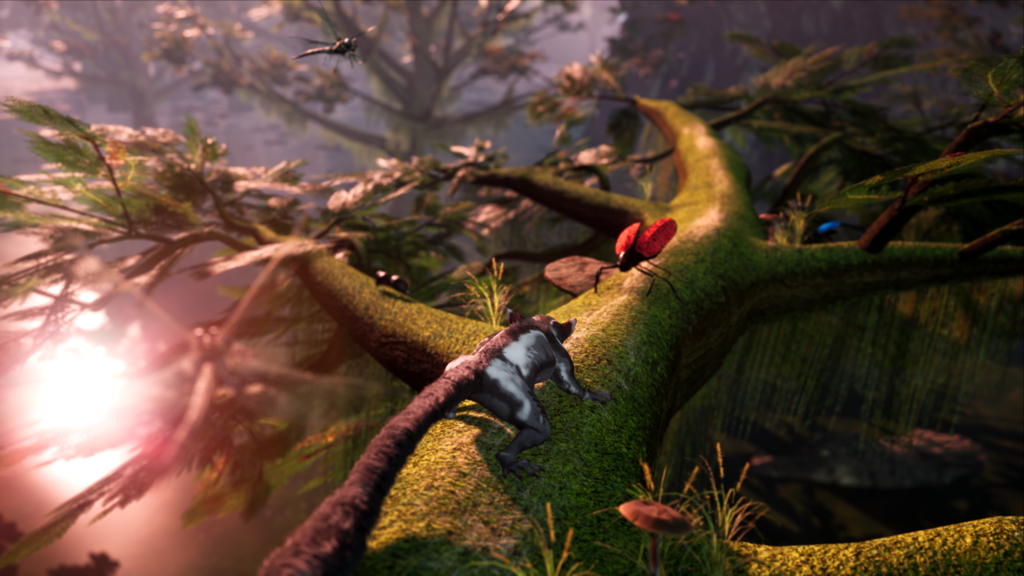

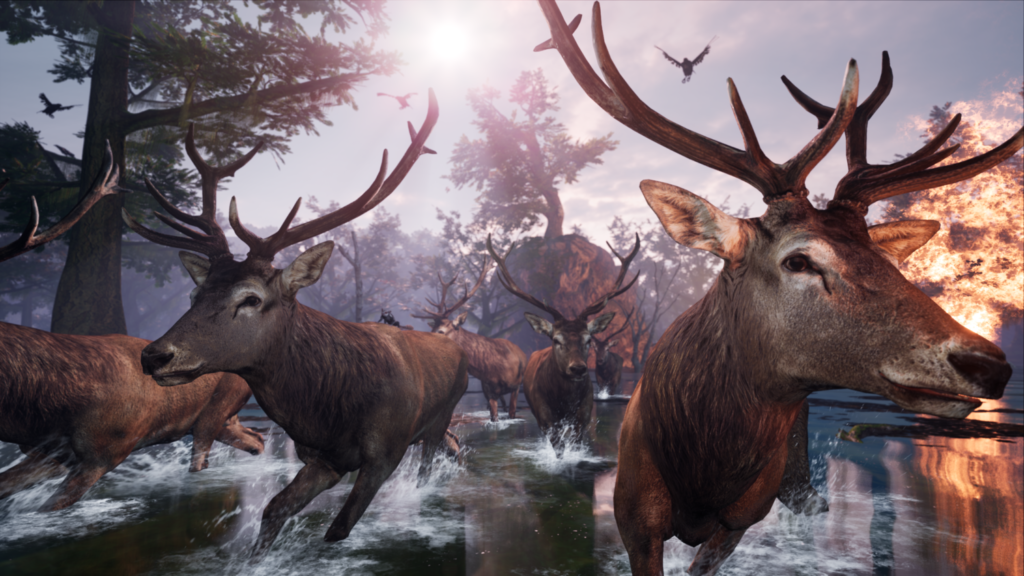


In the interest of full disclosure, the publisher provided VGamingNews with a copy of the game in order to conduct this review.
Neptunia x Senran Kagura: Ninja Wars
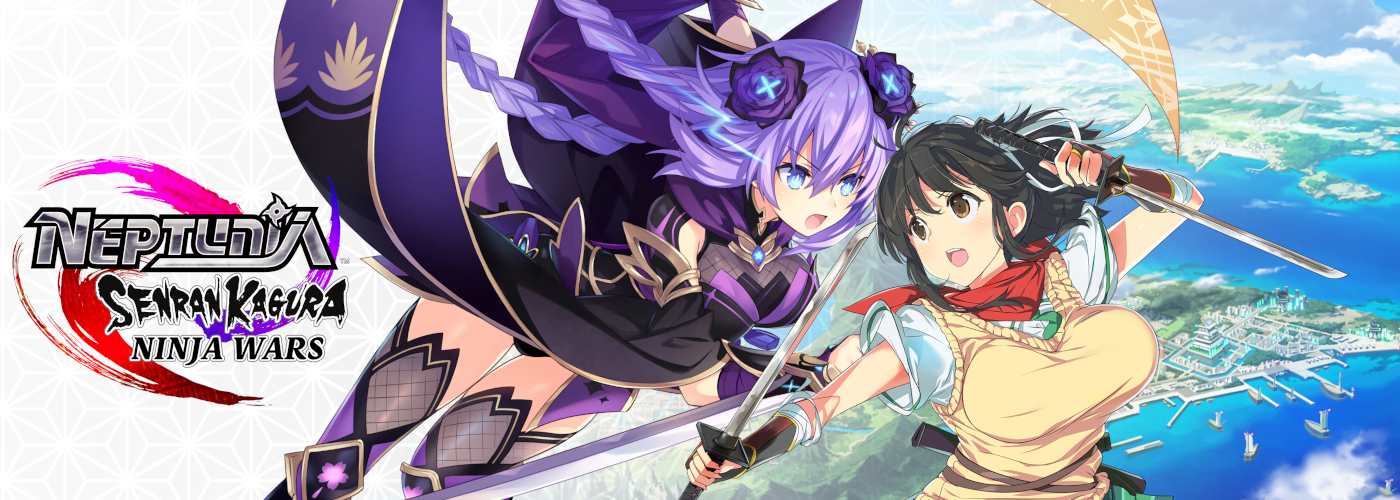

After starting 2021 having played zero games in the series, I am now officially three games into the Hyperdimension Neptunia franchise of RPGs from Idea Factory & Compile Heart. After testing the waters with the PS5 exclusive Neptunia ReVerse, I’ve been tasked with picking up my Dualshock 4 and loading up Neptunia X Senran Kagura: Ninja Wars for the PlayStation 4. Here’s what I thought of this crossover between an RPG full of humour, with a game known for ninjas… and fan service.
At A Glance
| Scores | |
| Visuals | 7 /10 |
| Sound | 6 /10 |
| Gameplay | 7 /10 |
| Overall | 7 /10 |
| Positives | +Finely balanced crossover +Irreverent story full of humour +Delightful combat |
| Negatives | -Painfully short -Uninspired dungeons -OTT voice acting |
| Price (When Reviewed) | £44.99 |
| Our Playtime | 10 Hours |
| Available On | PlayStation 4, PC |
Neptunia x Senran Kagura: Ninja Wars is a crossover game between the Hyperdimension Neptunia series and Marvelous Inc.’s ninja side scroller, Senran Kagura. Both series have been around for the past decade, with Senran making the debut on the 3DS and Neptunia appearing on thePlayStation 3 before growing into two highly successful franchises. As fans wait for the next entry in each respective series, the idea of a crossover between Neptune and Asuka was born, and while Marvelous Inc oversaw the development, it was ultimately Idea Factory & Compile Heart that created and published this strange and humourous ninja RPG.
The Neptunia series has never taken itself seriously and Neptunia x Senran is no exception. From the off, Neptune points out to the players that “Our two universes merging their narratives is causing some kind of rift in our story continuity”. This is a game created purely for the fans but even so, there is definitely appeal for a wider audience. There is the usual attempt at a story; Gamninjustri (as opposed to Gamindustri, the home world of Hyperdimension Neptunia), is a Ninja-star shaped land where factions of ninjas are at war with one another for unknown reasons. It just so happens that the two biggest factions are from our titular houses, Neptunia and Senran Kagura, but as a menace from elsewhere appears and starts destroying the land, it’s up to both houses to come together and fight off the evil. It’s a by-the-numbers story and plays out just fine… for a crossover. It’s a story that is secondary to the fact that the two universes are colliding.
Like the other games in the Hyperdimension Neptunia series I’ve experienced so far, it’s not the destination that’s being advertised, it’s the journey, and Neptunia x Senran certainly is a fun ride while it lasts. We’re presented with the dungeon crawling RPG set up we’ve seen in previous Neptune games. And again, thethe story unfolds by text and static images, rather than having to explore the different regions to find your next quest, I think this is how Compile Heart and Idea Factory manage to churn out so many games, but that’s not a bad thing! Navigating menus is straightforward enough but the game comes into its own when you do make it into the free roaming dungeons. The combat is a slick hack-and-slash affair with one character being the sole focus at all times, while one other waits to tag in and provide support if needed. The buddy system feels refined and fluid and while you can’t quite reach Devil May Cry level of combos, hacking away with a sword, then throwing ninja stars at enemies further away definitely felt like I was fighting like a ninja. To go along with the combat is a spirit-board upgrade system. This gives various buffs such as additional Exp. for beating certain enemy types, but ultimately isn’t needed – I set the spirit orbs to grind money and didn’t run into any problems with enemies throughout my time.
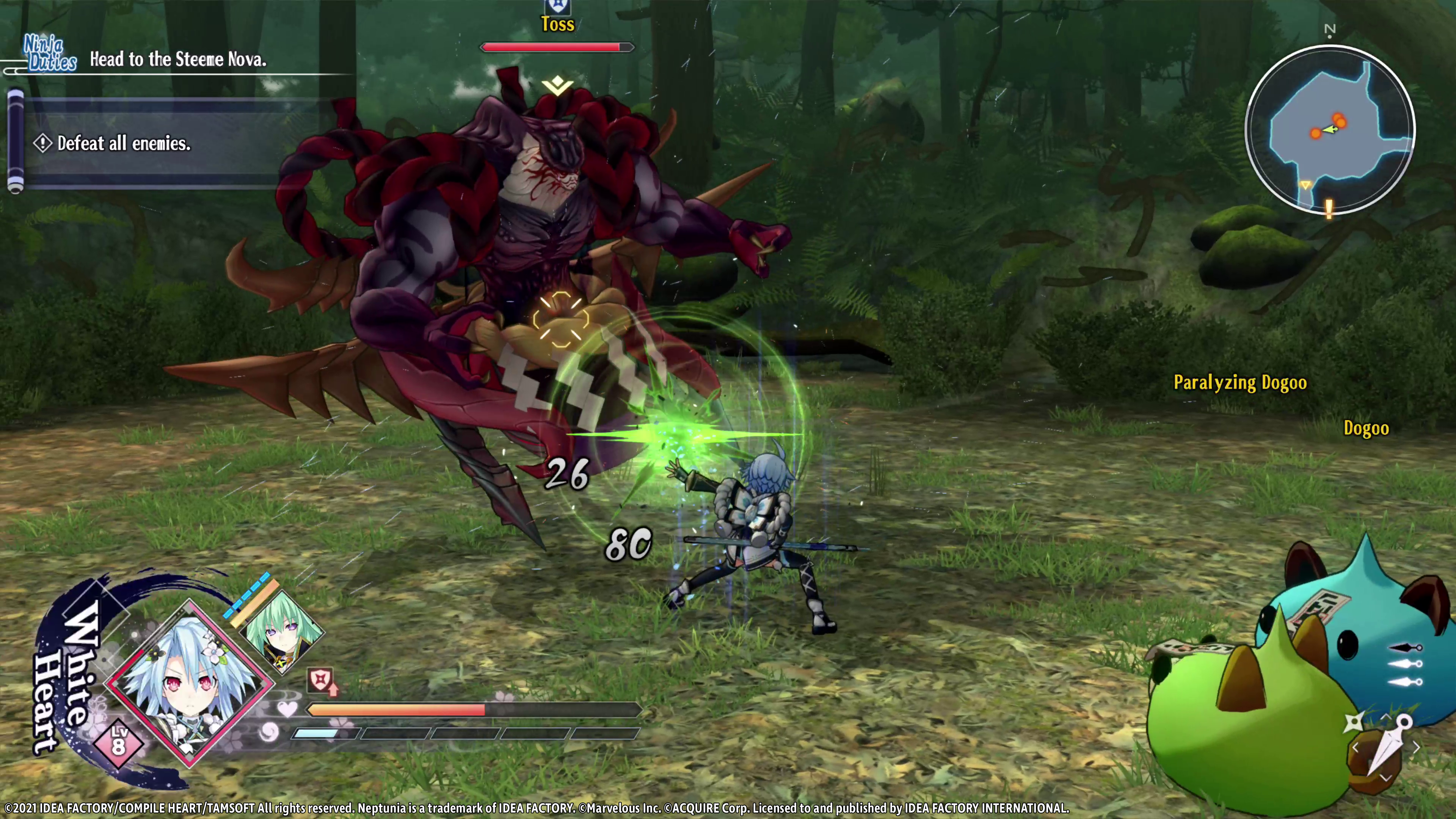
Neptunia x Senran Kagura: Ninja Wars combat is lovely and is complemented by graphics of the game. Although there is barely a ninja mask between them, the characters are beautifully drawn, and are fully voiced in Japanese, with no English option; this might be a relief to some who are happy that they don’t have to sit through awful anime dubbing, the characters, especially Nep, are as loud and high pitched as ever and even though the backgrounds are typically static, they look lovely – showing off historical Japanese architecture. When out exploring the world the dungeons do unfortunately let the side down as they are basic in appearance – if it wasn’t for the colour of the floor, or the trees/mountains in the background there would be nothing to distinguish between each area, which was disappointing when every other aspect of the game looks great.
For two series that have elements of pure fan service, you’d be forgiven for thinking Ninja Wars is anything but straight smut and thirst-content for a certain type of crowd, and while elements are certainly present, such as one character being jealous of the size of another’s *ahem* assets, every time conversations are brought up, they are swiftly handled with a shot of humour that completely changes the subject and the game moves on. It’s a brilliant move that makes fun of the image both series are known for.
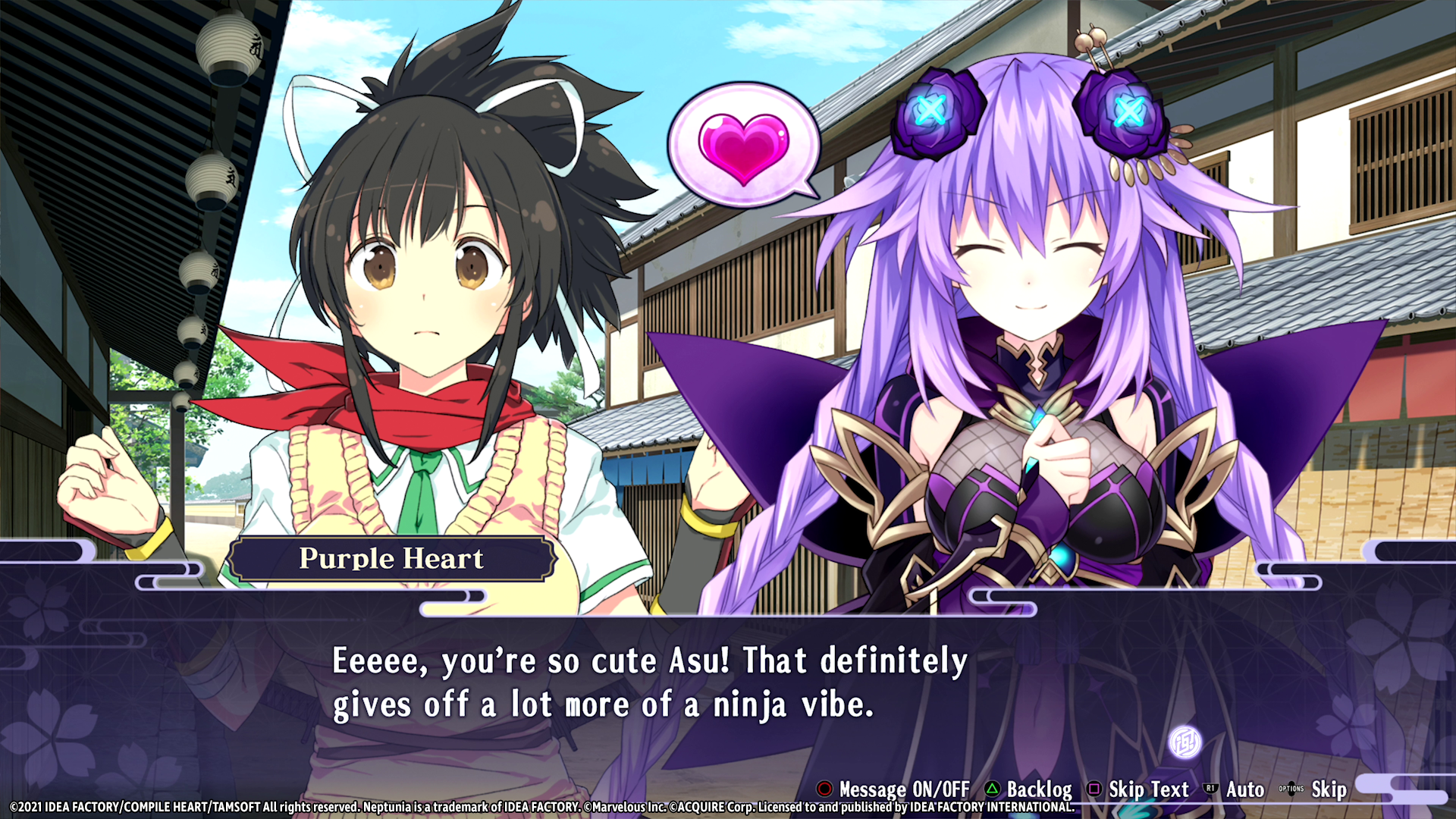
It’s an odd decision that Neptunia x Senran Kagura: Ninja Wars was released on the PS4 when Neptunia ReVerse was an exclusive release on Sony’s latest console a few months earlier, as the crossover title is objectively better looking and perhaps could have benefitted from the upgraded technology. I think the choice here came to which console has sold more units, don’t get me wrong, I don’t think either game pushes their respective consoles, it just seems like a step backward not to use the more modern machine when another title in the series already does so. It’s also odd looking at Ninja Wars, releasing on an older console with improvements, such as all enemies being on the battlefield.
The one thing that goes against Neptunia x Senran Kagura: Ninja Wars is that it is painfully short. The sum of the game can be finished to 100% in around 10 hours, which is shorter than other RPG tutorials, let alone a fully fledged J-RPG. Even when taking into account the optional fetch quests. As I found myself playing the game and experiencing what was on offer, the story was brought to its conclusion, and I was left sitting on my sofa with a raised eyebrow as “Is that it?” left my mouth. I managed to tie everything up neatly and there’s little replayability other than changing my main character for fighting the bad guys.
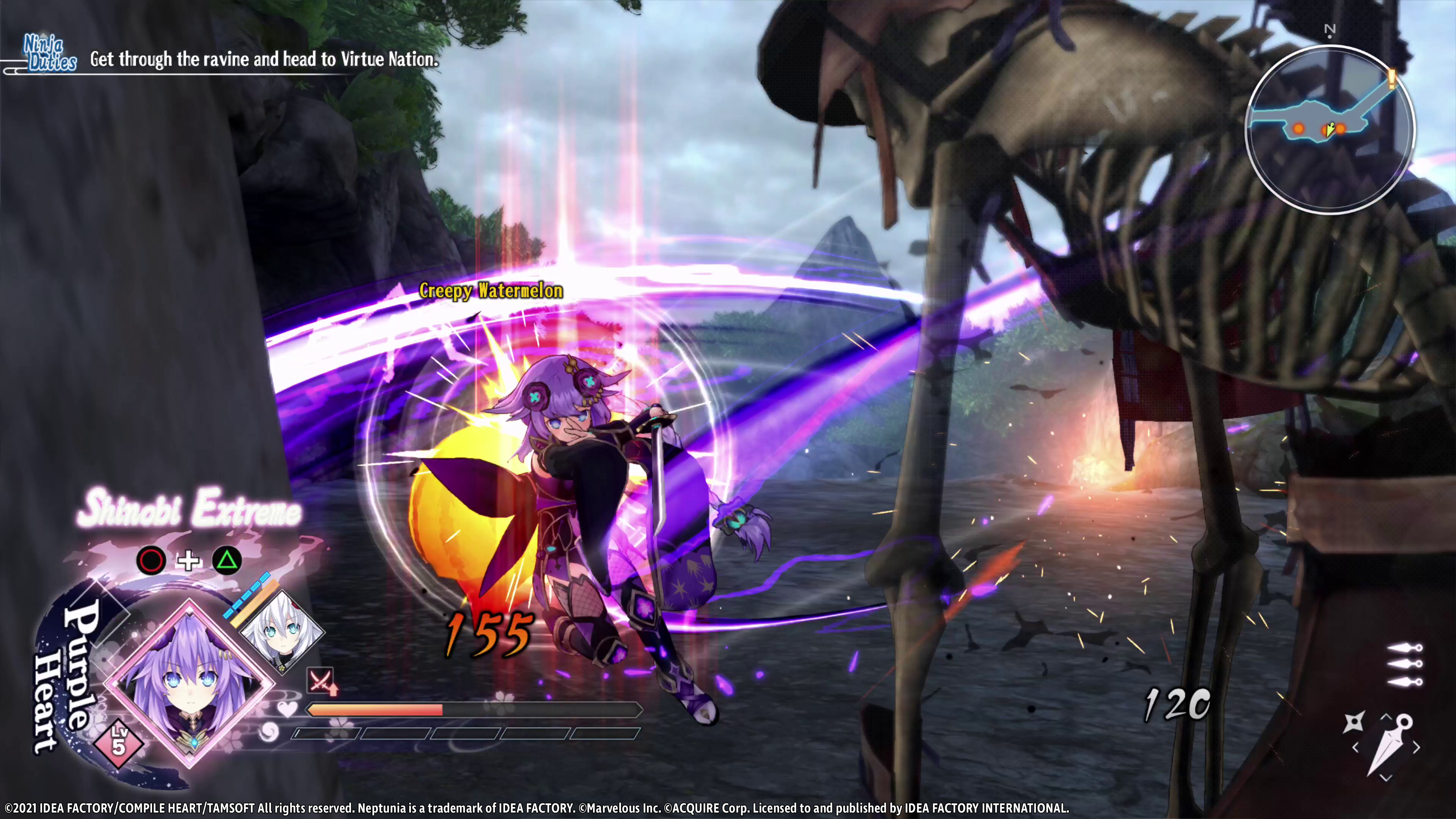
In fact, that’s how I would sum up my time with Neptunia x Senran Kagura: Ninja Wars – a game that’s full of humour, fluid gameplay and a story, which despite being hamfisted to bring two series together, was ridiculous enough to work. It is more Neptunia than Senran Kagura so I think it’ll appeal to the former fan base rather than the latter, but the run time left a bitter taste – just as the game was starting to roll, it ended. The team up between both franchises was a strange choice from the outset but it’s well crafted and surprisingly well done, at least until the developers seemingly decided it was time for the Neptunia and Senran Kagura girls to wrap up and go home. That being said, on my little journey of playing all the games in the Neptunia series, Neptunia x Senran Kagura: Ninja Wars is currently sitting at the top of the pile so it definitely isn’t all bad.
In the interest of full disclosure, the publisher provided VGamingNews with a copy of the game in order to conduct this review.
Xuan Yuan Sword 7
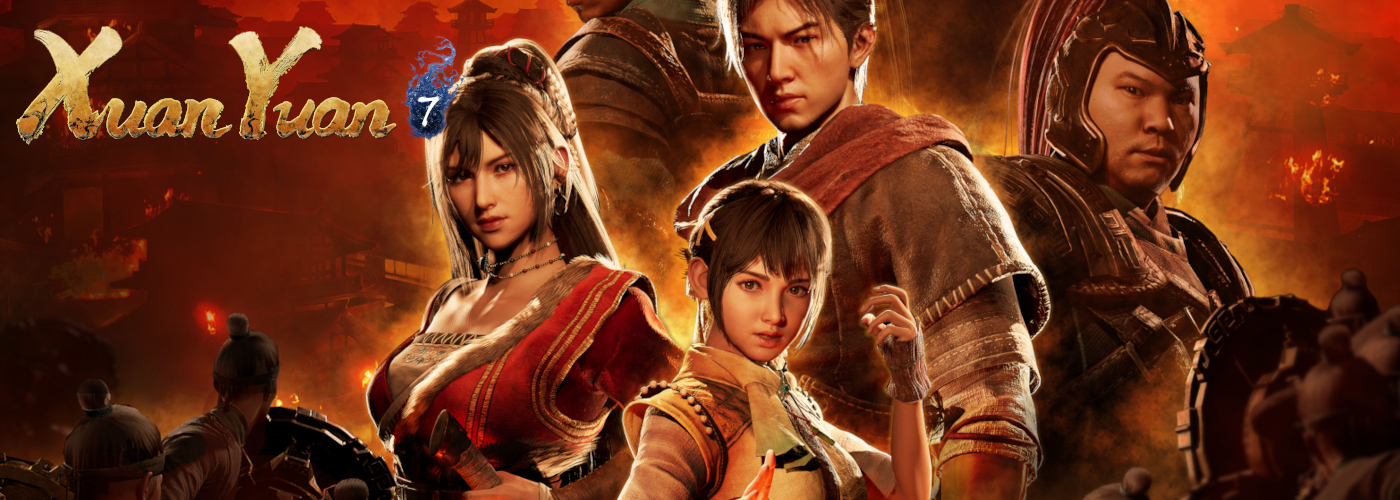
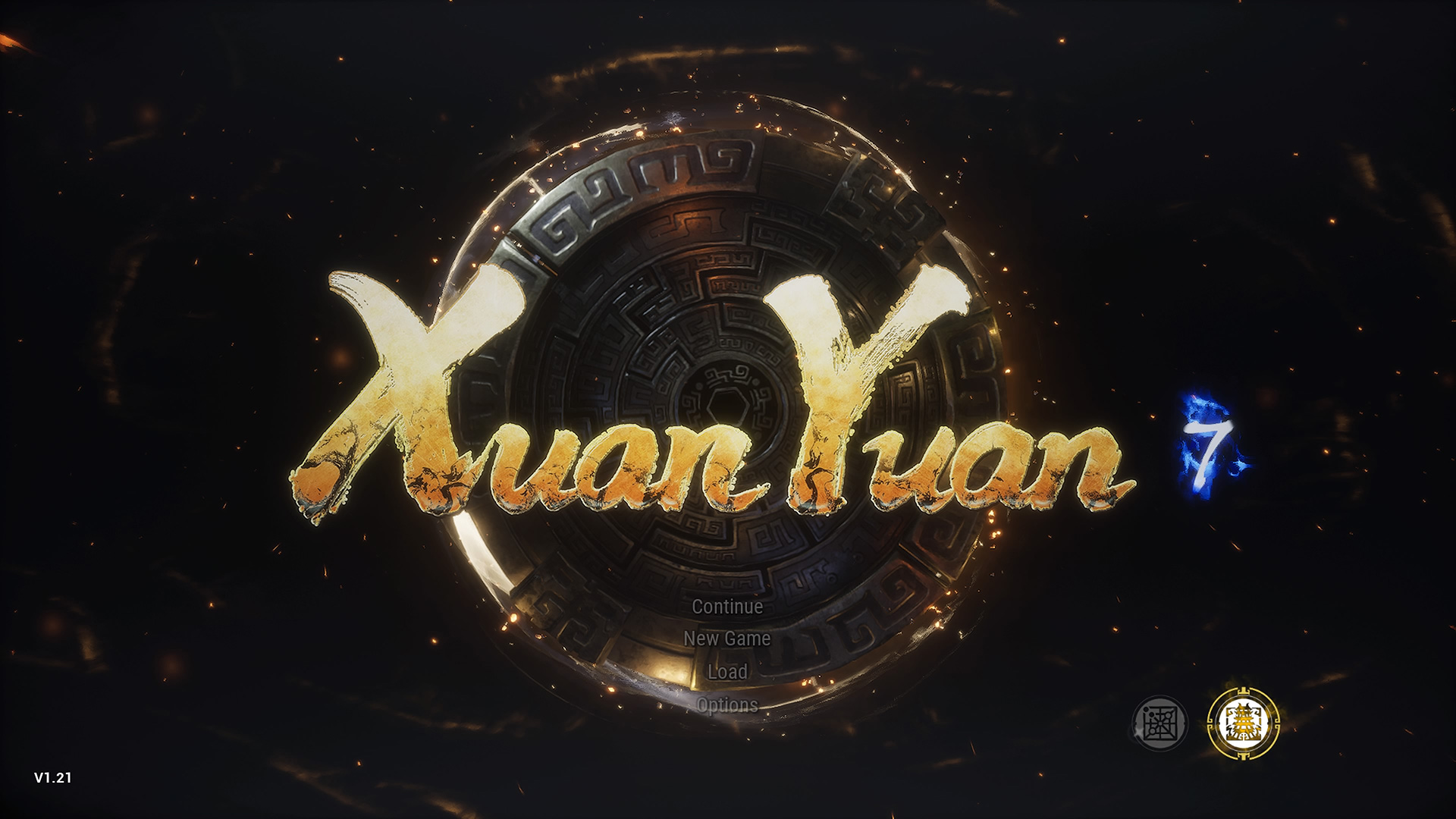
Xuan-Yuan Sword 7 (XYS7) is the latest in a thirty-one year old series of RPGs based on early Chinese history and mythology. While long established in its home market the series has only recently begun to be translated and distributed in the West, with spin-off title The Gate of Firmament releasing in 2016. Unfortunately, while this entry in the series has some highlights, they are buried deep between some things that are lost in translation, others that are just not translated, and a few I’d rather hadn’t been translated at all.
At A Glance
| Scores | |
| Visuals | 5/10 |
| Sound | 6/10 |
| Gameplay | 5/10 |
| Overall | 5/10 |
| Positives | + Good Boss Battles |
| + Interesting Setting | |
| Negatives | – Non-boss combat lacks any challenge |
| – Dated visuals | |
| – Very slow to get going | |
| Launch Price | £30 |
| Our Playtime | 20 hours |
| Available On | PS4, PC, Xbox One |
For an “action” RPG, XYS7 begins very, very slowly. I’d estimate that over the first two hours of playtime less than half of that was spent actually playing. Instead I was subjugated to many, many slowly paced and clunky cutscenes. Occasionally, as a treat, the game would take a quick break from the cutscenes to let me walk the character forward a dozen paces (and forwards ONLY – the turning controls were locked) before resuming. Later the cutscenes also included some quick-time events, although the “quick-time” aspect of these was somewhat lacking as there didn’t appear to be any actual timing challenge to them – I could hit the button prompt at any time.
With so many cutscenes you would assume the developers were showing off their world or their characters, or imparting a meaningful story. Sadly, you would be mistaken. The animations and graphical quality overall left me surprised to find this was a port of a game released only last year, while the voice acting manages to be bad enough that it can be in Chinese and I can still confidently say that it was bad. A stand-out comes in the flashbacks, where the characters’ adult actors continue to voice them as children. Some of the readings do improve as the game goes on, but it manages to front-load a lot of the worst examples seemingly in an effort to ensure that only the truly dedicated will ever experience them.
Combat makes up the majority of the gameplay, and is fairly mainstay ARPG fare. You have a light attack and heavy attack, block and dodge, and there is a parry mechanic for good measure as well. The challenge, however, is light, and against the normal foes you will encounter none of the nuance is at all necessary. Enemies are generally lacking in aggression and very easy to stun-lock. The first several hours of the game will see you fighting wolves, and not much else. A short cutscene introduced a special wolf, raising my hopes for something a little more meaty, but it turned out to behave identically to the regular wolves but with a bit more health. And blue.
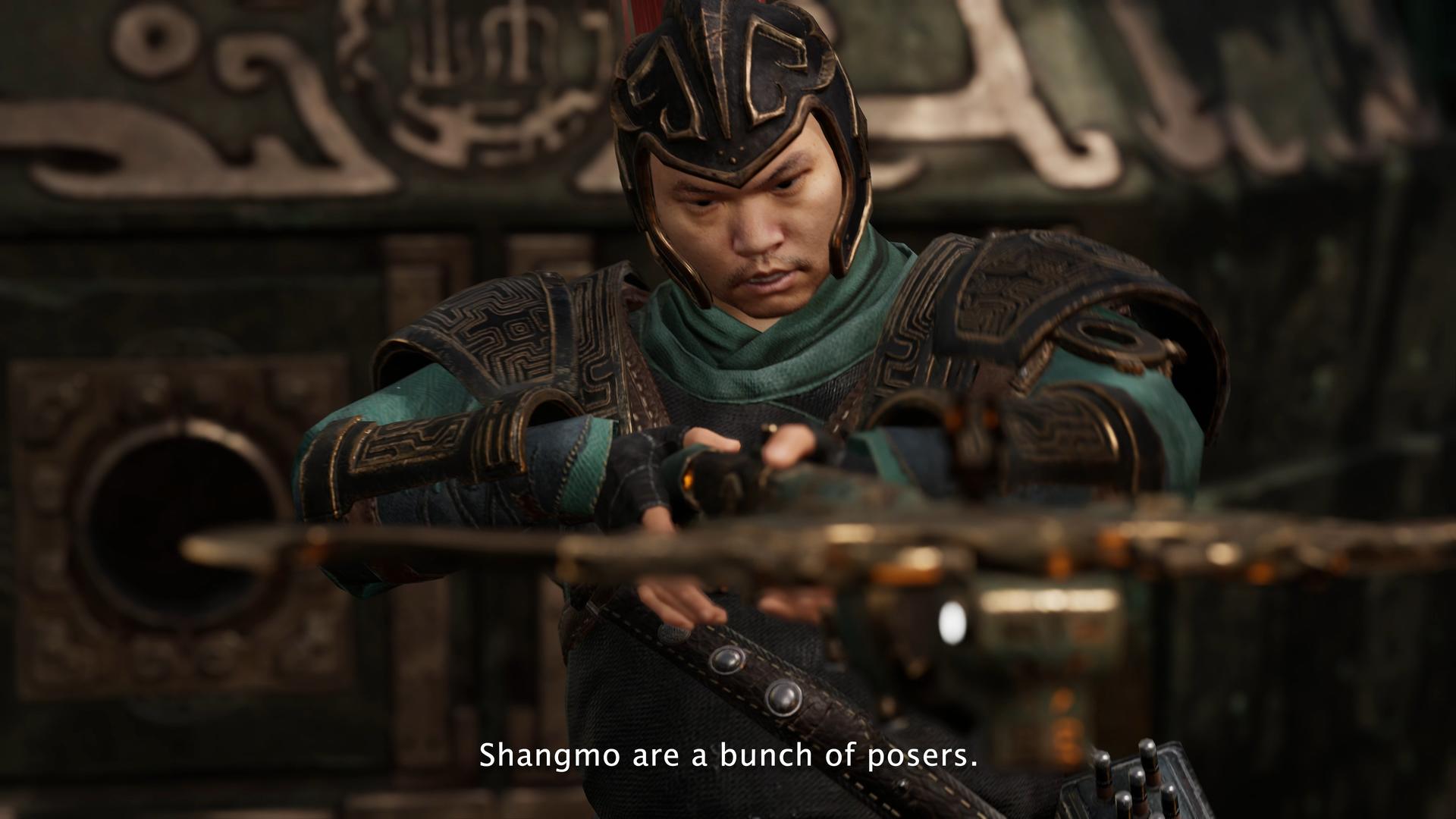
When the game finally comes to introduce bosses things become a little more interesting. Unfortunately this is also likely to prove frustrating, as the mindless button mashing that had easily gotten me through to this point (two hours in, give or take) failed completely, and I was forced to learn the actual mechanics of the combat system. This is what all the preceding combat encounters should have done – what they are for, from a very basic game design principle! The boss fights – which after the first start to come on fairly regularly – are also quite good. Certainly this is no Dark Souls, but the bosses require you to read their moveset and respond, think at least a little tactically and the designs can be quite imaginative as well, although the first is, of course, just a big wolf. But red.
As with combat, the characters and story are developed further as the game goes on, but it takes far, far too long to get moving with anything. At around the 4 hour mark the game begins to find its stride, the pacing finally picking up, the endless cutscenes at last allowing some gameplay to occur without constant interruption, and some more interesting mechanics come to play with the party members and their combat abilities. Even the general world enemies begin to have some variety, though they continue to be too easily stun-locked and quickly dispatched by my apparently endless stamina meter (I didn’t realise basic attacks even cost stamina until several hours in…).
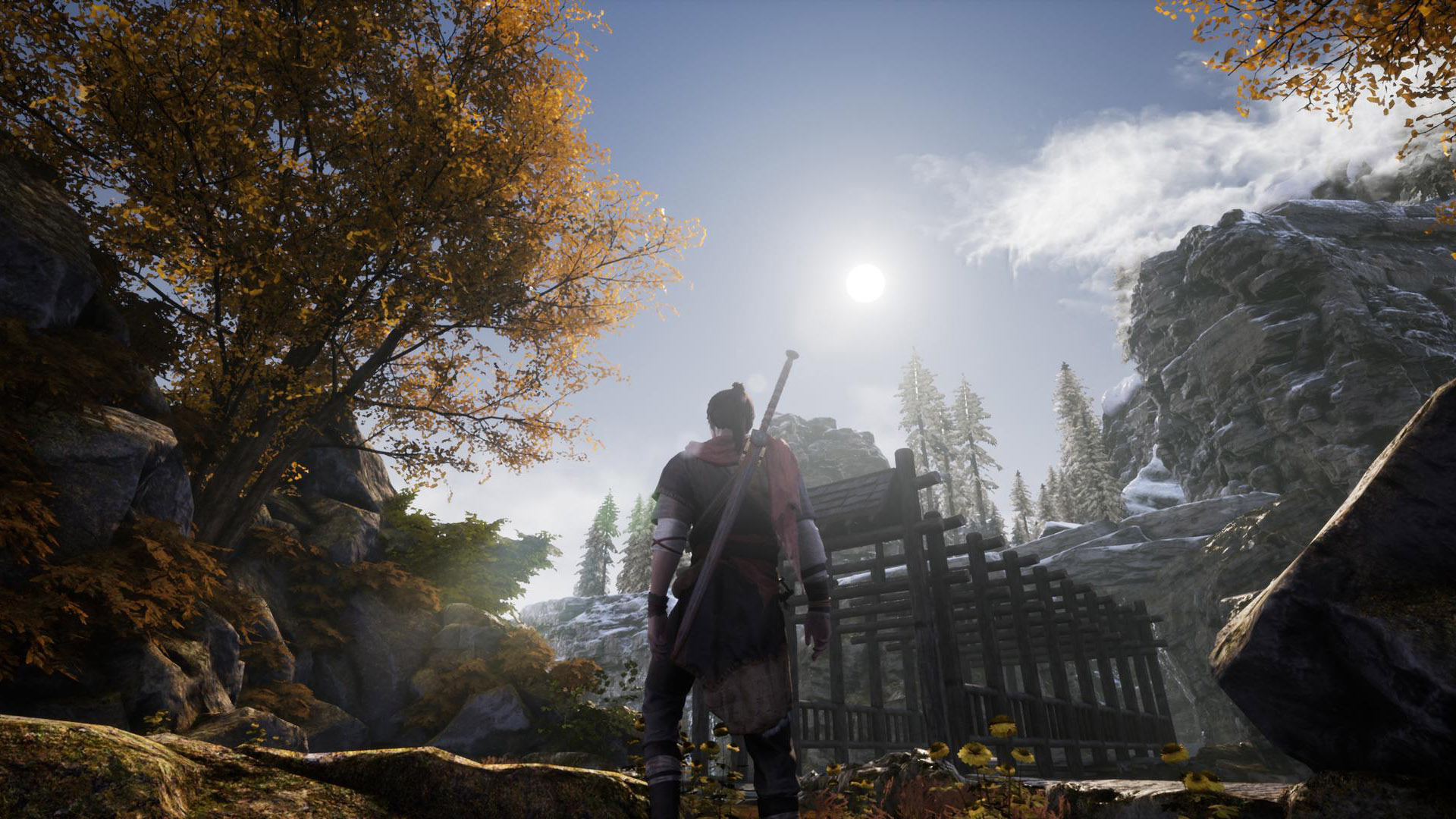
It’s a shame that this game locks what good content it has behind a boredom-wall of turgid cutscenes and pointless, button mashing combat. It isn’t a long game, with around 20 hours of content, but it feels like it could have been a stronger contender if a lot had been cut and a more interesting, better paced story had been presented as the hook. Everything it does well can be found better elsewhere, and, while I haven’t played it myself, the reception to the series’ own first translated title The Gate of the Firmament is far, far more positive. If the setting intrigues you it’s still one that isn’t well served in many Western games, but go in prepared to grind through a few hours of chaff before you get to what good content there is.
In the interest of full disclosure, the publisher provided VGamingNews with a copy of the game in order to conduct this review.
Golf Club: Wasteland


Golf Club: Wasteland is a strangely compelling experience. I found the gameplay frustrating, yet your protagonist isn’t playing golf through the ruins of a post-apocalyptic Earth to “win”, and to get the most from this game neither should you.
At a Glance
| Scores | |
| Visuals | 7 /10 |
| Sound | 10 /10 |
| Gameplay | 5 /10 |
| Overall | 7 /10 |
| Positives | + Radio Nostalgia from Mars |
| + Intriguing World-Building Nuggets | |
| + Very nicely animated | |
| Negatives | – Imprecise, clunky controls |
| – Character story quite minimalist | |
| – Whilst story driven, you might need to be a golf fan to get the most enjoyment out of it | |
| Launch Price | £9.99 |
| Our Playtime | 4 hours (game) + 2 (soundtrack) |
| Available On | PS4, Nintendo Switch, PC, Xbox One |
The premise of the game is a future in which Earth has been ravaged and destroyed by unchecked capitalism, the wealthy elite eventually fleeing the planet for Mars only to return to play golf among the ruins left behind. Highly fantastically, I’m sure you’d agree. The game is prefaced by a claim that it is, of course, entirely fictional and any references to real people are not to be taken too seriously. Immediately after this we are told the colony on Mars is named “Tesla City”, so don’t go in expecting subtlety in the satire.
The animations of your pot-bellied, bald, spacesuited golfer sum up a lot of my experiences with this game. Demagog Studio’s artists have brilliantly captured the frustration of a putt falling just shy of the hole or of a long shot bouncing off some obstacle and ending up right back where it started; the slap of his hand on his helmet a perfect accompaniment to the plop of the ball splashing into water or the rustle as it disappears into a pile of leaves, never to be seen again. When a shot lands perfectly, though, rolling into the hole with a satisfying rattle? Nothing. He just jetpacks on out of there, on to the next one, going through the motions.
The storytelling in the game is quite minimal. A single paragraph of exposition is all the set up you get, or really need, and from there on out there are single-line level prompts from the perspective of a survivor watching you play. Beating levels under par will grant further diary entries, giving insight into your own character’s journey and mindset. I’m not a big fan of this last point – the gameplay (we’ll get there) and level difficulty acting as a barrier to your own character’s motivation is a pretty big misstep, and I’d have much rather access to these plot points were swapped – give me the story of my character for “free”, and lock the observer’s viewpoint behind the challenge.
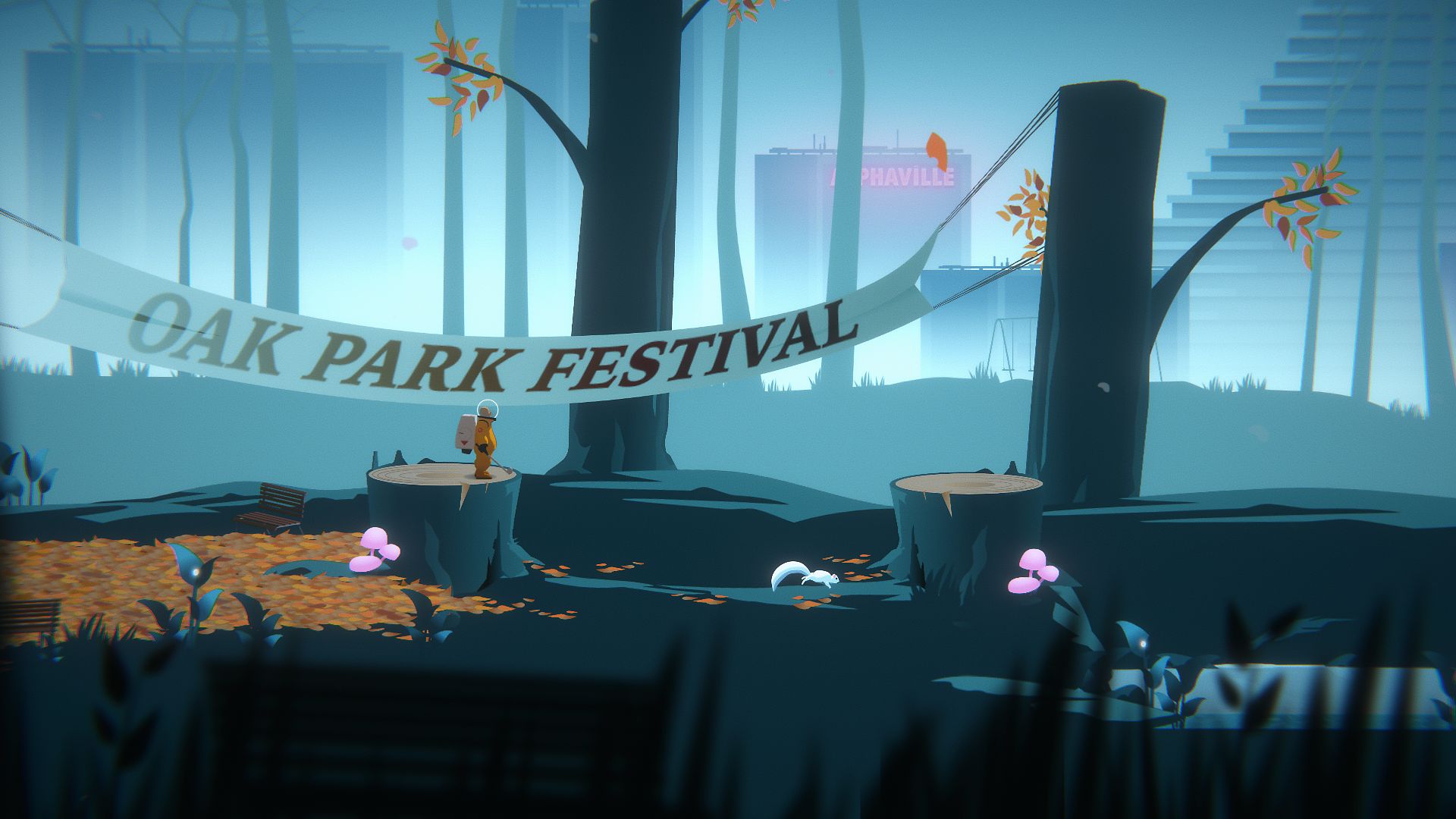
There’s one more aspect to the story telling that I’ll come back to – I’d like to finish on a positive. First, though, the actual golf.
It’s not very good. I’ll confess that I don’t really care for the game in either its real life form or in other video games, but in Golf Club: Wasteland I found the controls to be imprecise and inconsistent which, coupled with the challenging minimum shot limitations, led to frustration coming pretty easily. You can disable the shot limit, and even skip levels if you get stuck for long enough, but doing so means you lose out on the character journals so you’ll end up – in what is presumably unironically called “storymode” – missing out on the actual story of your character, why he is on Earth and what he is really looking for (hint: it is not a good score). One caveat to this worth bearing in mind is that I have heard the gameplay is significantly more precise on PC, specifically with mouse and keyboard, than console (I reviewed this game on Playstation).
The environments you pass through tell part of the story as well, though I found the art to be a little hit-and-miss. Some details are beautifully drawn, again I’d return to the wonderful animations of your golfer, yet at other times the environments – especially where they expand into larger levels – feel overly simplistic, sometimes quite poorly concealing the necessary contrivance of a 2D platform level structure. Compounding on the control issues they can also sometimes be hard to read, leading to more guesswork than I’d like as to what is background detail and what is an actual wall or floor that will affect my ball.
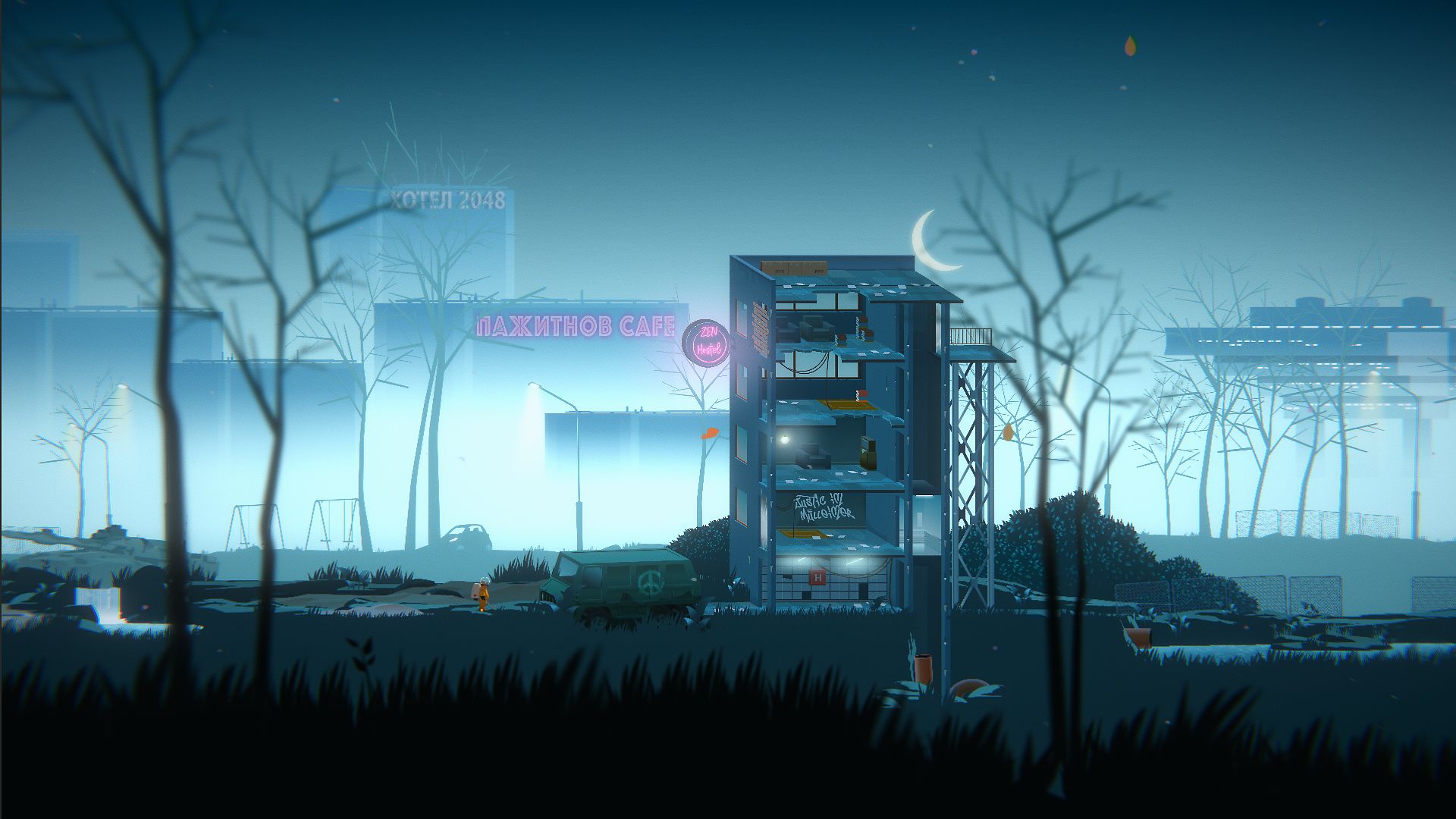
So, overall we have a mediocre golfing game, your enjoyment of which will probably depend pretty heavily on how much you like that kind of thing; some interesting world building and a satire of extinction-level capitalism in a game you can probably finish in a few hours. For the asking price that’s not too bad, but the saving grace that I’ve left until last is the game’s soundtrack: Radio Nostalgia from Mars.
This hour or so of a fictional radio show wears a lot of hats. It delivers much of the world building and ambient storytelling, conveys the melancholic, laid back atmosphere, even – quite seamlessly – injecting itself into the actual story of your protagonist. The character stories, framed as callers to the radio station telling their memories of the lost homeworld, are diverse and varied, consistently well written and delivered, painting a strikingly human picture of the loss, rather than the cataclysm. It’s genuinely moving stuff, and tonely perfect for the game. There were times I’d set the controller down and just listen. I’m listening to it right now while writing this review. If your experience of in-game radio stations is limited to the likes of GTA then Radio Nostalgia shows how much more can be done with this medium when it’s working fully in cooperation with the mood that the game is trying to evoke. It’s a beautiful lament to a lost planet from the bereaved escapees, and the atmosphere it gives to the game is fantastic.
If a lonely journey through the ruins of civilization sounds at all appealing then I’d still recommend Golf Club: Wasteland despite its shortcomings. The mechanics of play might be imprecise and somewhat lacking, but the ambience is superb and, if you really don’t like the golf, then the soundtrack is on Spotify.
Minute of Islands

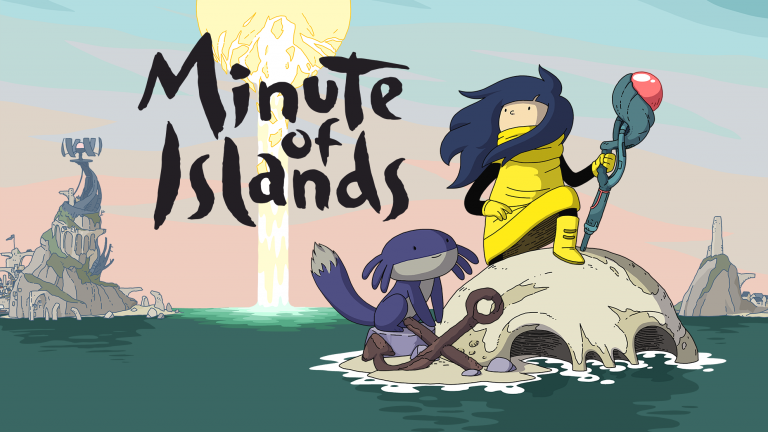
Minute of Islands is a narrative-focused puzzle-platformer from German developer Studio Fizbin. You play as Mo, an engineer of sorts, who wakes one day in her underground hideout to a worrying quiet- the machines have gone silent. From here you guide her exploration of a post-apocalyptic archipelago on a mission to wake the giants who power the great subterranean engines that keep the air breathable. Really, though, this is a story about death, grieving; about letting go and moving on.
At A Glance
| Scores | |
| Visuals | 8 /10 |
| Sound | 9 /10 |
| Gameplay | 6 /10 |
| Overall | 8 /10 |
| Positives | + Beautiful art style and music |
| + Engaging and moving story | |
| + Tactile puzzle mechanics | |
| Negatives | – Platforming a little weak |
| – Some puzzles a bit repetitive | |
| – Story won’t be to everyone’s taste | |
| Launch Price | £15.99 |
| Our Playtime | 8 hours |
| Available On | PS4, Nintendo Switch, PC, Xbox One |
The art style is beautiful, even more so in motion than screenshots can capture, with a huge amount of detail and character captured in the hand-drawn environments. It’s a distinctive style, and works fantastically to capture some truly macabre and gory imagery that, in a more realistic style, would be unpleasantly graphic and highly disturbing. Mo’s world is one where a fungal plague has driven an exodus on the islands of almost all their inhabitants, leaving rot, ruin and a concerning amount of sea life in various stages of dismemberment and decay.
It’s certainly worth knowing going in that, despite the cheerful artistic style, this is a game that deals in quite heavy topics. You can certainly play the first half or so ignoring the metaphorical commentary, but it becomes increasingly dominant as the game goes on. As I said above, the game is very much about grief, loss and coping, so if you find these topics at all uncomfortable then you would probably be better off giving it a miss.
In terms of the gameplay, Minute of Islands is a quite standard 2D puzzle platformer. You guide Mo around the wonderfully detailed environments discovering story nuggets, talking to the remaining survivors and working to clear the air. This is largely done through finding and activating a series of air purifiers that clear the fungal spores from the air, then opening the giants’ underground dwellings and reawakening them. One particularly obtuse puzzle at about the half-way point of the game aside, none of these really gave me any pause, but the challenge of the puzzles isn’t really the point of the game. They can be a little repetitive, but the mechanics of solving them – mostly using the “omni-switch” multi-tool thingamajig – feel pleasantly tactile, and they work well in service of the story. That said, if a challenging platform experience is what you are looking for you would be better off looking elsewhere.
As well as the topic of death, the game also has things to say about the idea of destiny and chosen-one stories. Mo’s omni-switch is a tool given to her by the giants, with which she alone can maintain the engines they have created and now power from beneath the surface. As the game progresses, however, doubt is cast on this role through the excellent narration and dialogue with the survivors – mostly members of Mo’s own family who appear to have remained due to her. I feel this topic could have been explored a little deeper, though with the game mechanics being already somewhat shallow I’d be concerned that extending the game would only lead to a more diluted experience. As it stands it should take around 6-8 hours to get through which feels a good length for the type of game, and decent value for the price as well.
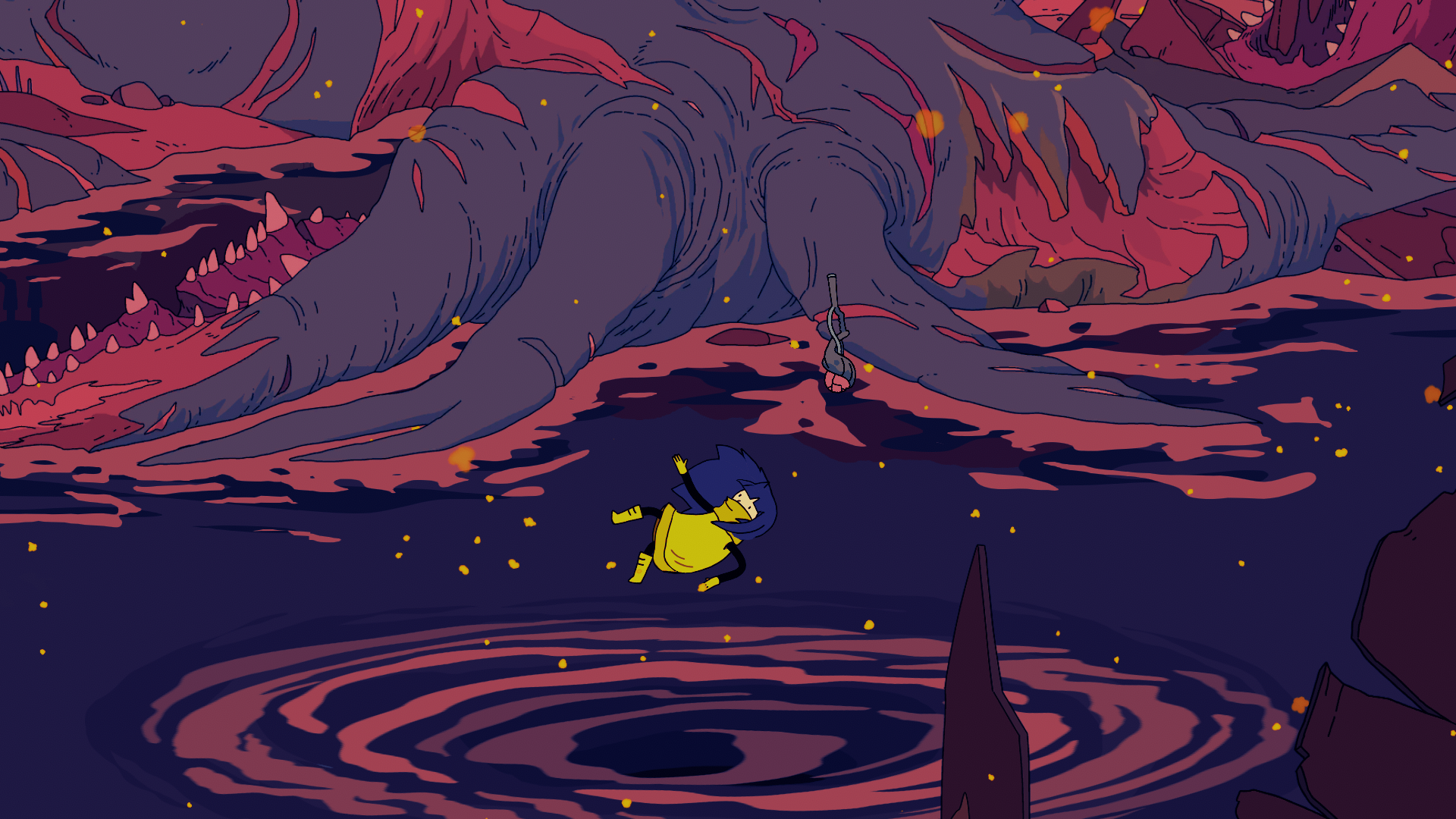
The sound design is excellent, with some very atmospheric music that really builds up as the game comes to its conclusion. The narration is superb, beginning as just characterful exposition but becoming more critical as the game goes on, giving voice to Mo’s own self-doubt about her role in this failing world. The noises of the giants’ underground caverns are highly evocative, from the laboured breathing of their enormous lungs to the uncomfortably organic squelching of the arterial valve-like doorways. These are machines that wouldn’t be out of place in something dreamt up by H. R. Giger, but the art style of the game takes some of that edge off.
Overall Minute of Islands is a deep, thoughtful narrative experience with just enough weight to its simple gameplay to keep interest as you push through to its conclusion. It deals with some difficult subject matter in an engaging and challenging story, and while there are aspects I’d have liked to see it go a little deeper on, for the length and scope of the game I really can’t fault it.
In the interest of full disclosure, the publisher provided VGamingNews with a copy of the game in order to conduct this review.
Just Die Already

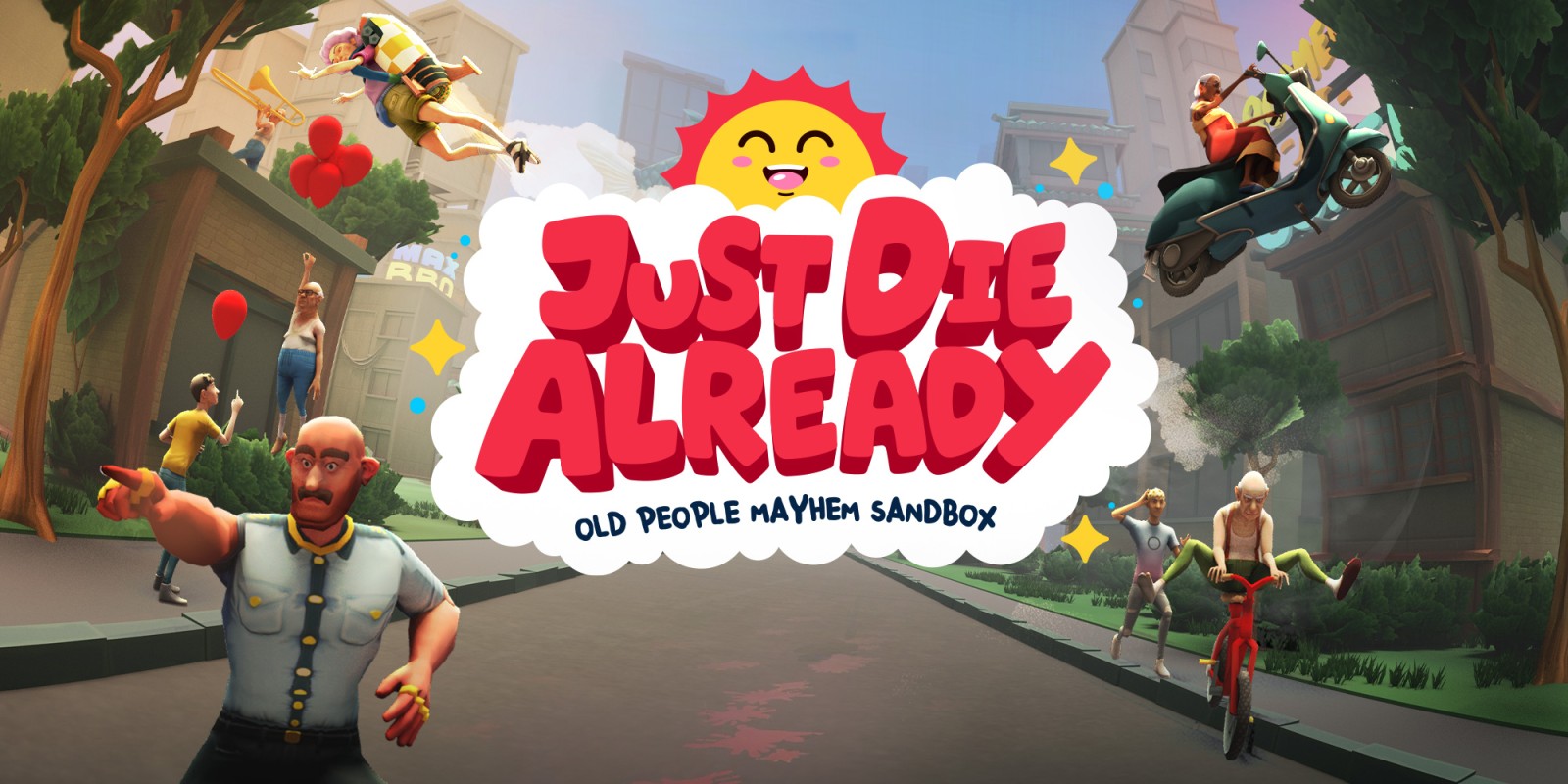
When Goat Simulator burst onto the scene in 2014, it unwittingly gave birth to the physics based, mayhem sandbox genre. You know the one; your main aim is to cause as much destruction as possible, all the while fighting against controls, and the lighter side of gravity. Fast forward to 2021 and Just Die Already from Swedish developer DoubleMoose arrives onto the scene with a similar premise, but instead of a psychotic goat causing mischief, four elderly avatars take the mantle with one goal in mind – to die in a spectacularly violent manner.
At A Glance
| Scores | |
| Visuals | 7/10 |
| Sound | 3/10 |
| Gameplay | 5/10 |
| Overall | 5/10 |
| Positives | + Great premise |
| + Potty humour | |
| + Comedic visuals kept me entertained | |
| Negatives | – Bucket list surprisingly dull to complete |
| – Glitchy to the point of unplayable | |
| – Lack of soundtrack | |
| Launch Price | £11.49 |
| Our Playtime | 8 hours |
| Available On | PlayStation 4, Nintendo Switch, Xbox One, PC |
Just Die Already revolves around a humorous concept – old people get bored of life and want to check out in as fun a way as possible. And to begin with, it’s remarkably fun. JDA’s opening tutorial surrounds breaking out of the retirement home during some old fart’s birthday party, and after learning the controls and thoroughly ruining the day, I was left to my own devices. The objective couldn’t be clearer, kill yourself repetedly. This ranges from getting run over to, getting sliced by sword wielding monks when entering their monastery and everything in between.
To give Just Die Already some form of purpose to the proceedings, DoubleMoose has given a Bucket List of objectives to complete. Most revolve around dying in some horrible form or another or dragging unsuspecting NPCs into your antics, but there are the odd puzzles to complete too, just to spice things up. The puzzles range from shooting some hoops, to matching a diagram on a door by mutilating the OAP. As these challenges are scratched off the to-do list, they grant you various unlockables that you can pick up from vending machines scattered around the world, which felt a bit strange, I have to say. I don’t know about you, but I’ve never seen an elderly person use a vending machine before – let alone collect an uzi out of one. Anyway, more areas open up as you explore the city and more objectives are added to the bucket list. There’s also a PVP mode where you can take on the to-do list, and each other, together. It did strike me that for someone who wants to check out of life so badly, the ever growing list certainly prolonged death for our oldies.
The challenges presented seemed straightforward, but there is one big blocker – the head of the care home if you will – trying to stop the fun… The controls. As with Goat Simulator, Just Die Already has awkward controls by design, and while this is done deliberately for the four-legged nuisance, I’m not so sure this is the case with JDA. The controls were fighting me every step of the way. Every time I climbed a ladder, there was an awkward sequence of button presses, often resulting in falling to the bottom and having to start again. Weapon controls, especially for the two handed variety, weren’t much better as they were uncoordinated to the point they verged on useless, and that’s before I went in for an attack! But the biggest problem comes in the form of respawning. When I became a literal pound of flesh and had to restart, a button press took me to the nearest bin – or trash can for our American readers. To get out was supposed to be a quick press of the jump button, but in reality this turned into hammering ‘Triangle’ and manipulating the OAP into positions that a 20-year-old contortionist would be proud of.

This wouldn’t be so frustrating if restarts were uncommon, but Just Die Already makes it all too easy for limbs and heads to fly off, quickly resulting in the pensioner becoming a torso flopping around in the middle of the street. Though this did lead to the most joyous part of JDA; the visuals. The cartoony style of the game meant that the fountains of blood spewing from every freshly cut orifice was always a joy to behold. There’s very little music in the game; I only heard people shouting and cars honking as I blocked up the road with carnage, but no matter how silent the game was, or how annoying I was finding the controls, the appearance of a pensioner running, holding his own head like a pumpkin, always brought a smile to my face.

Just Die Already sounds amazing on paper; old people foregoing common sense and wanting to end their lives in the most over the top way imaginable. The overall look of the game is hilarious and there is some fun to be found in short bursts. It’s just a shame that the controls, as deliberately janky as they appeared to be, are so unforgiving to the point that they spoil the experience and sapped all of the energy from the game. The destruction that was caused by trying to complete the ever growing to-do list should have been hilarious, but it became more of a chore to endure rather than anything enjoyable.
In the interest of full disclosure, the publisher provided VGamingNews with a copy of the game in order to conduct this review.


